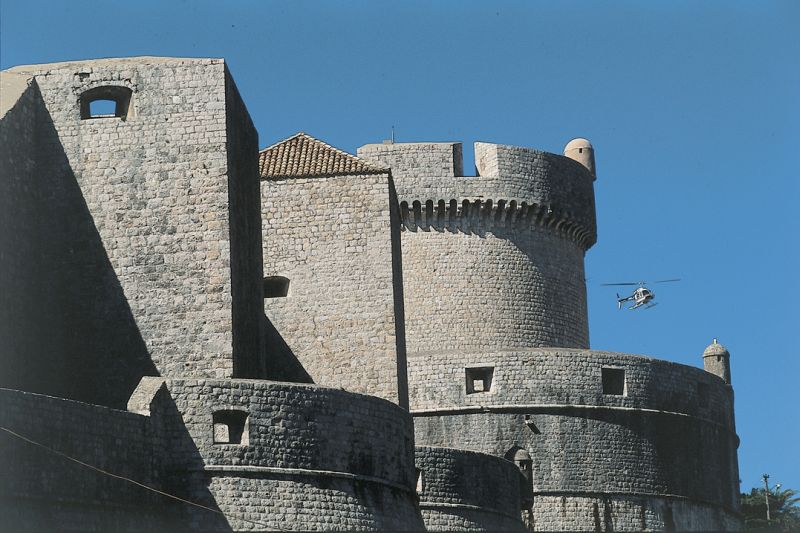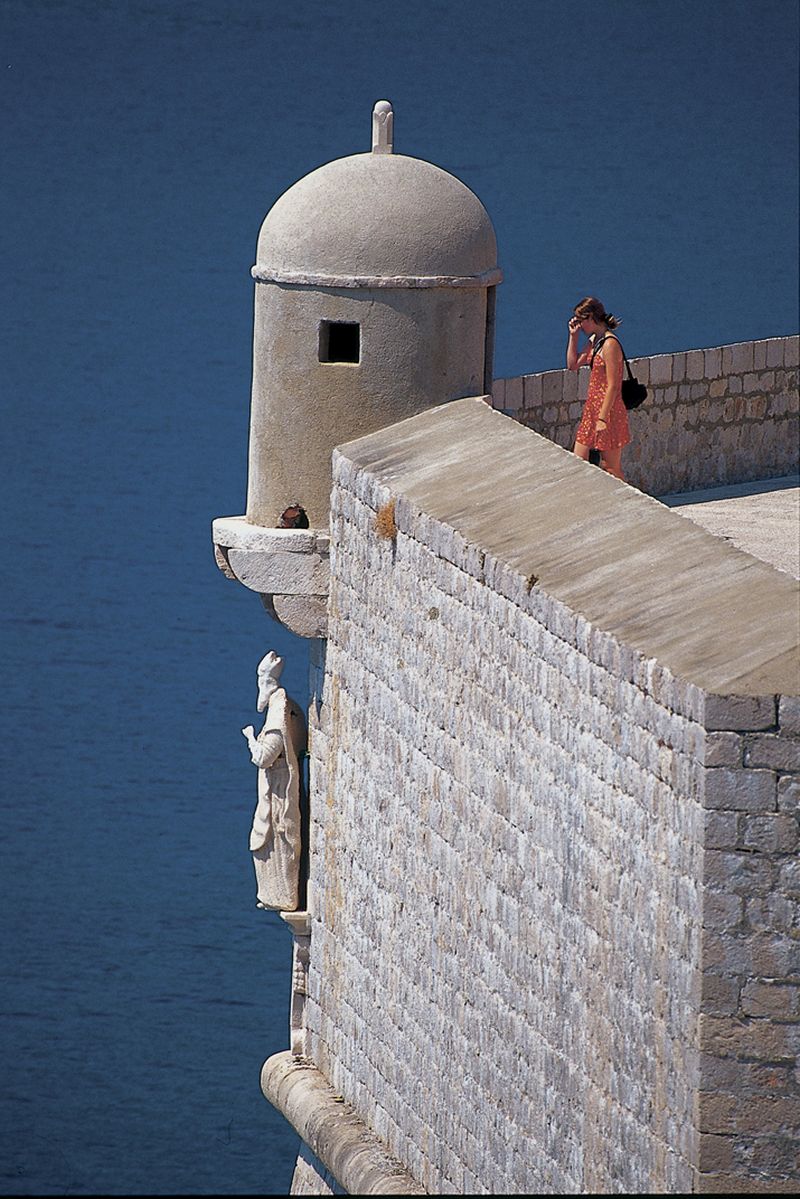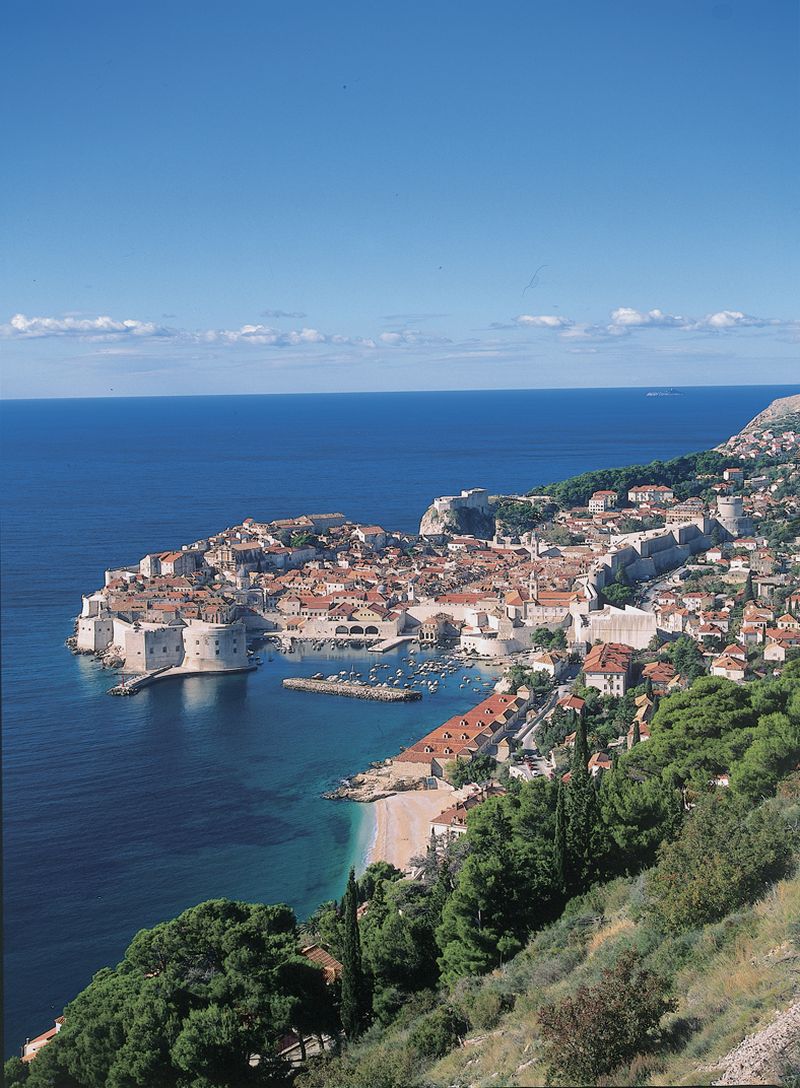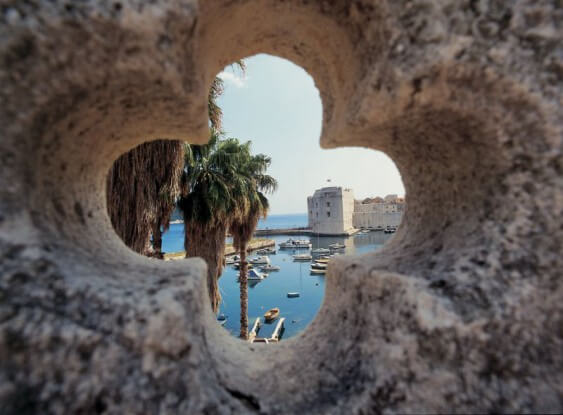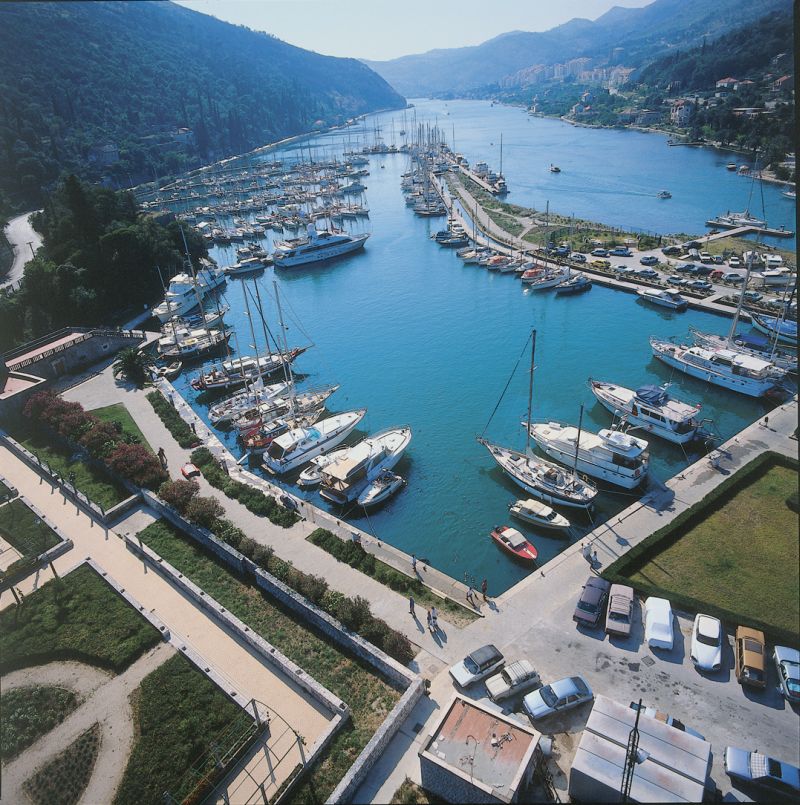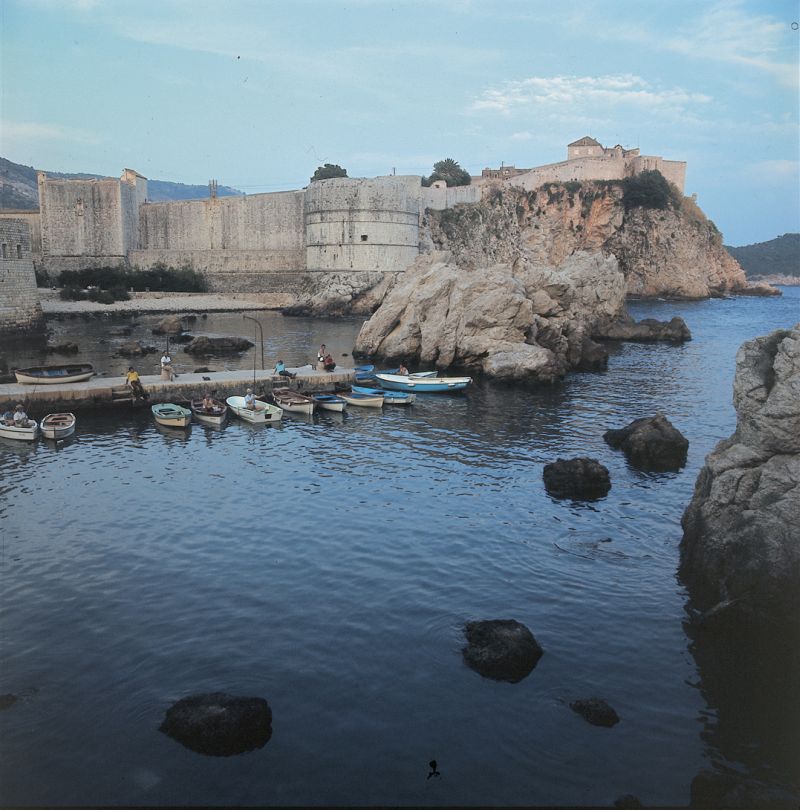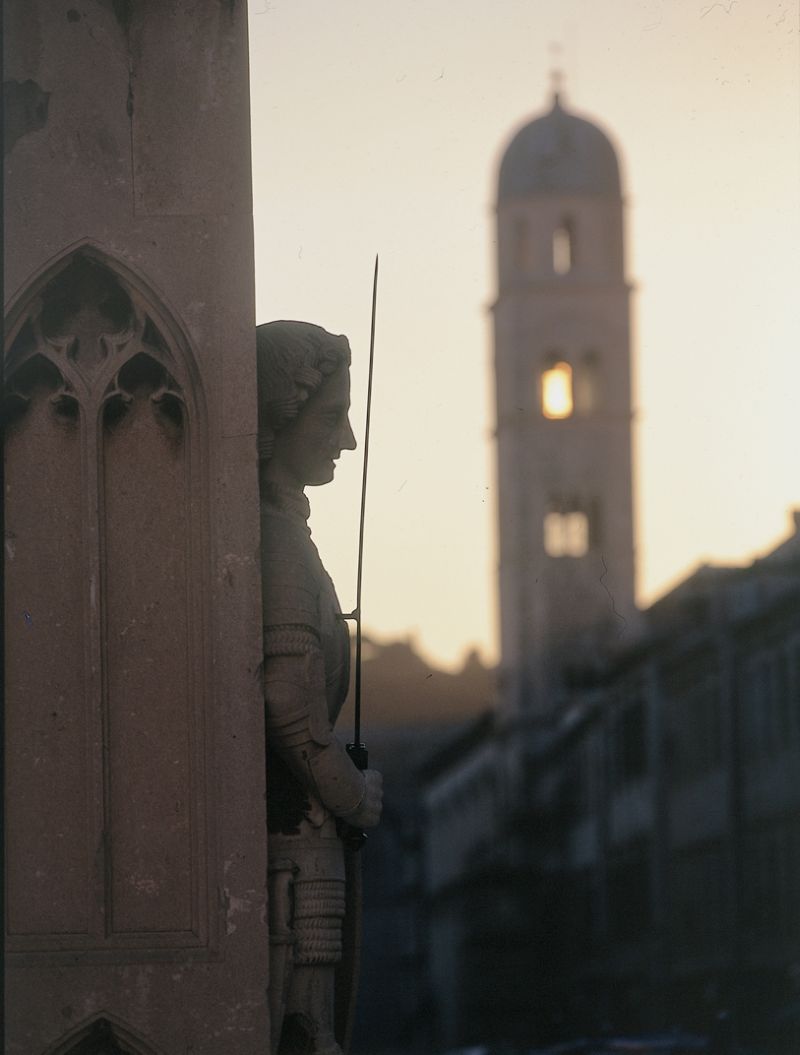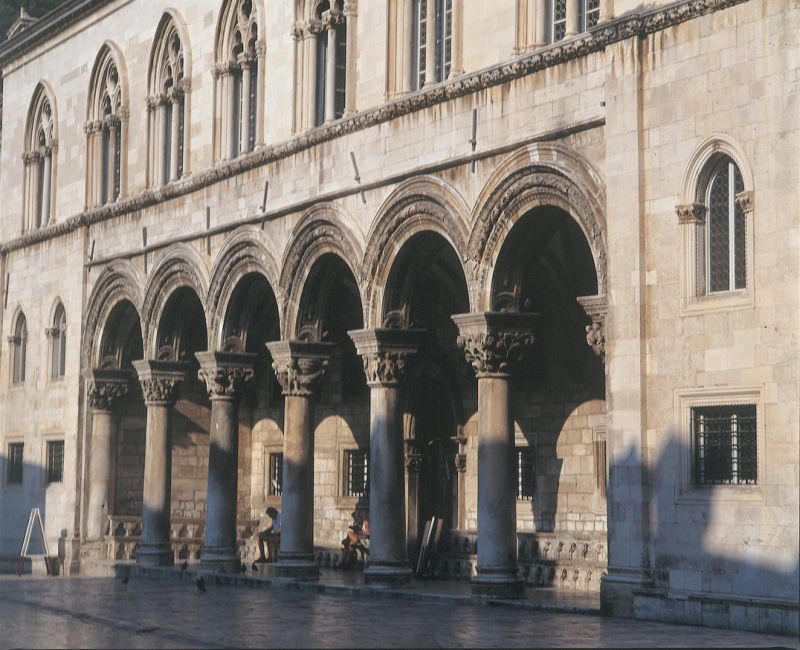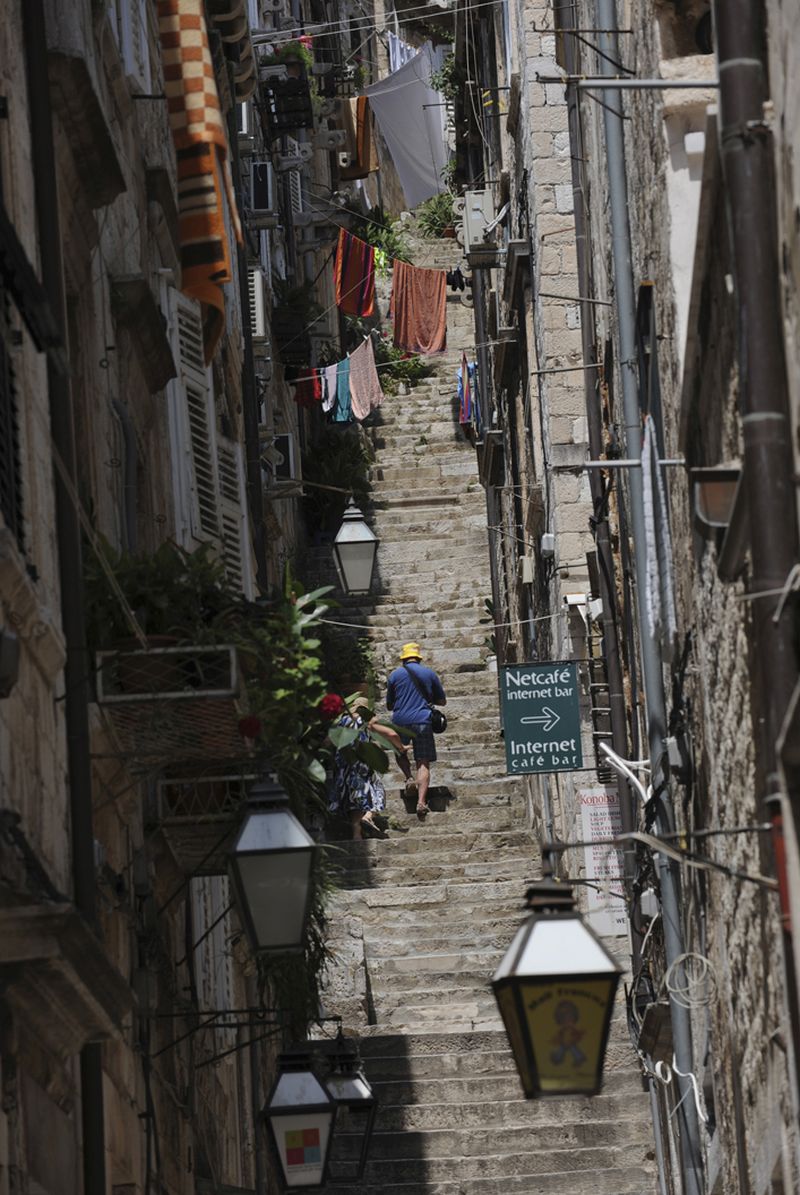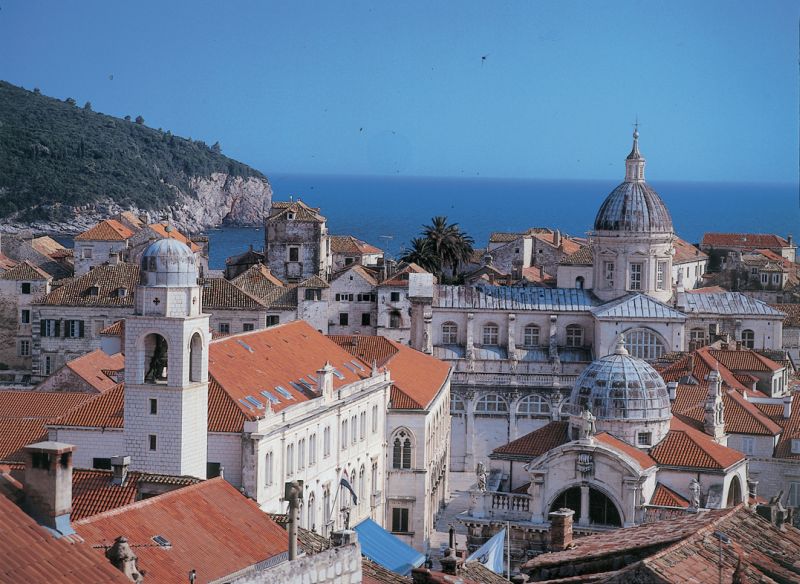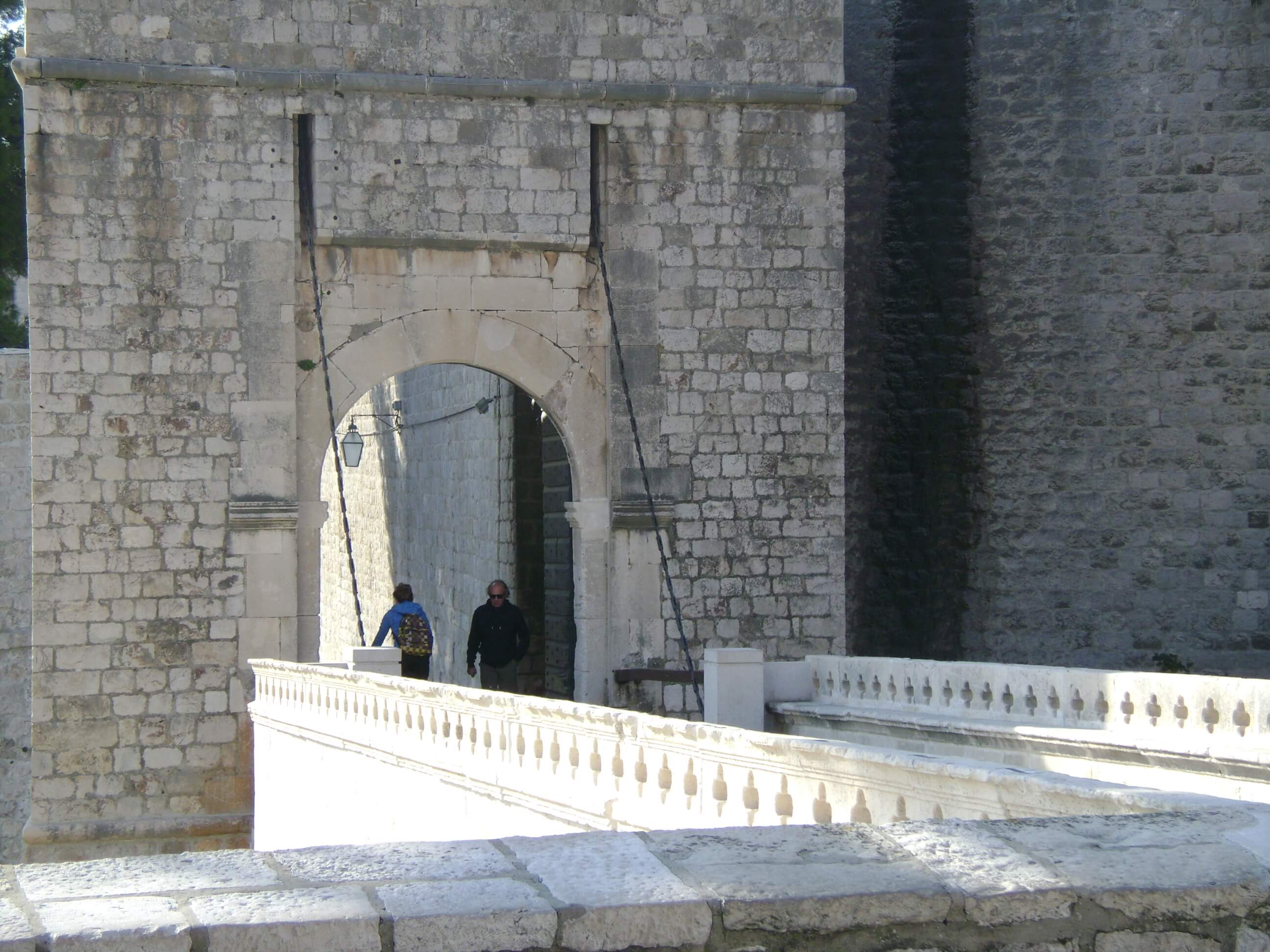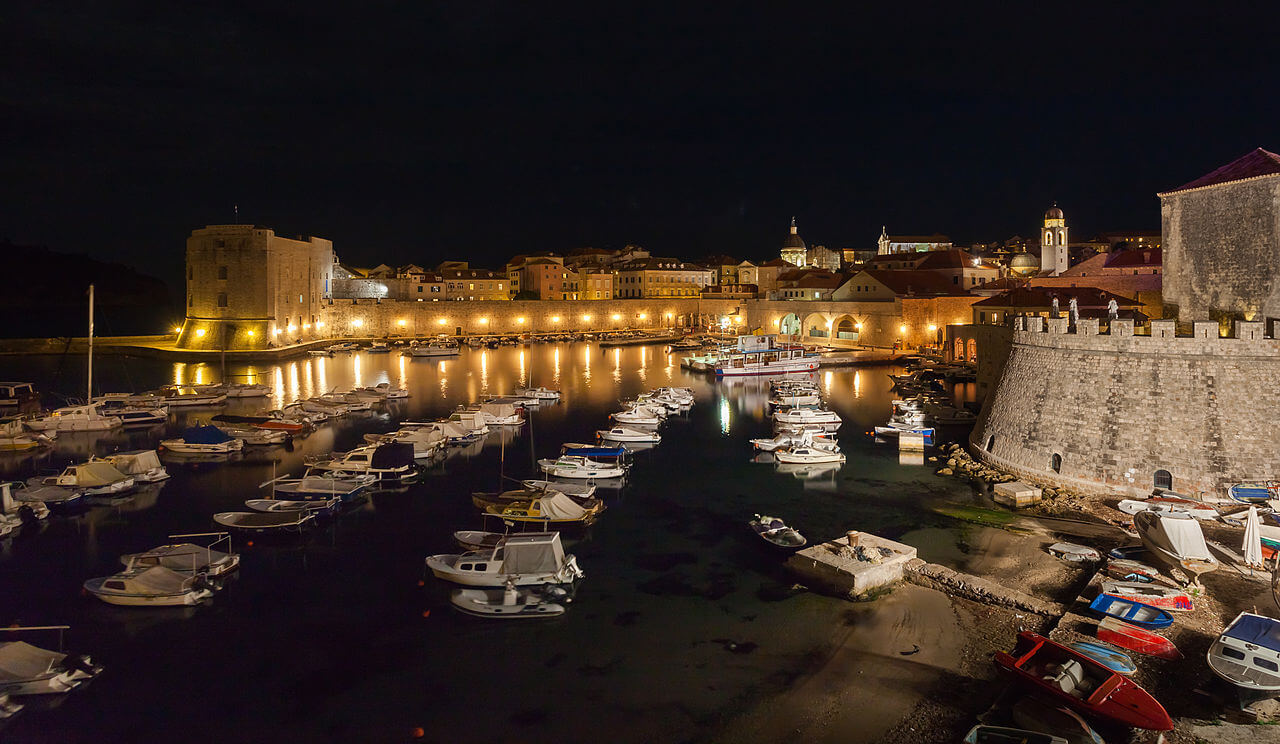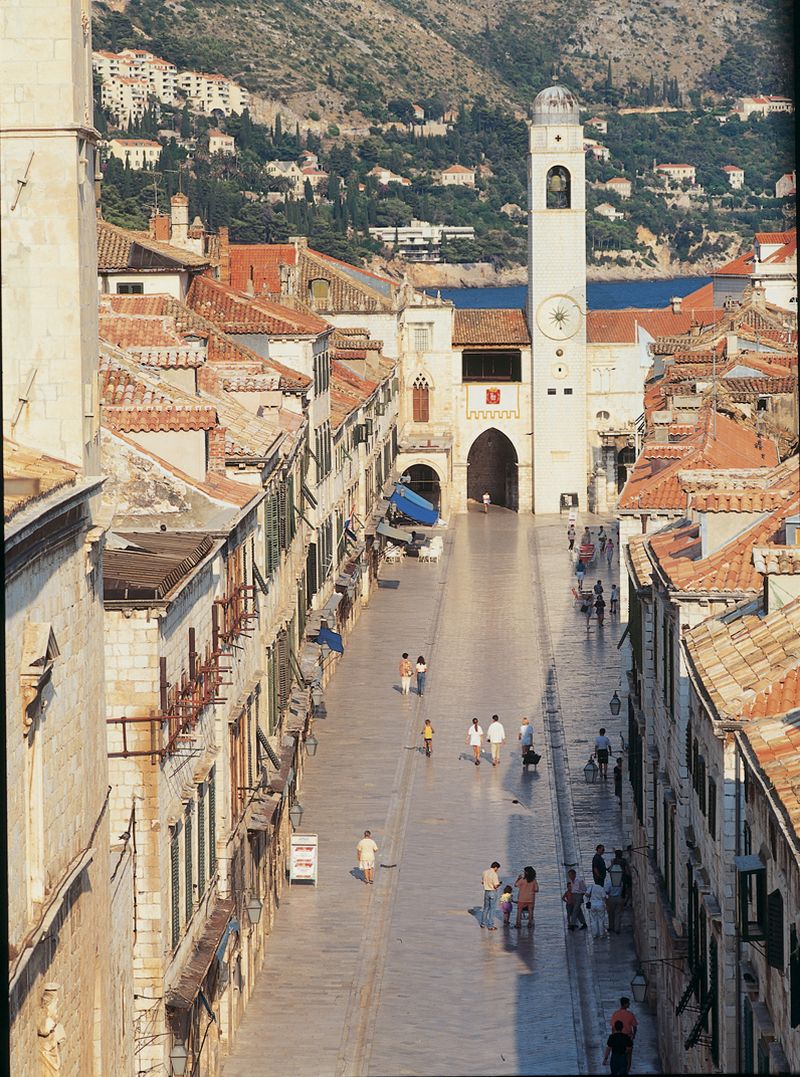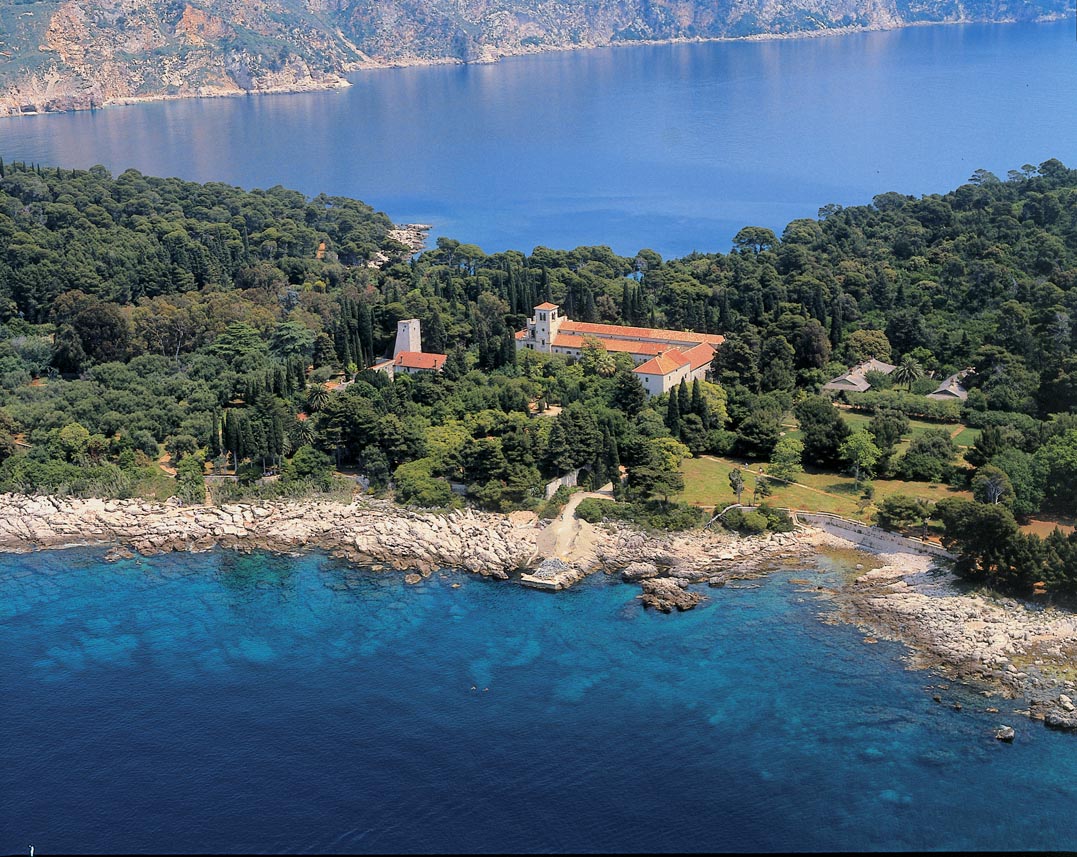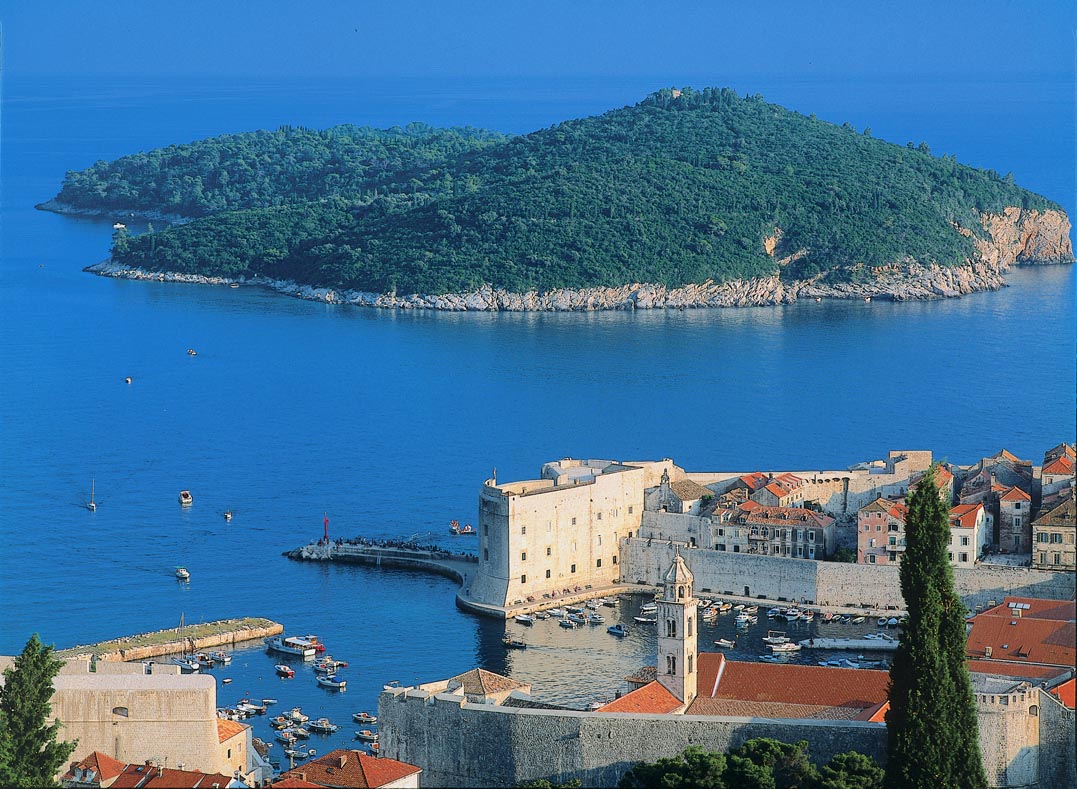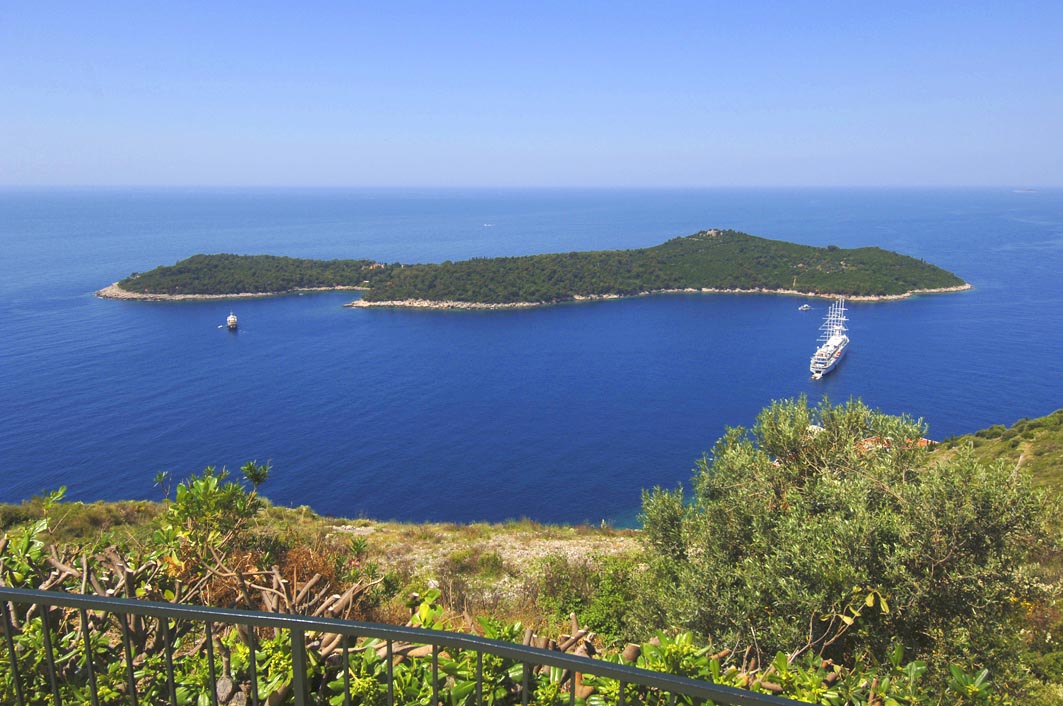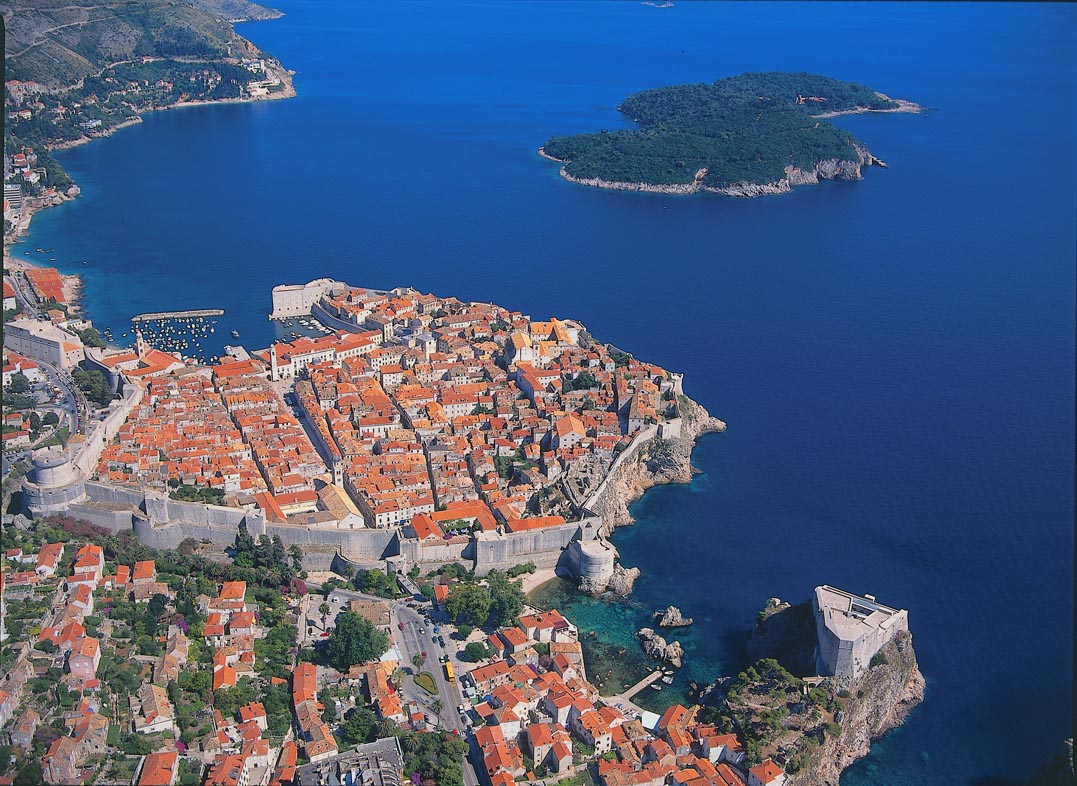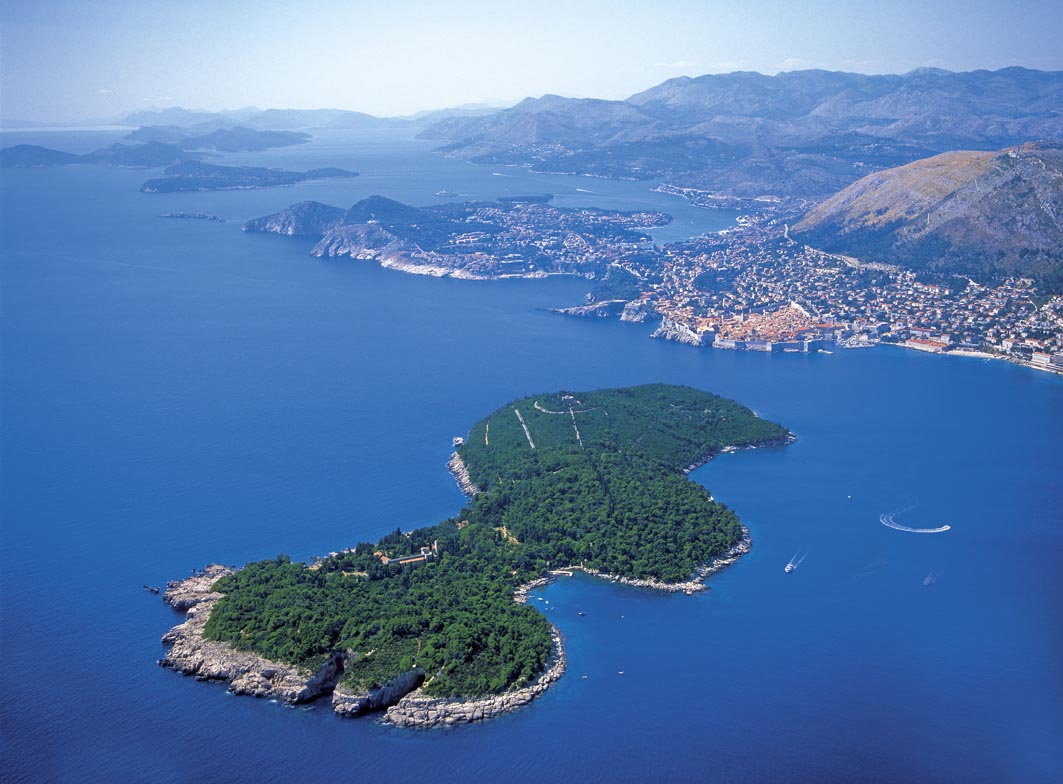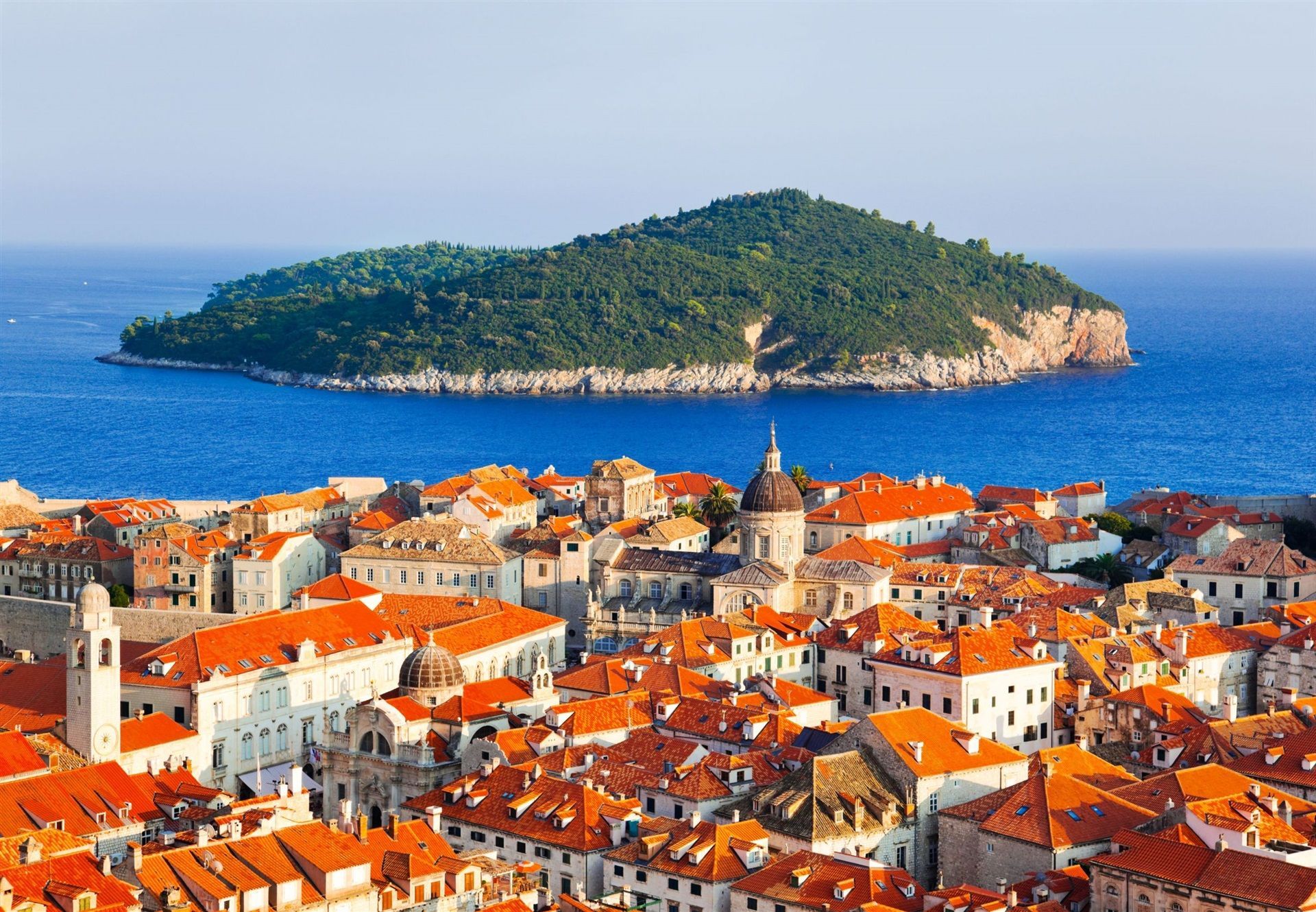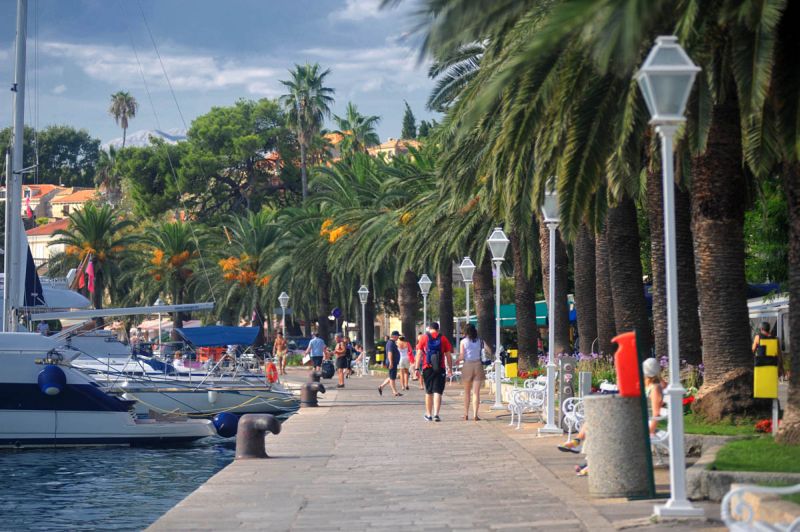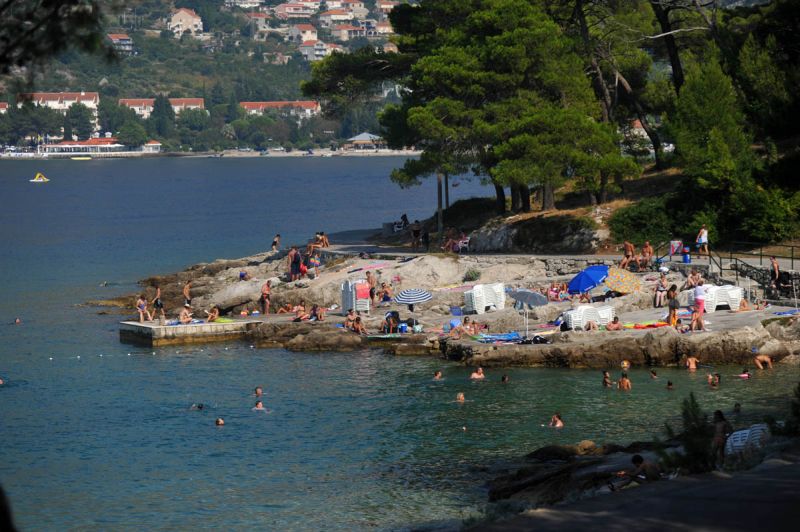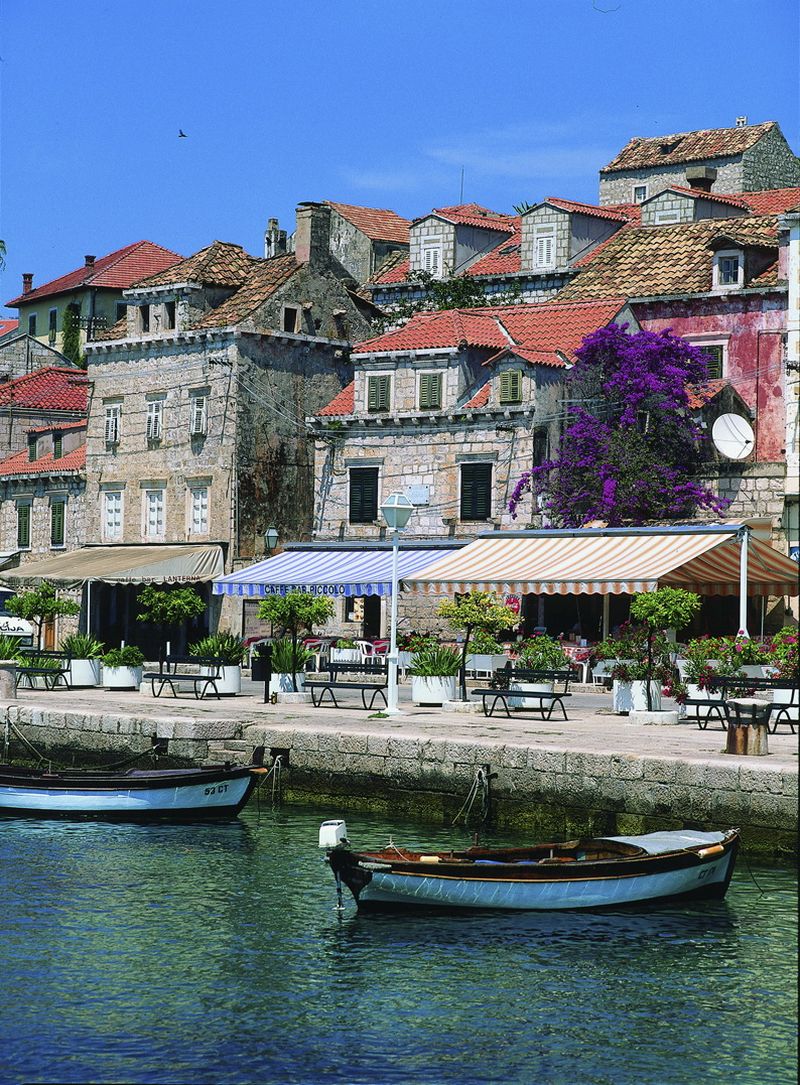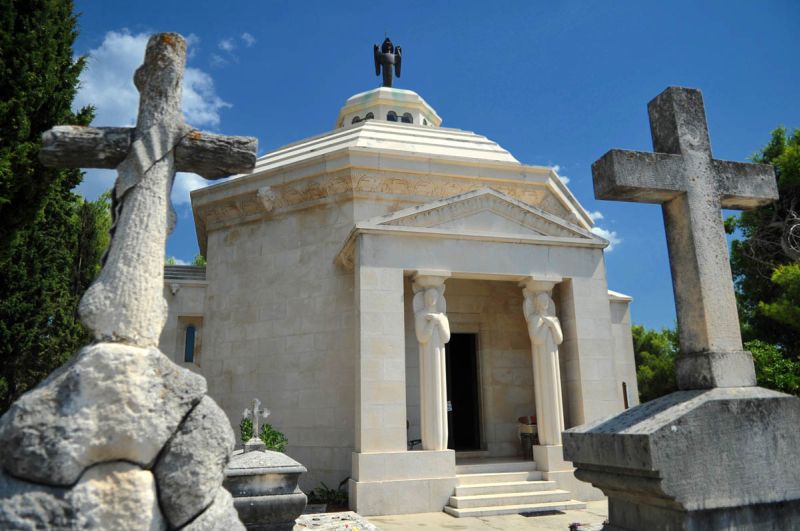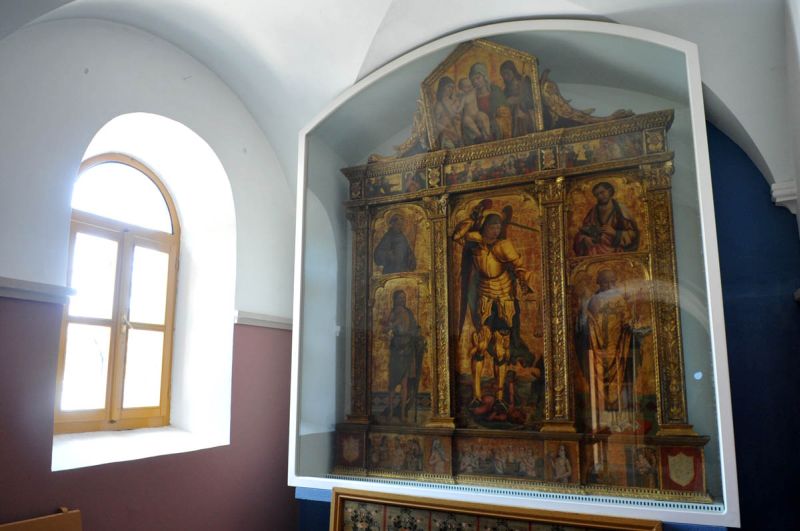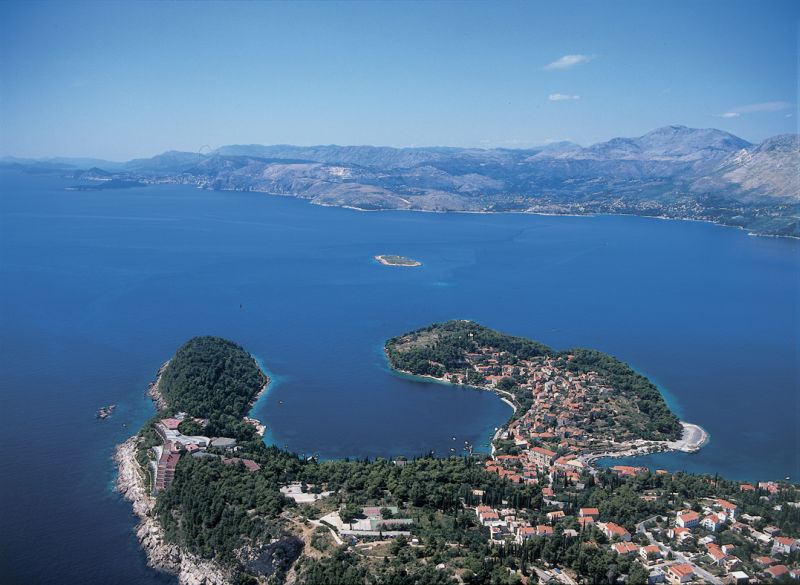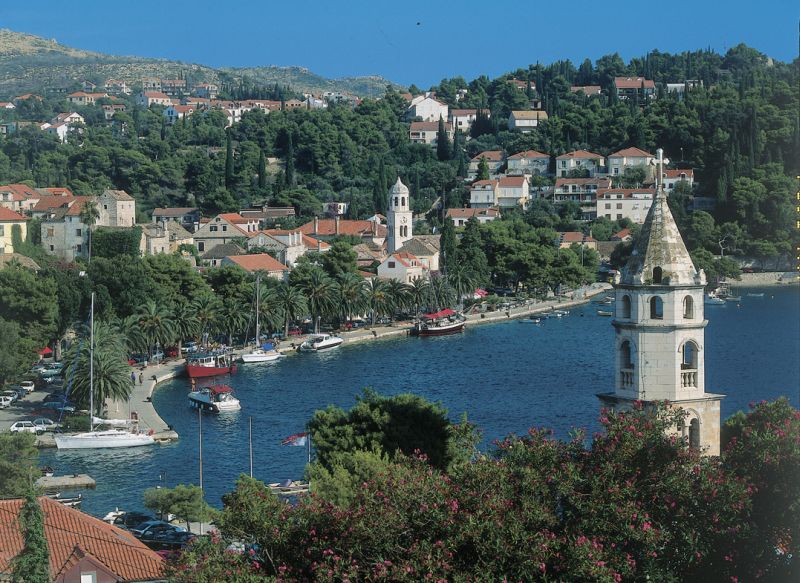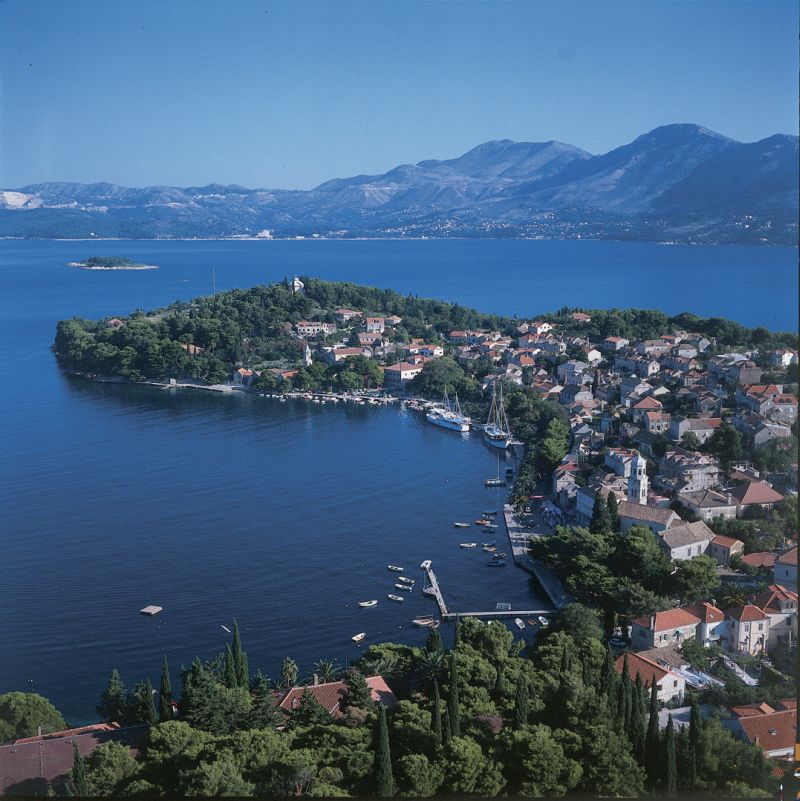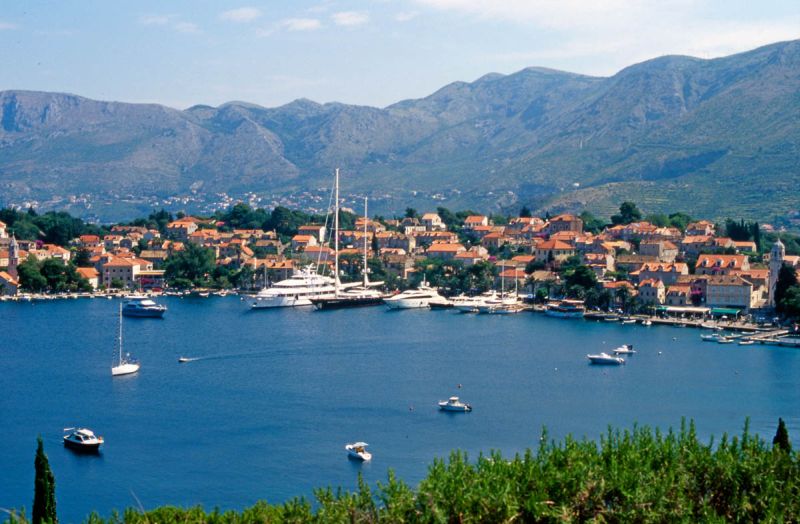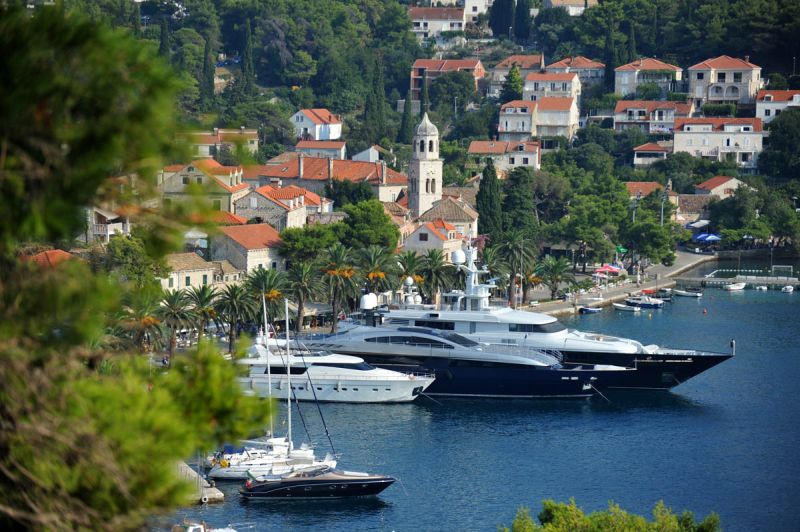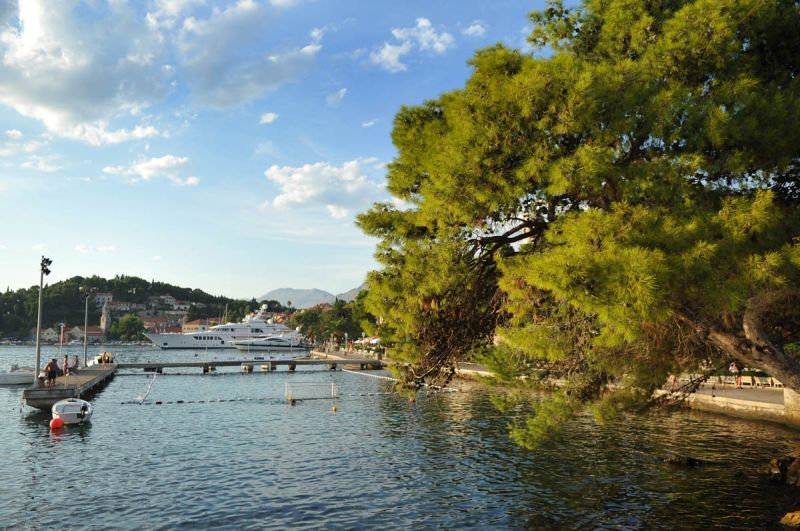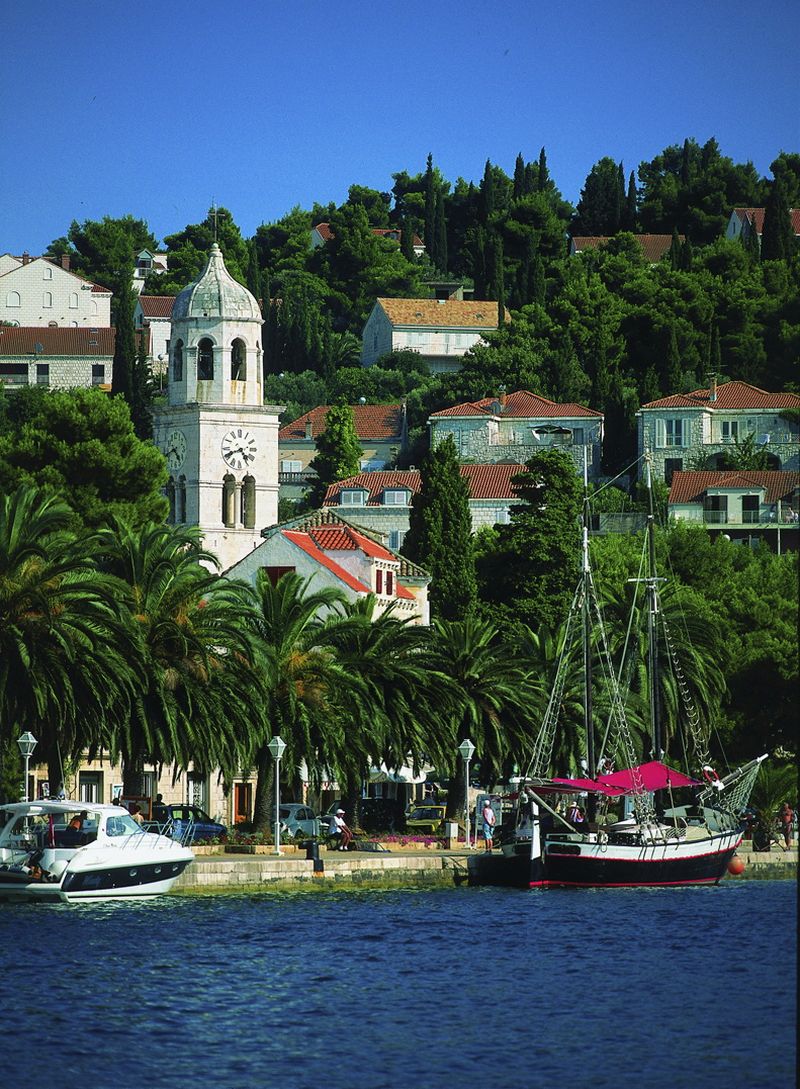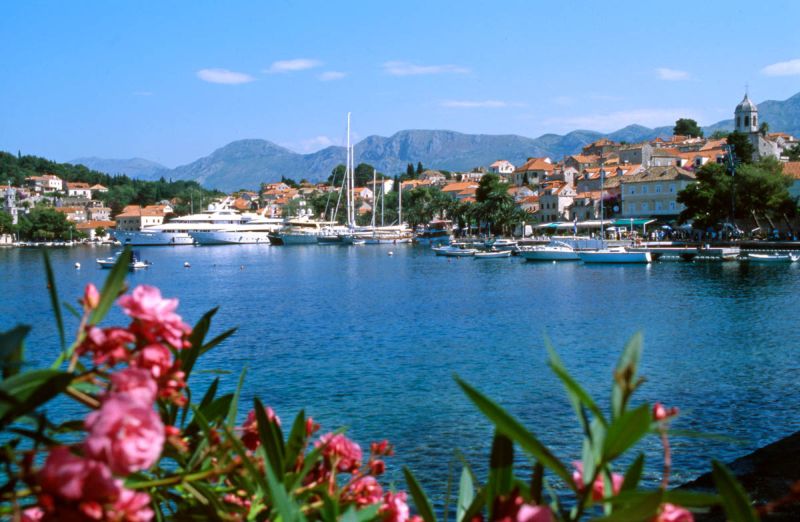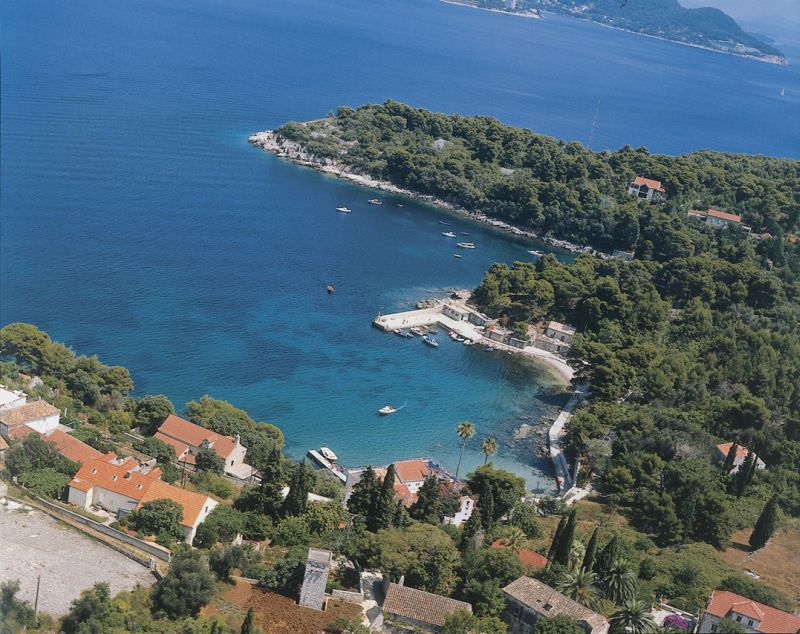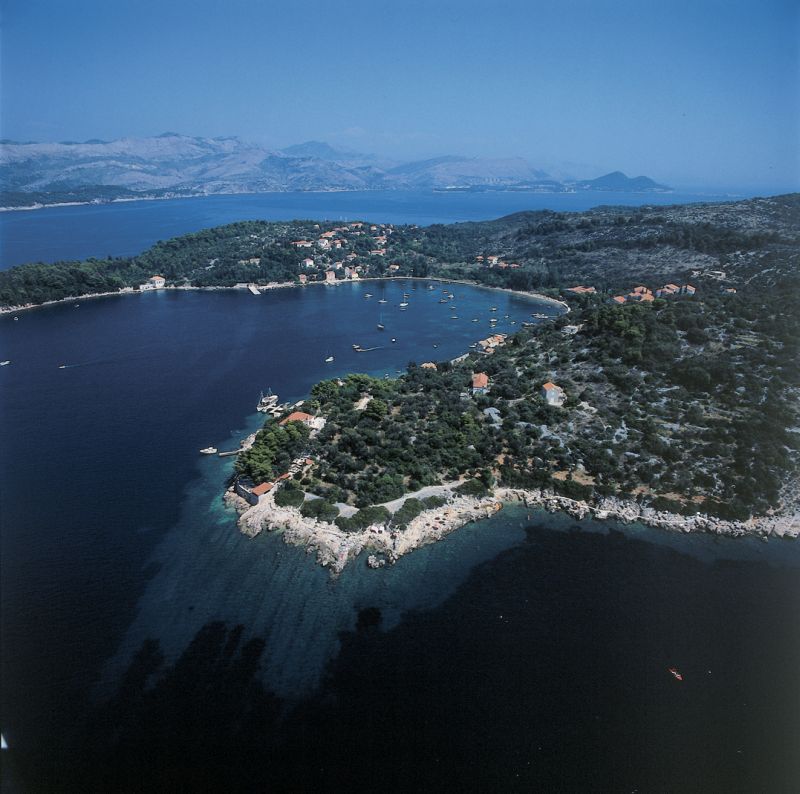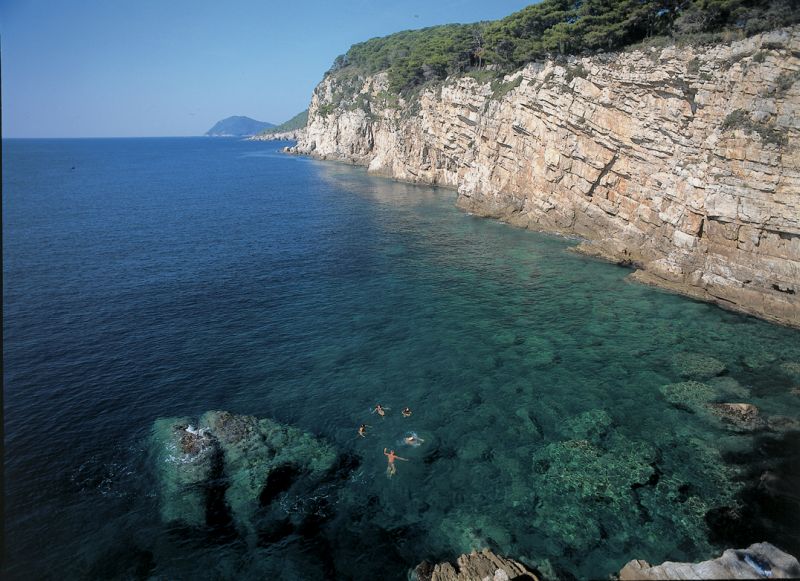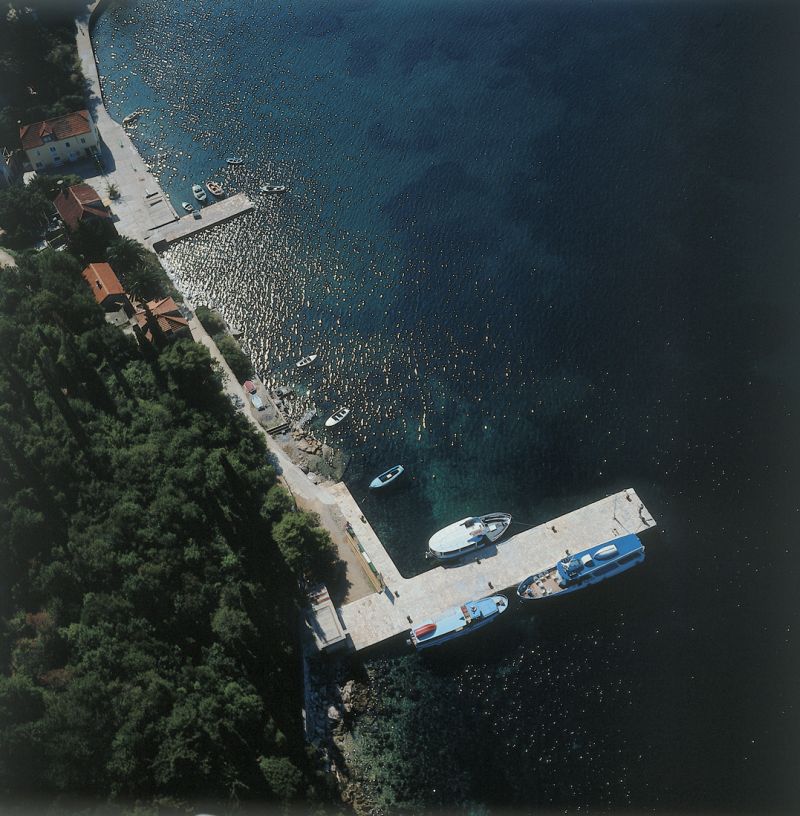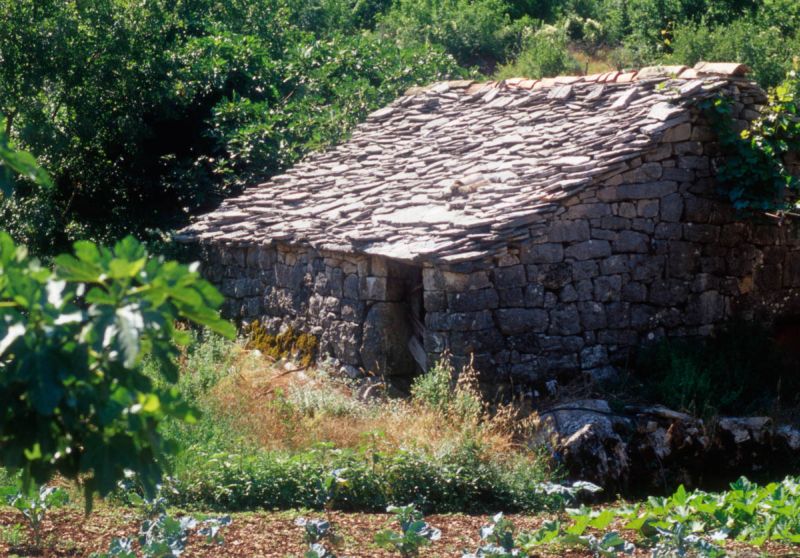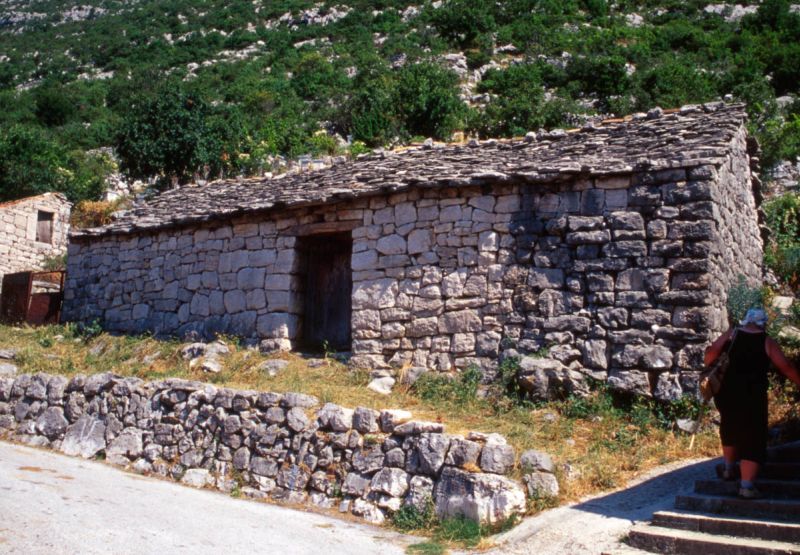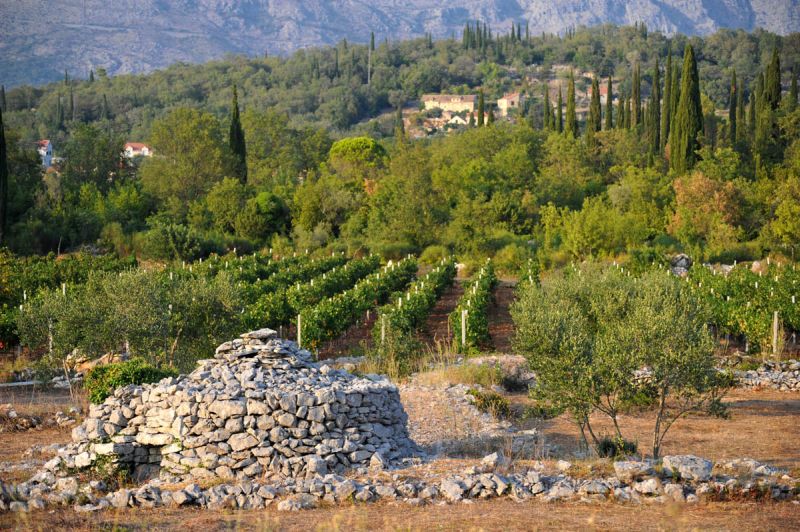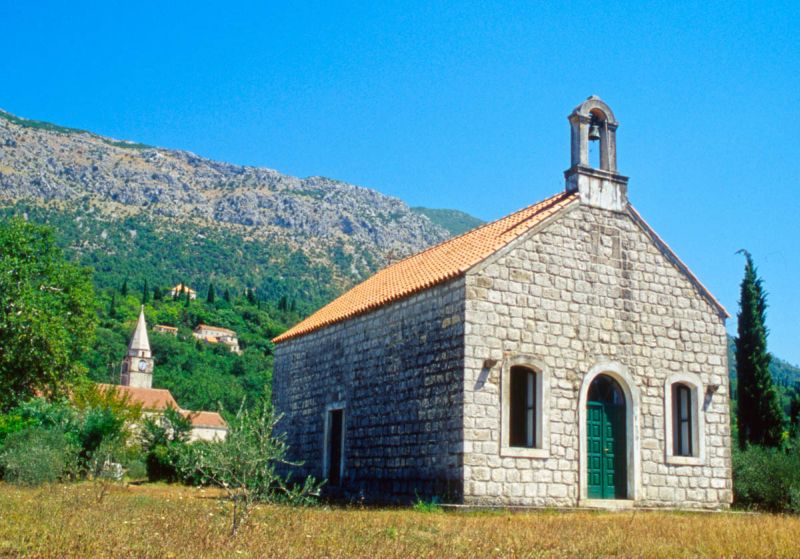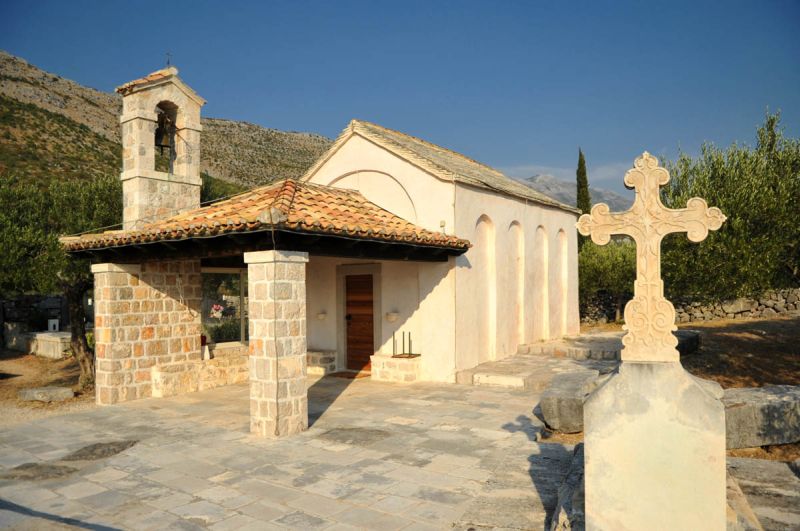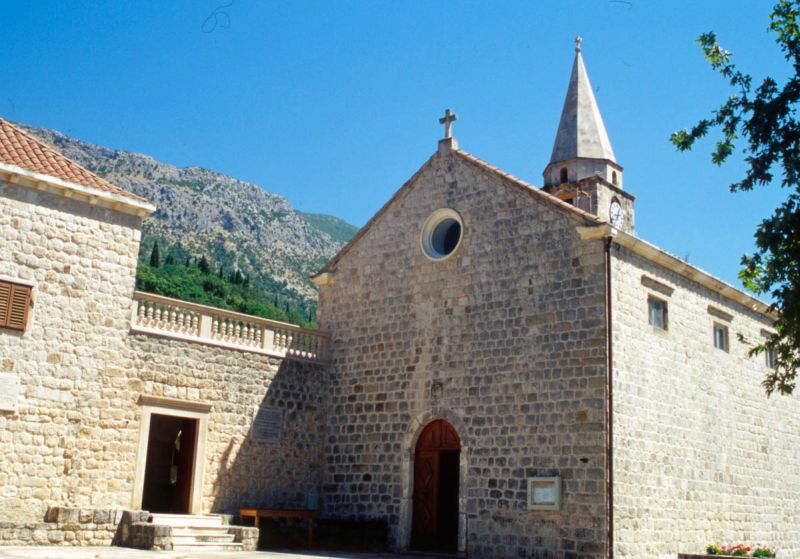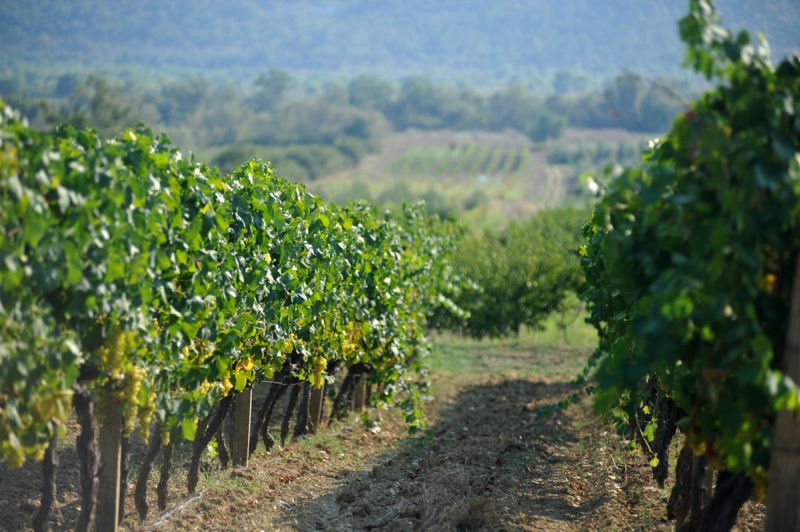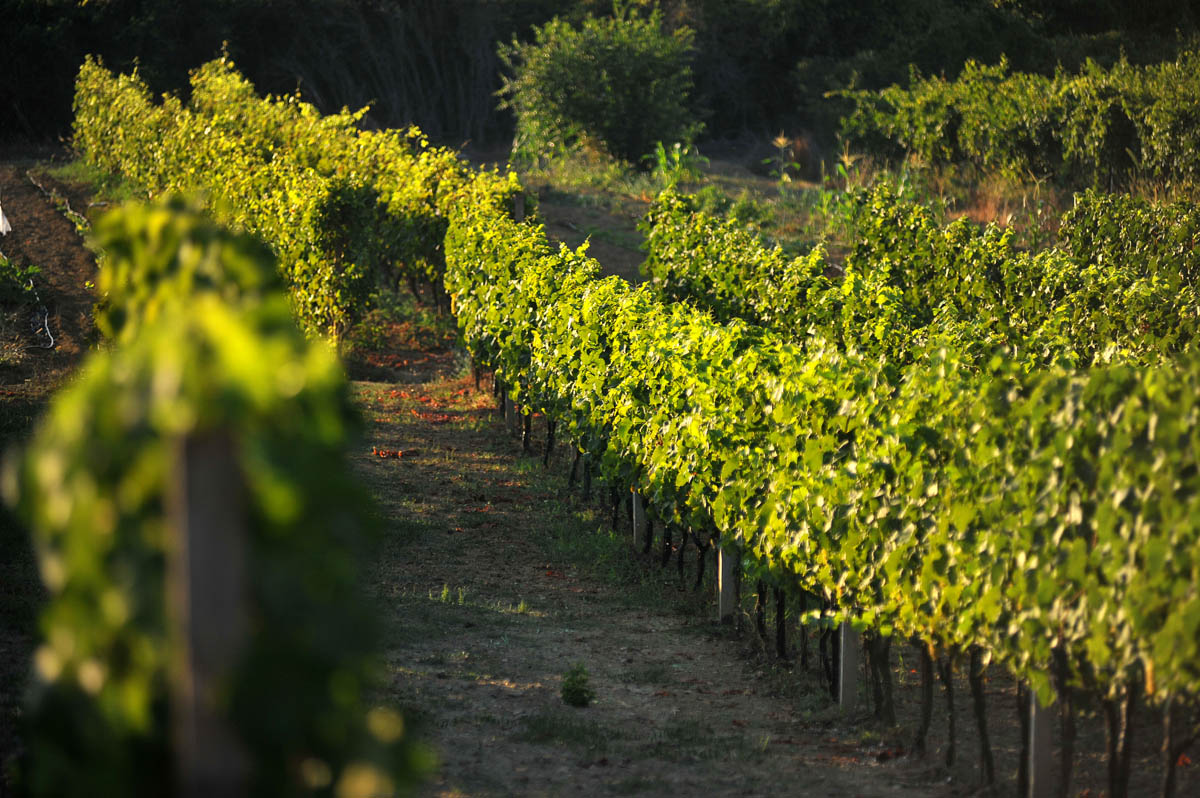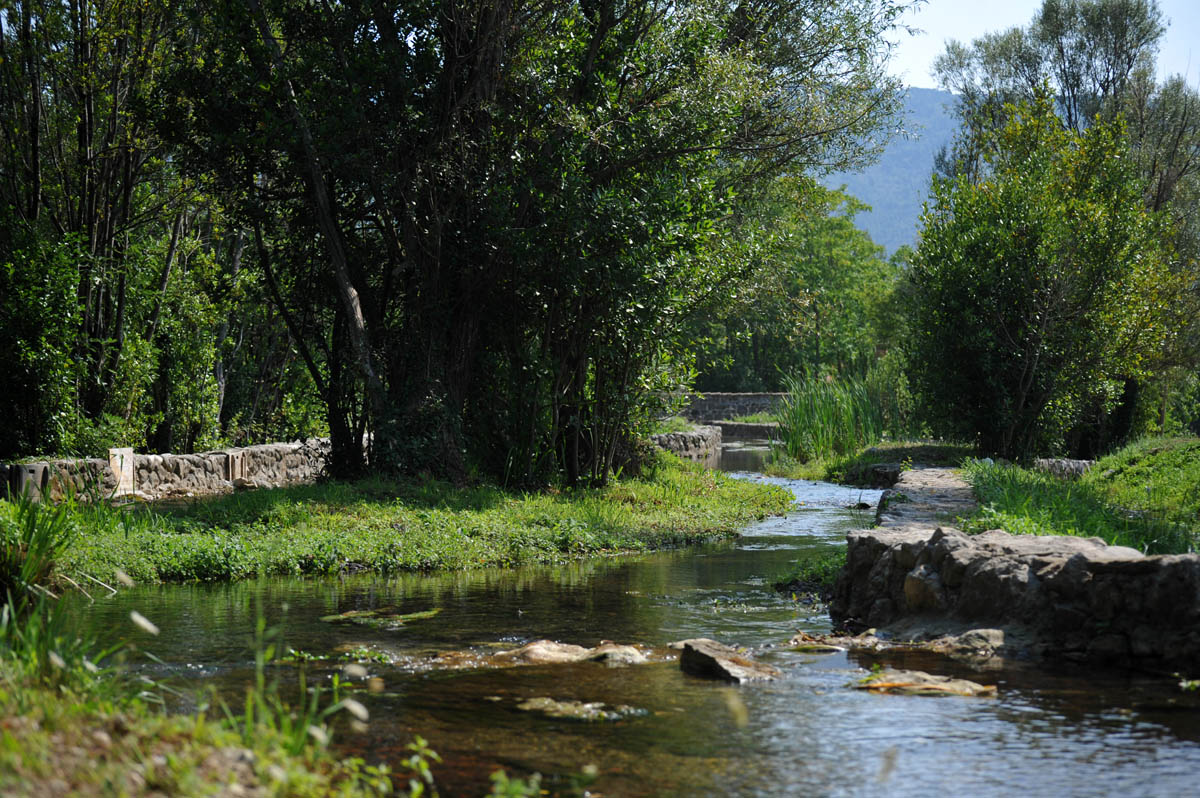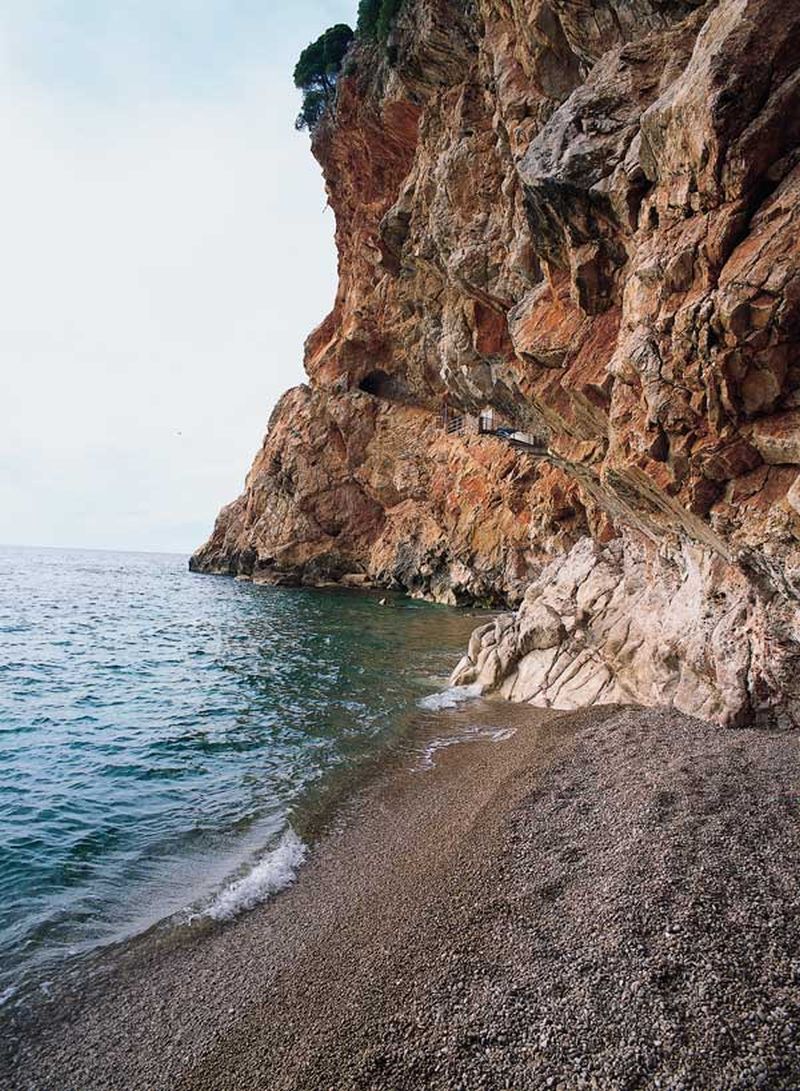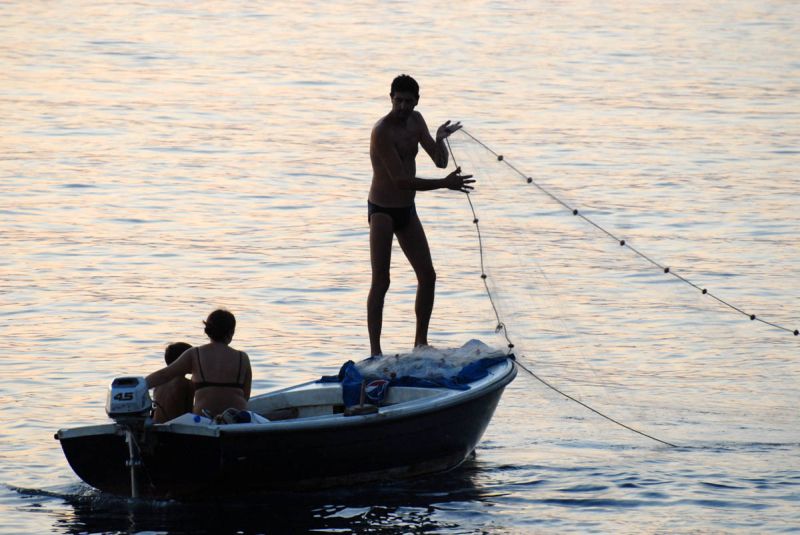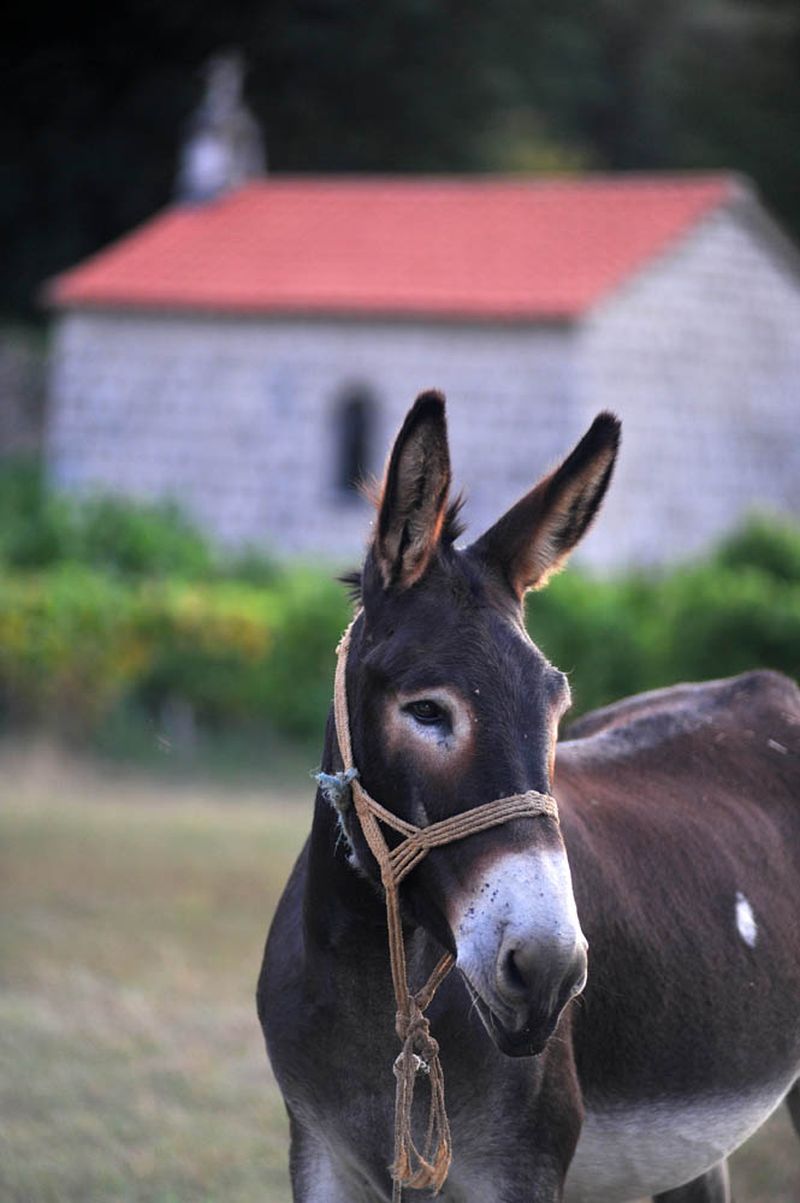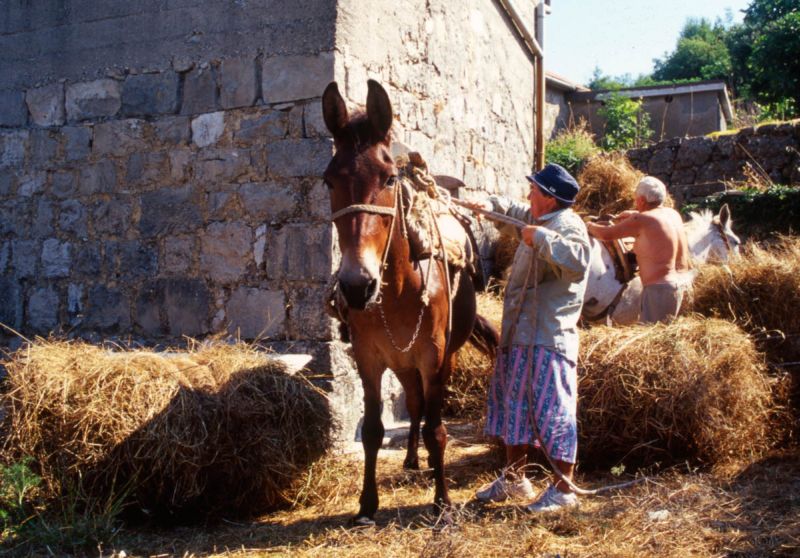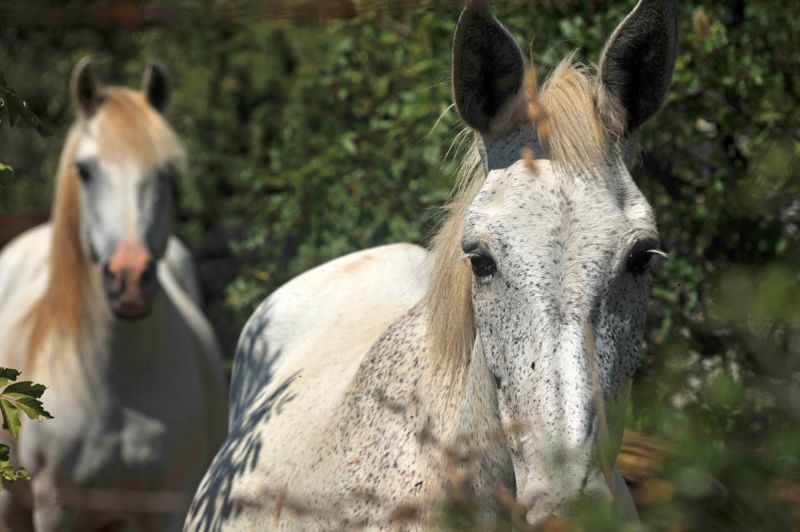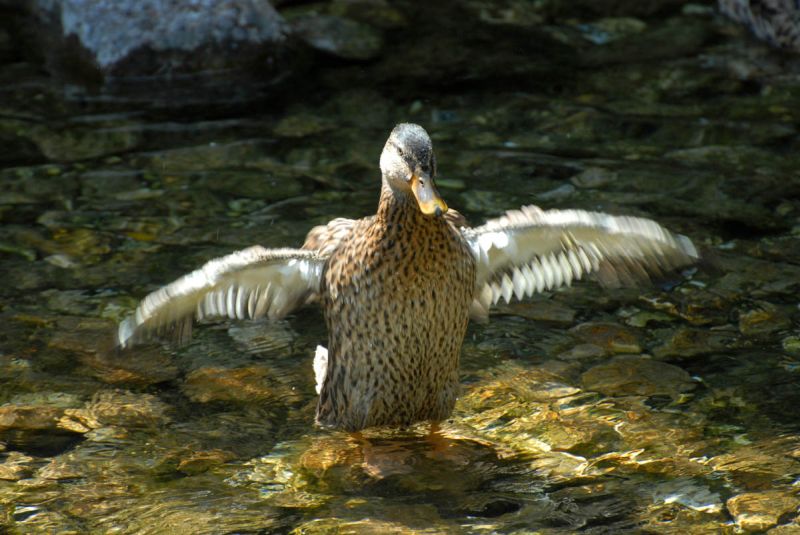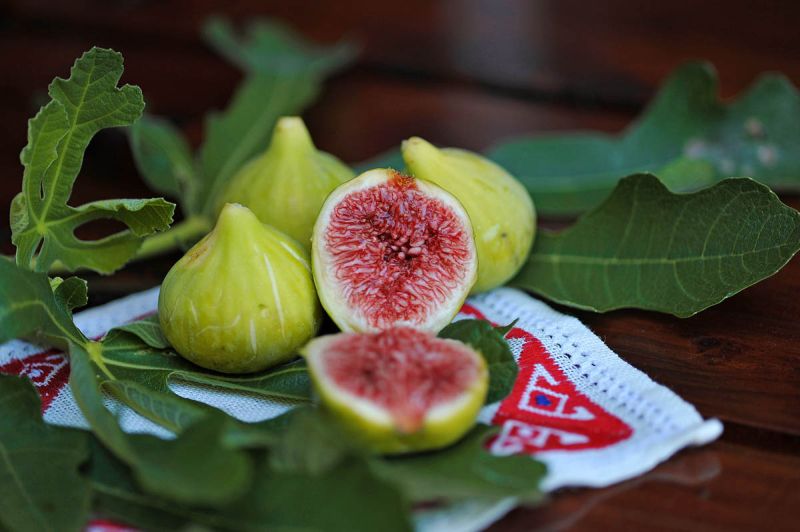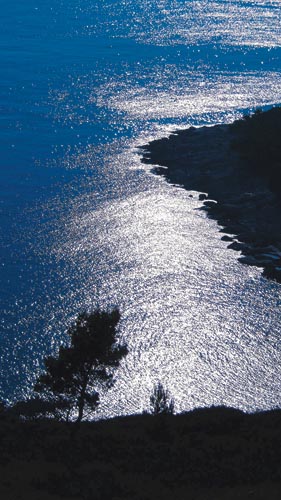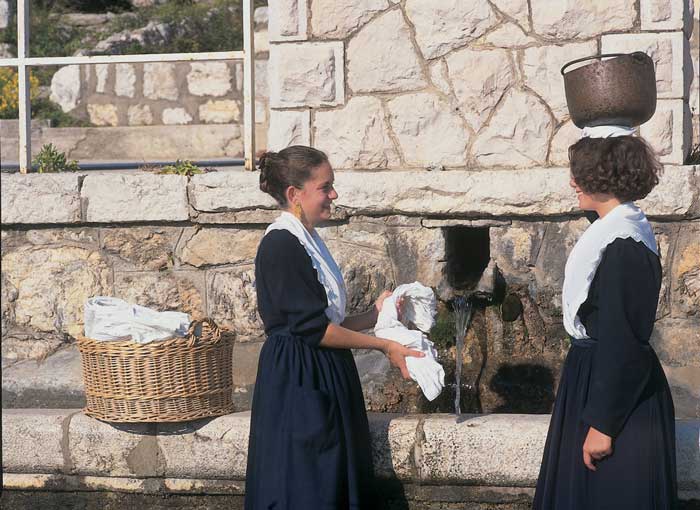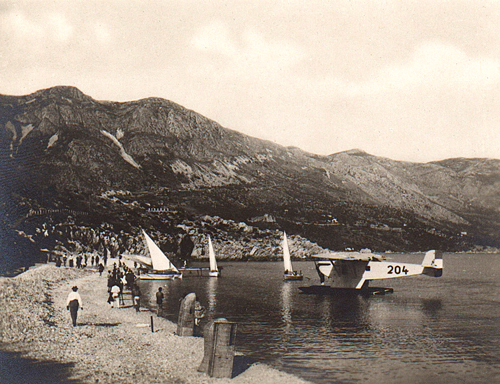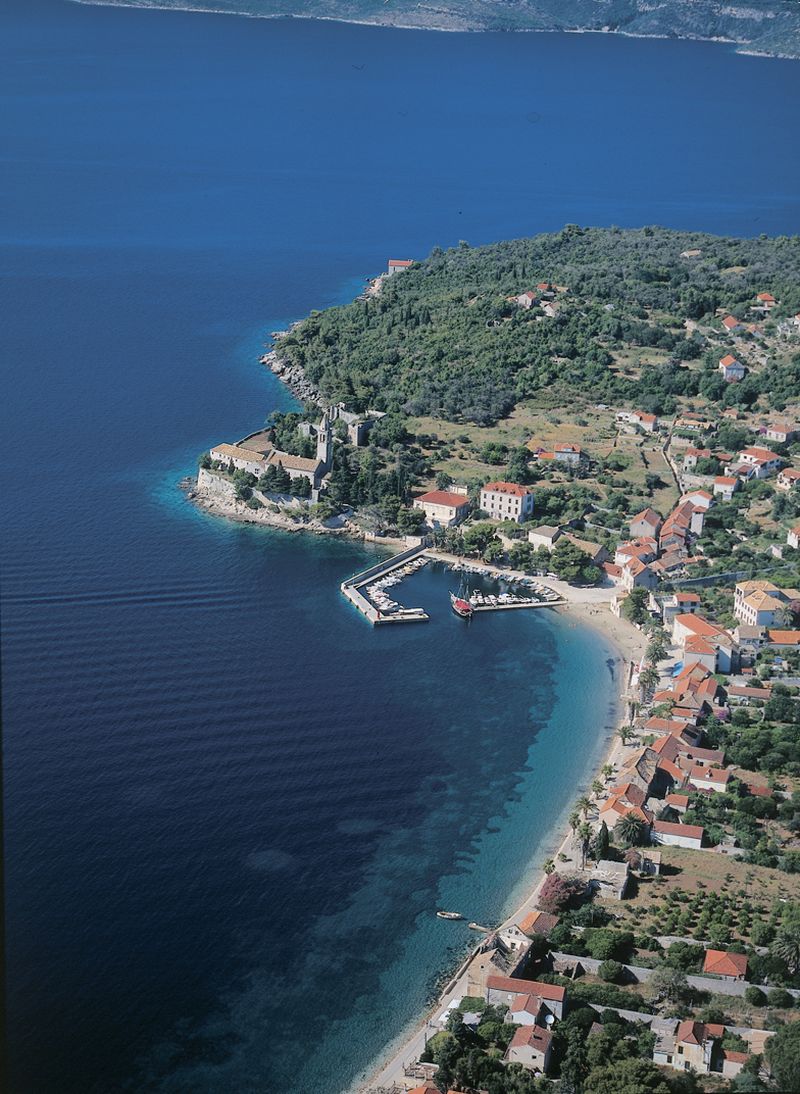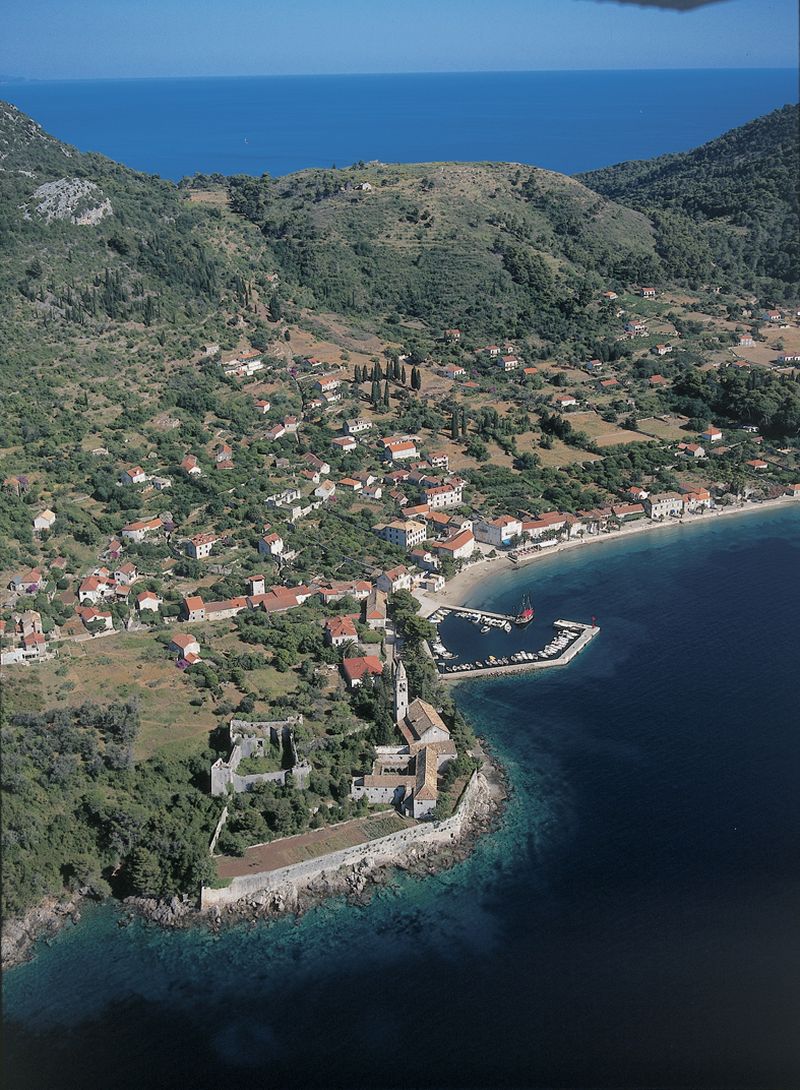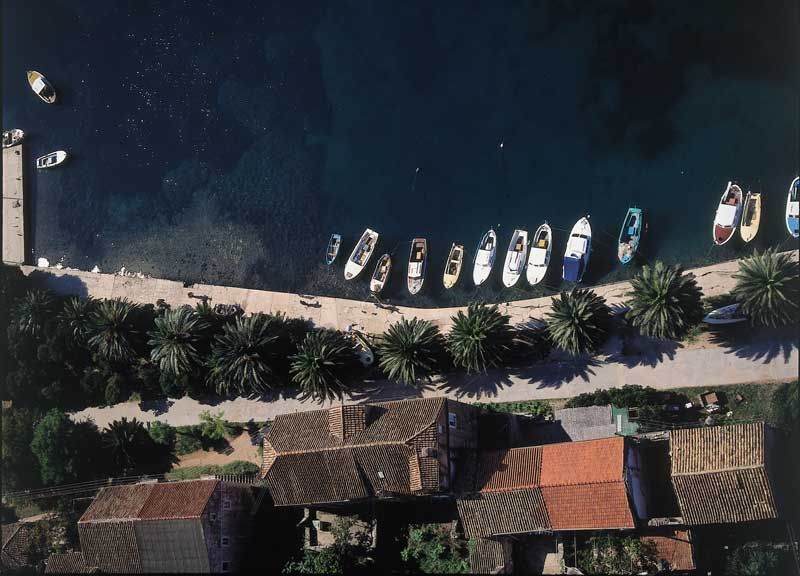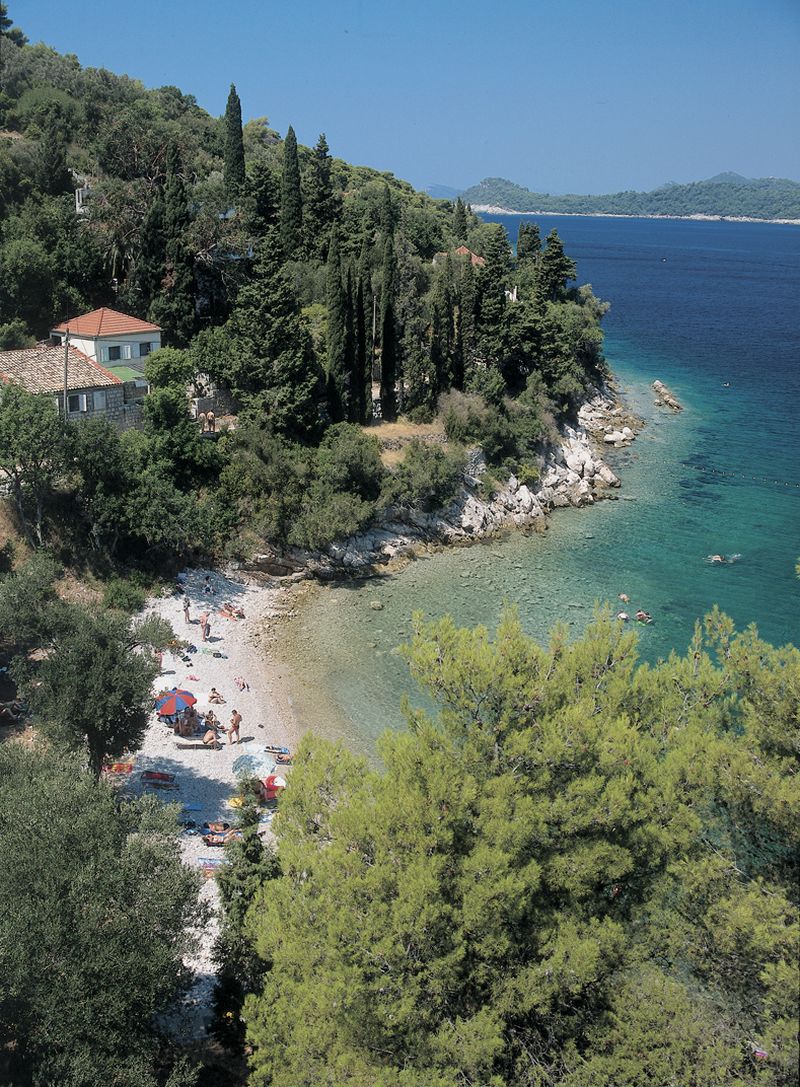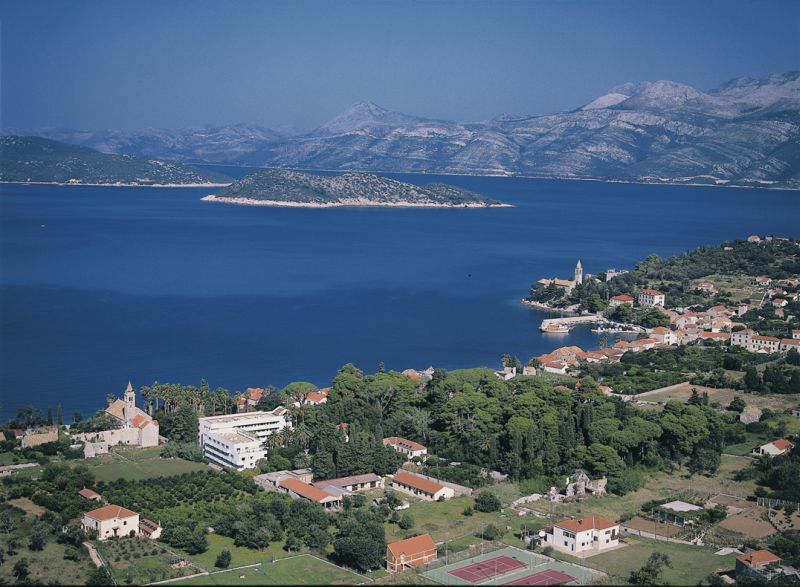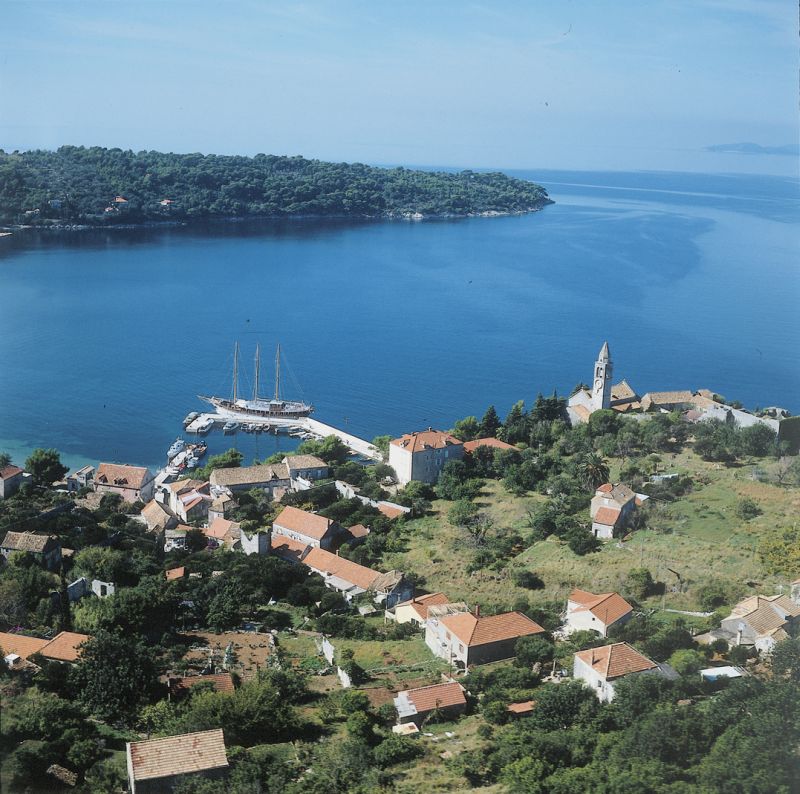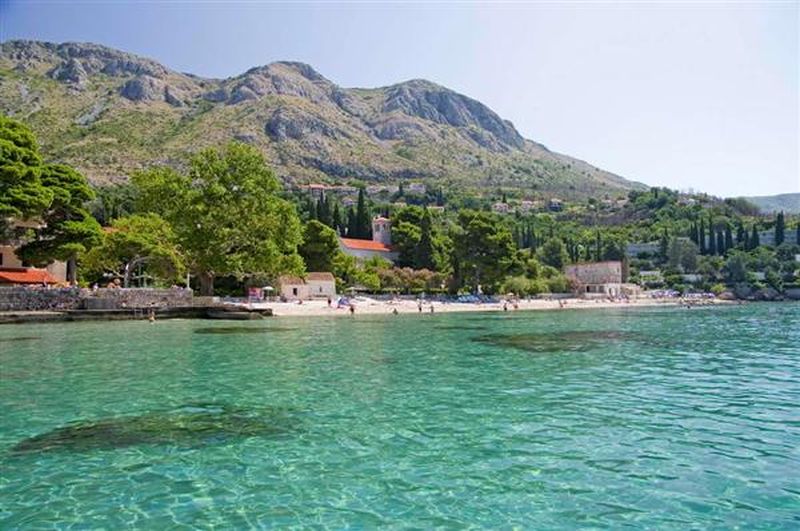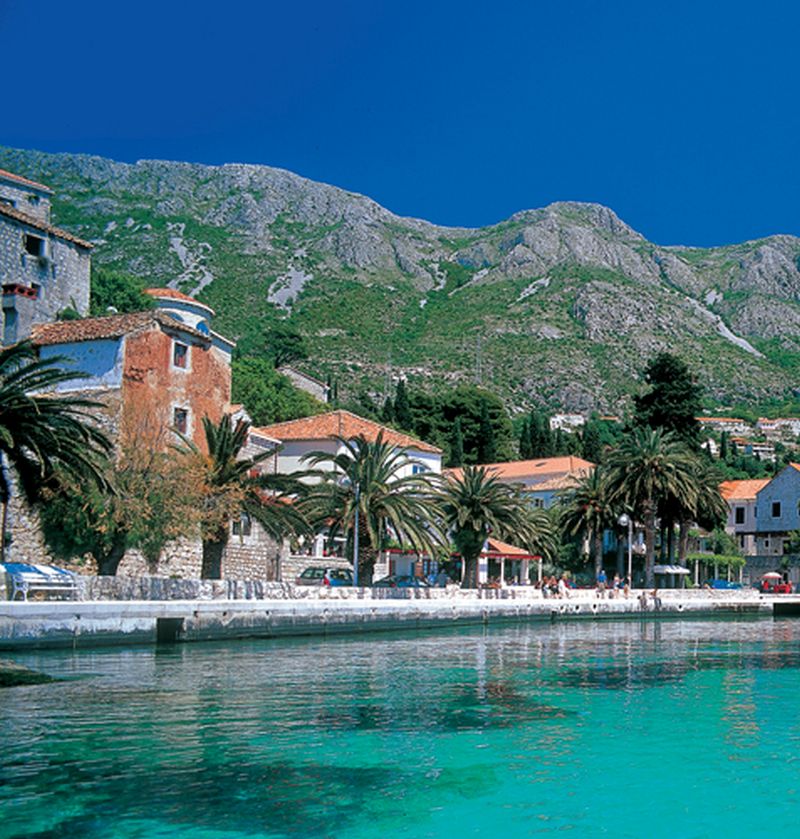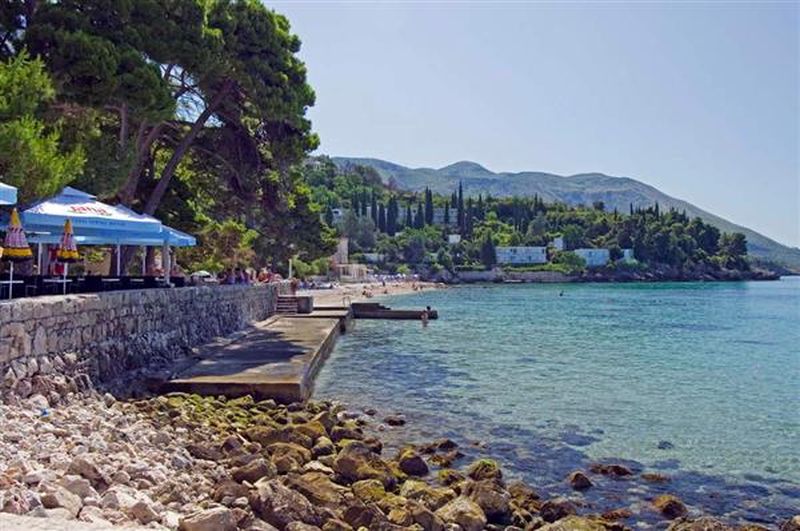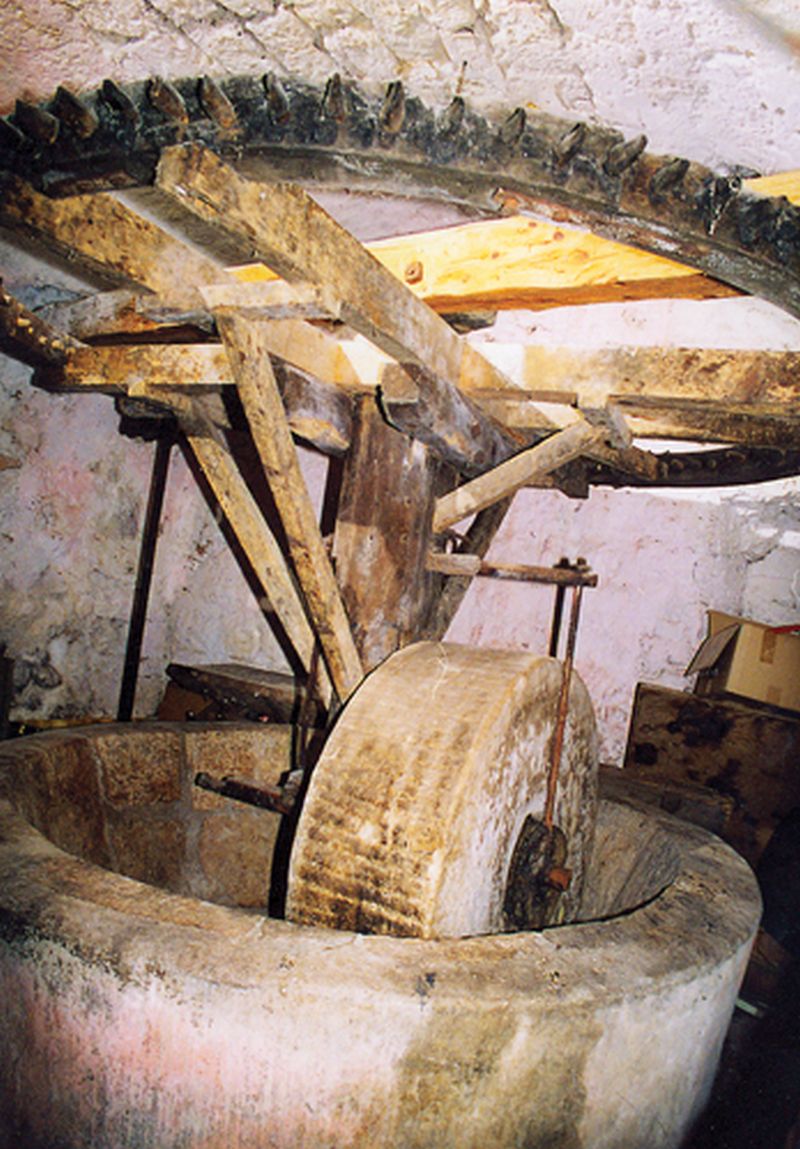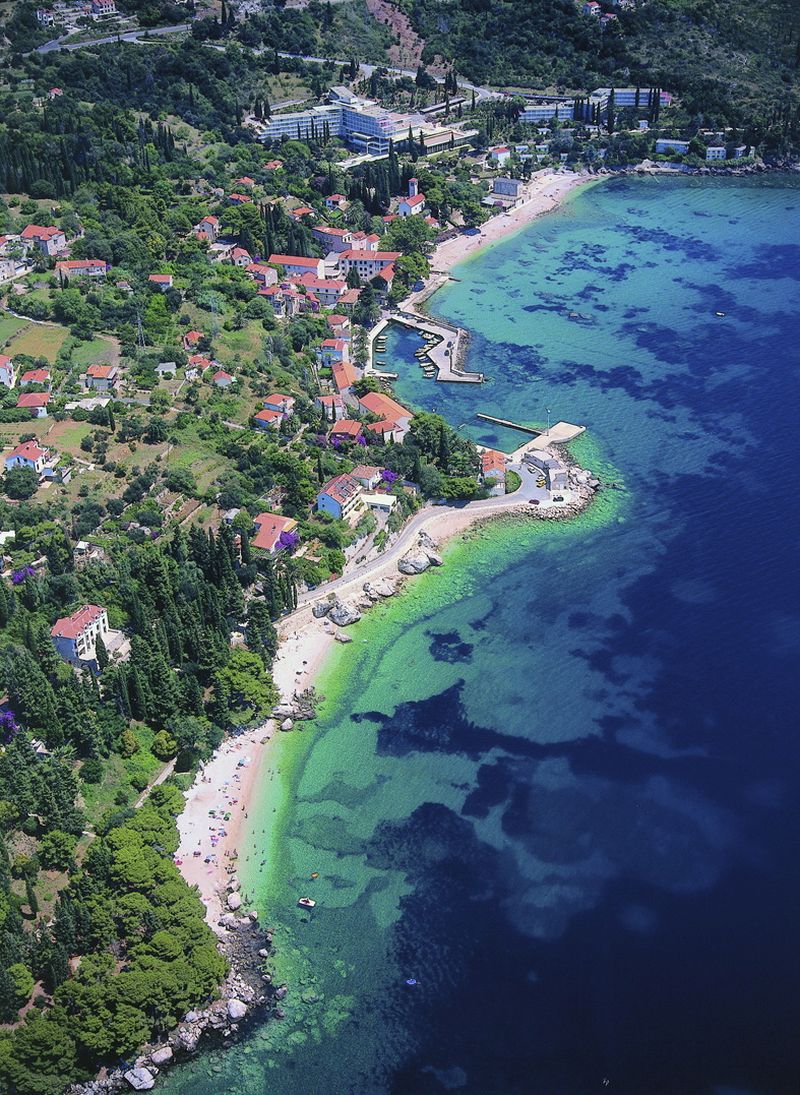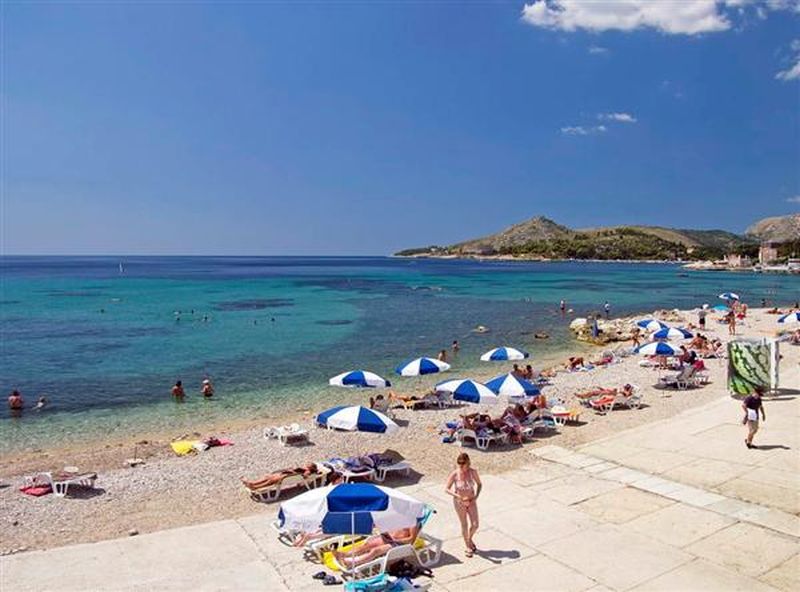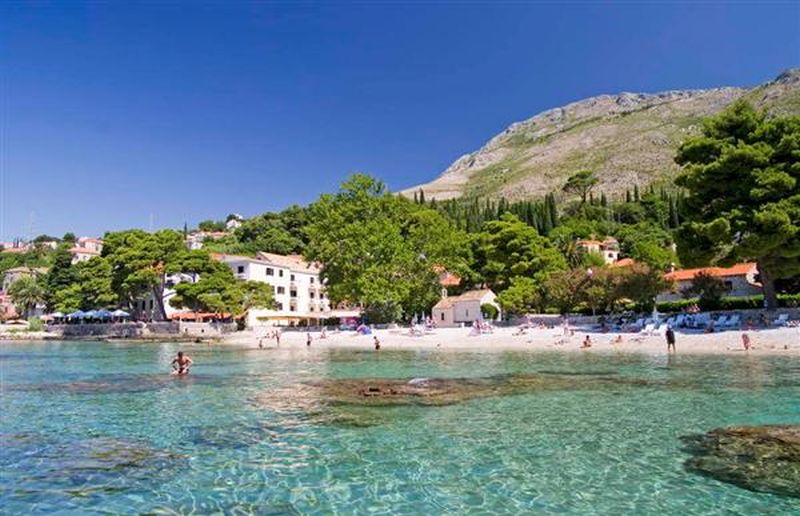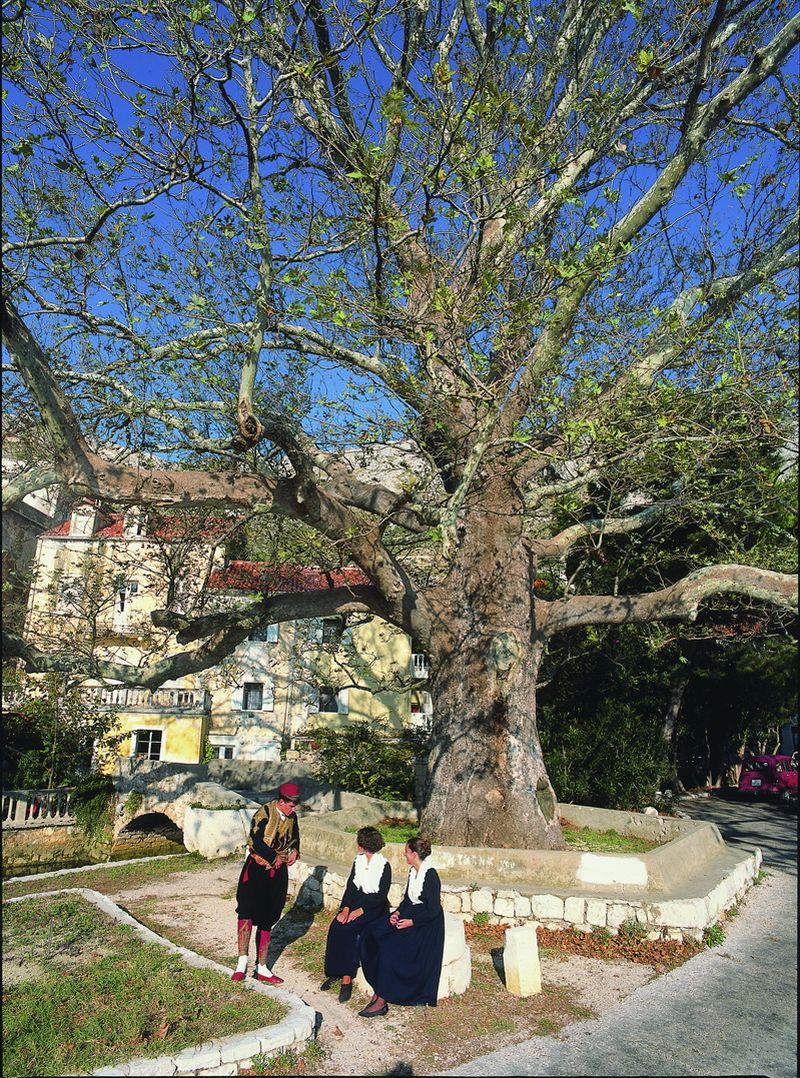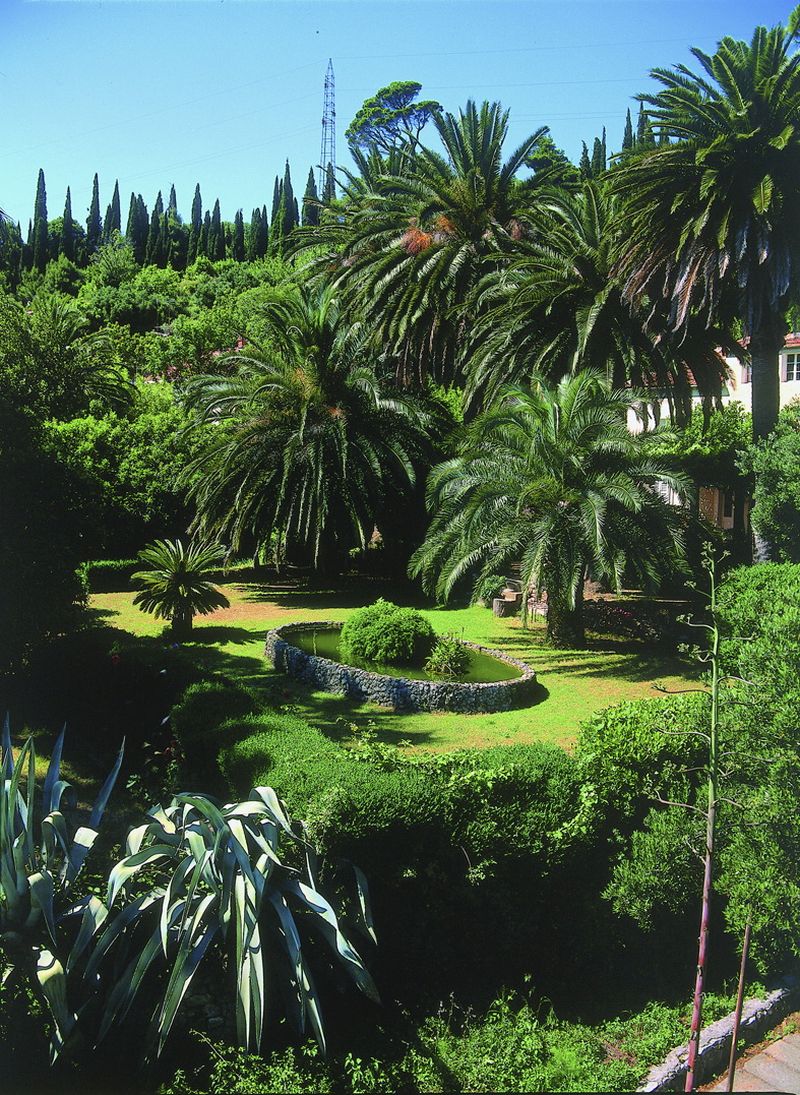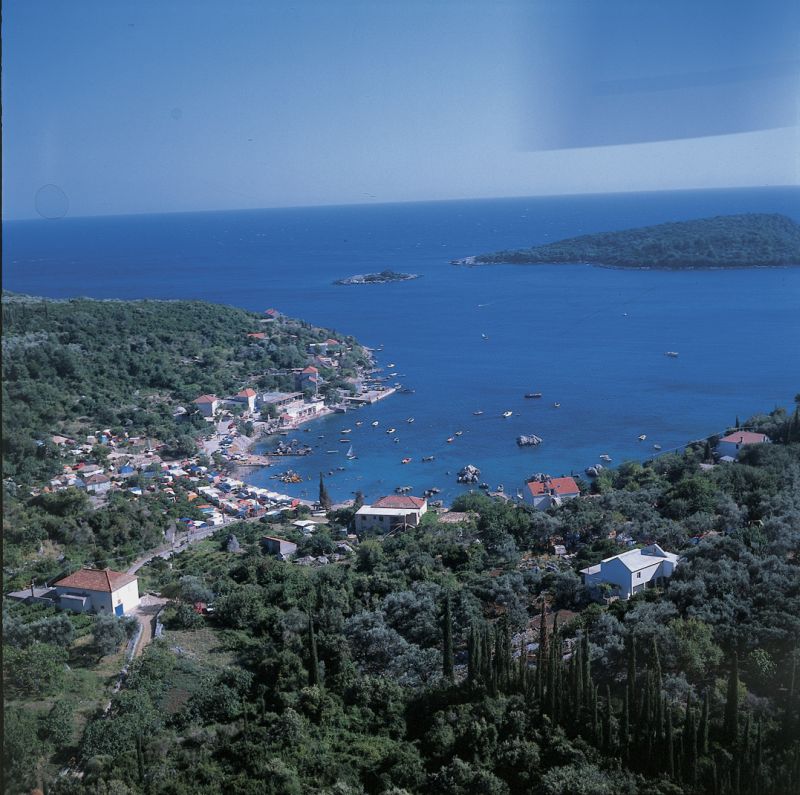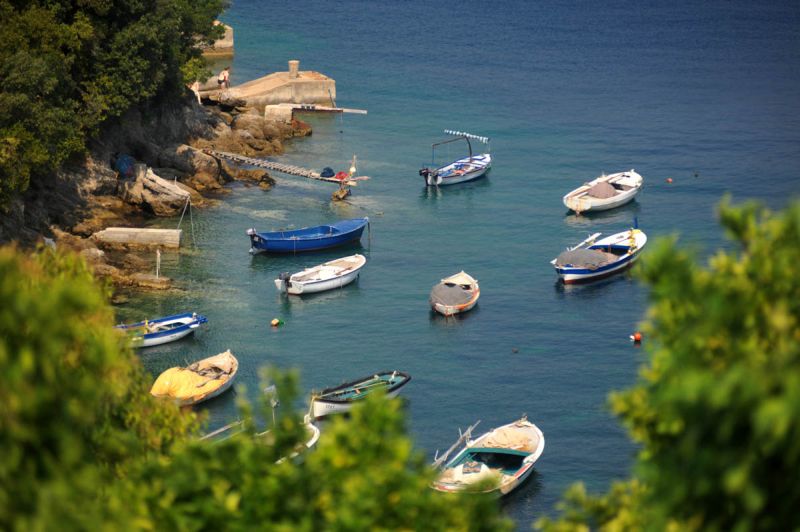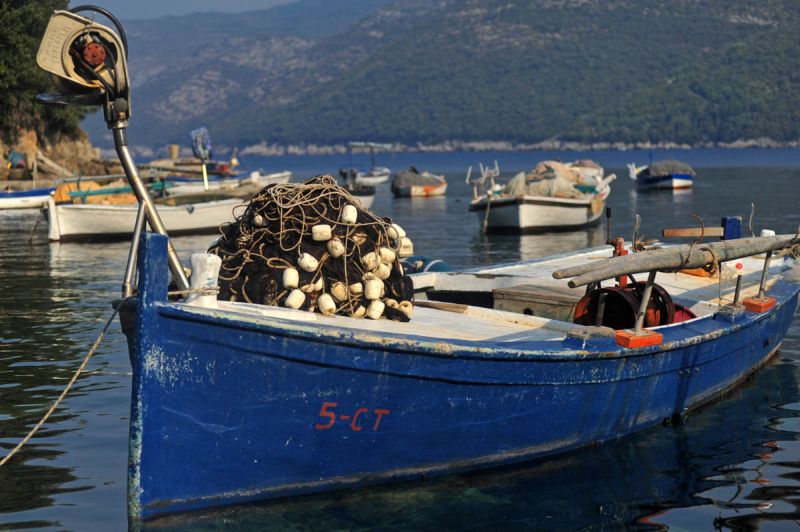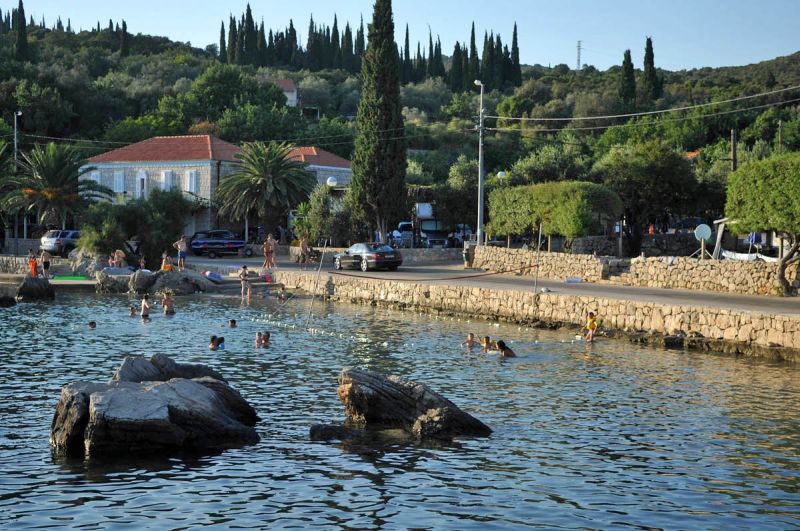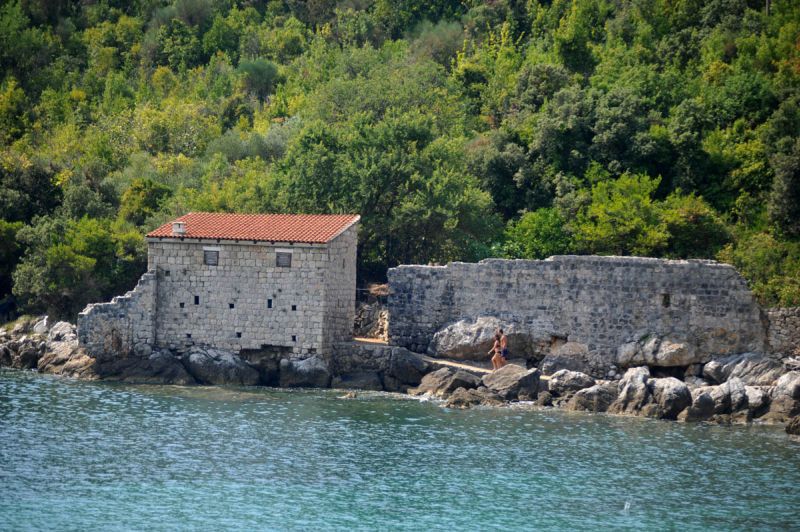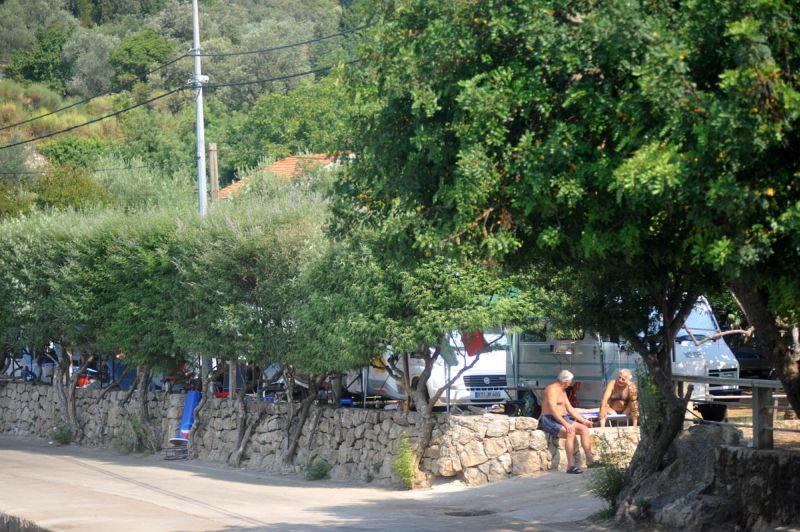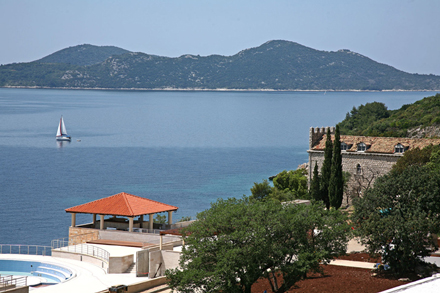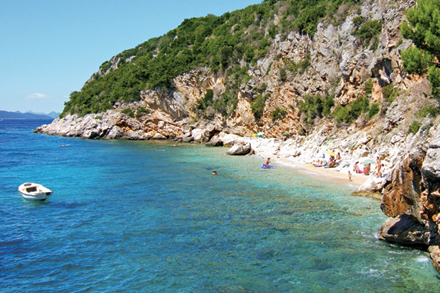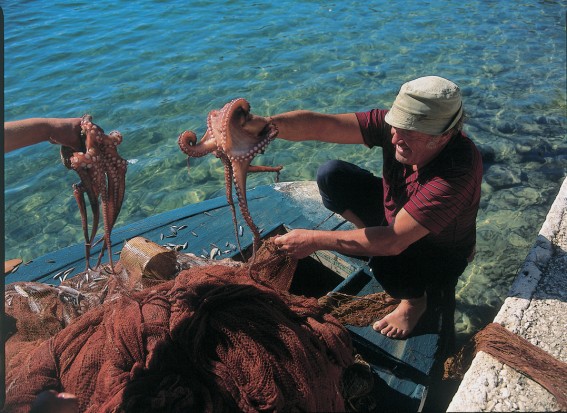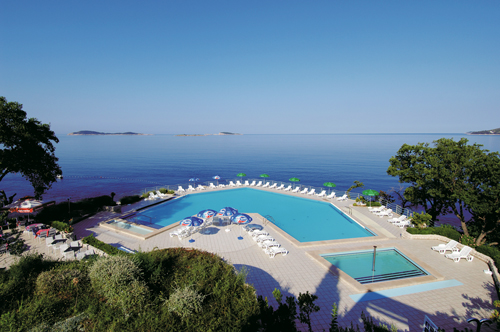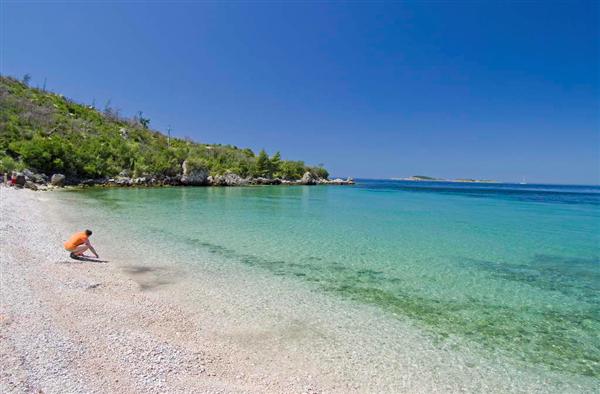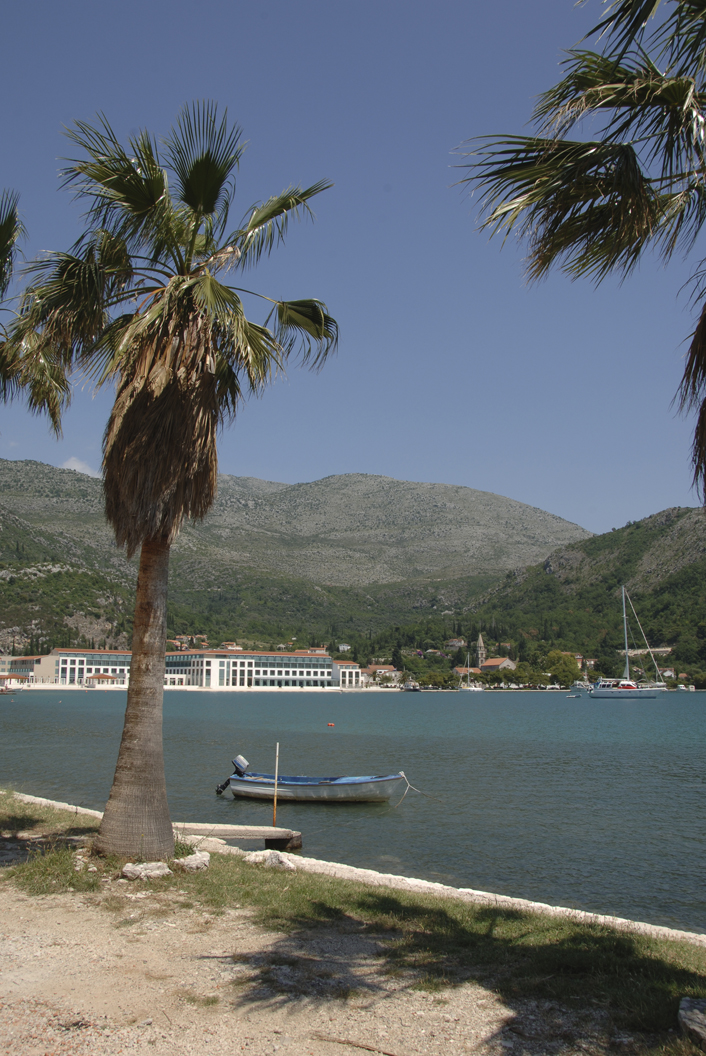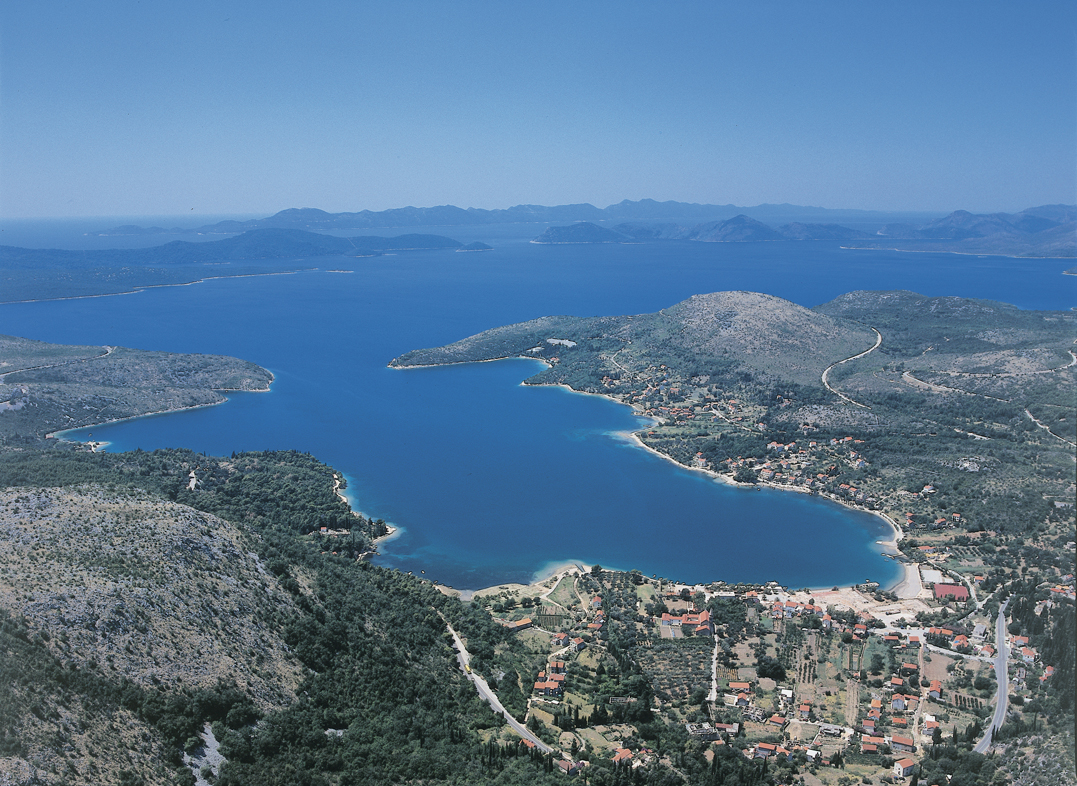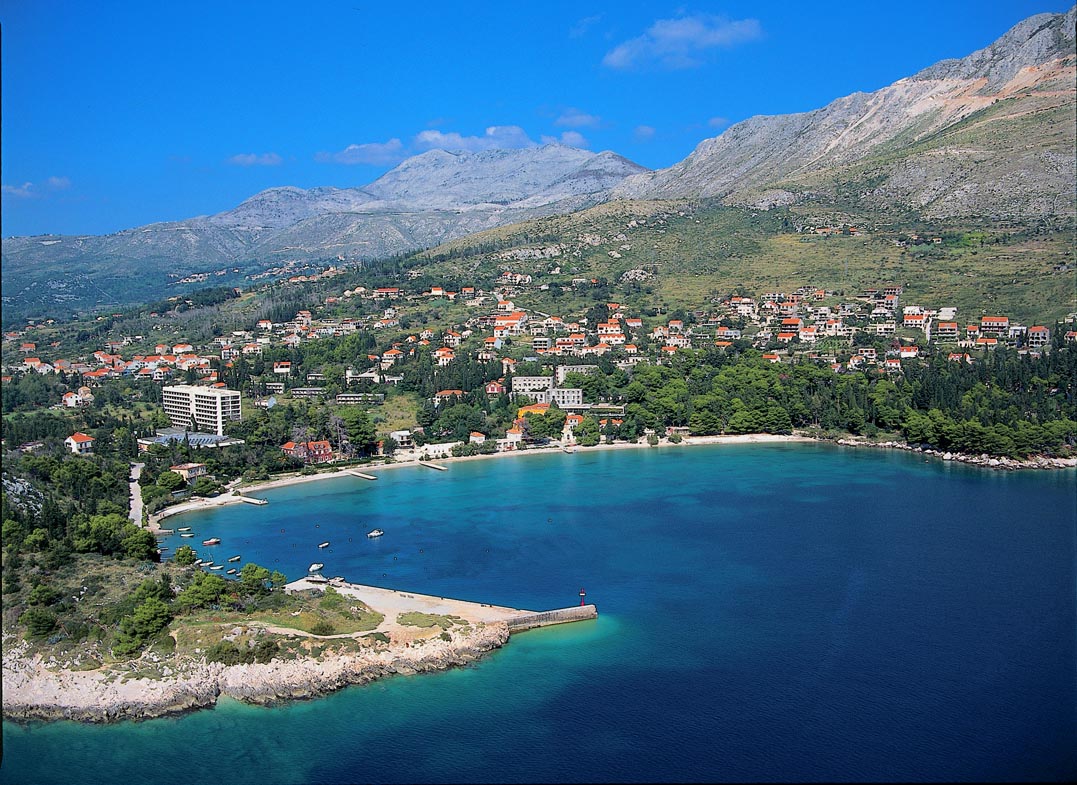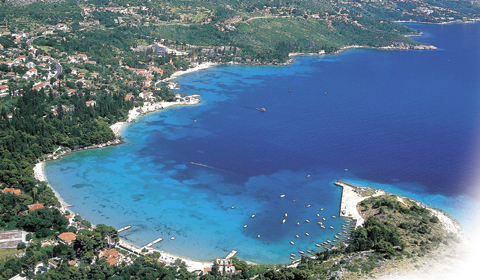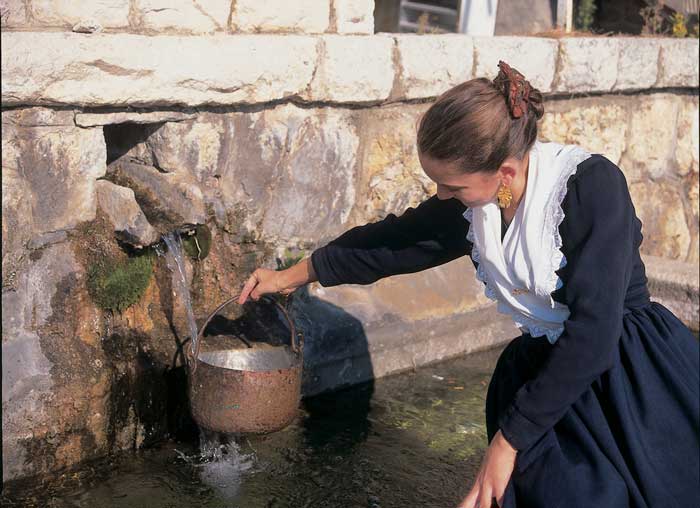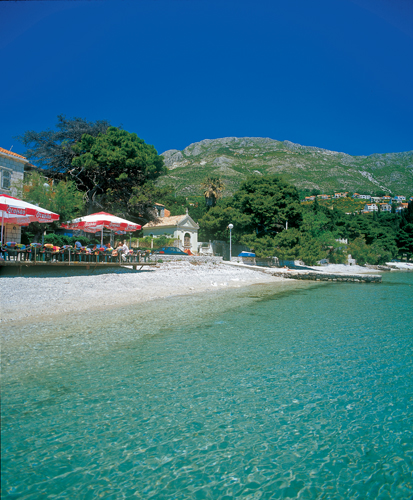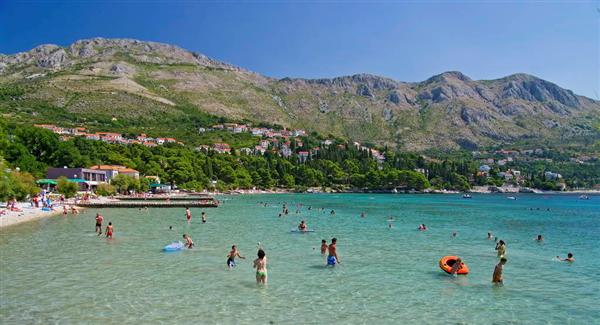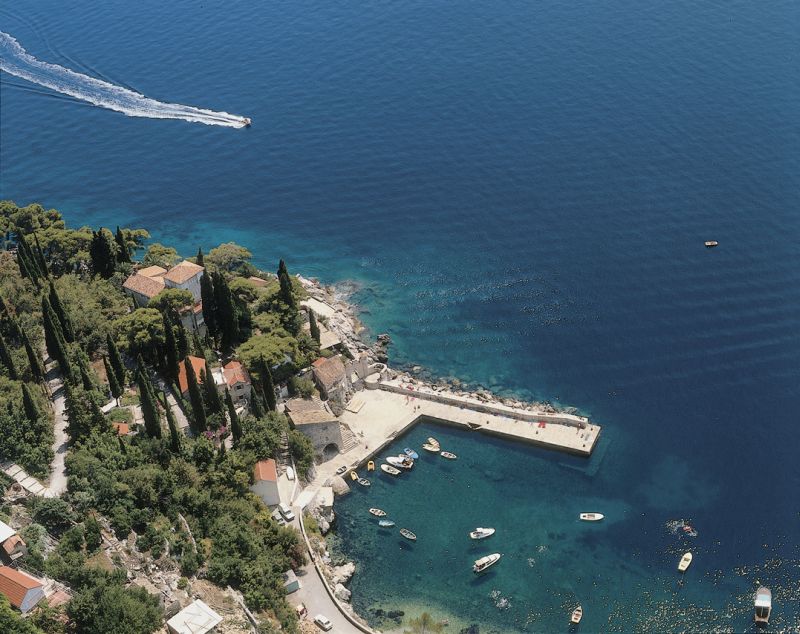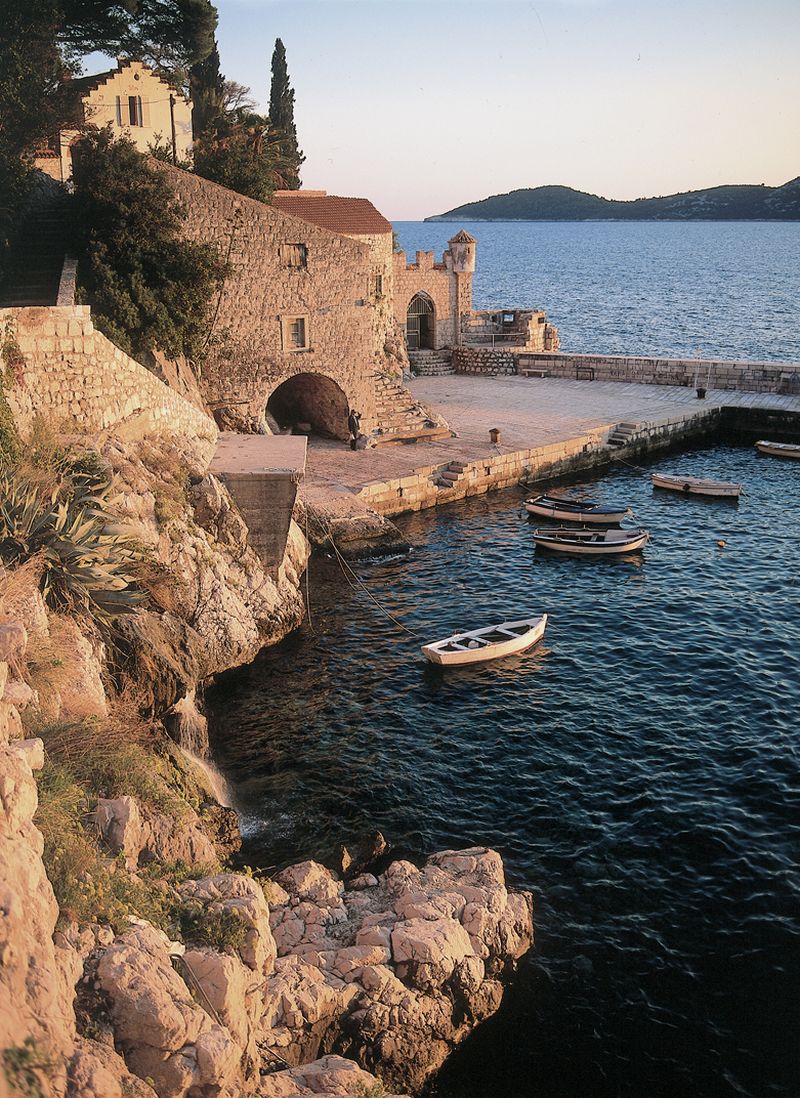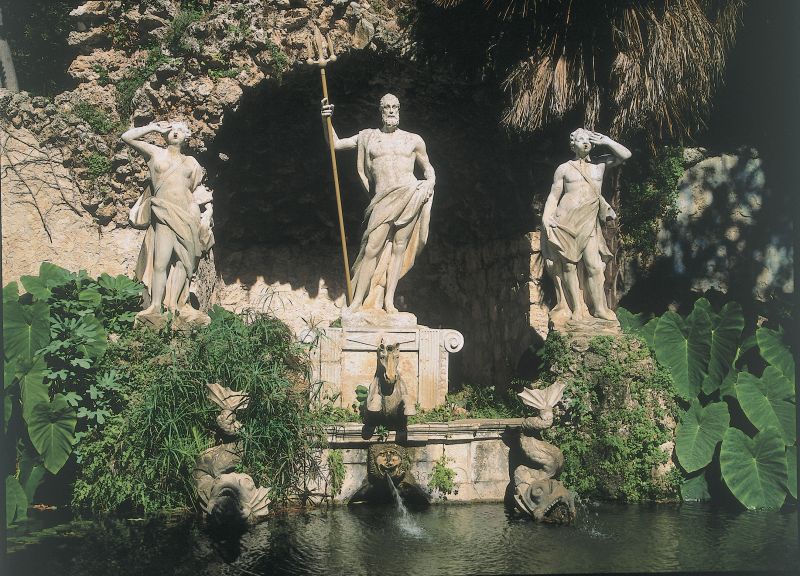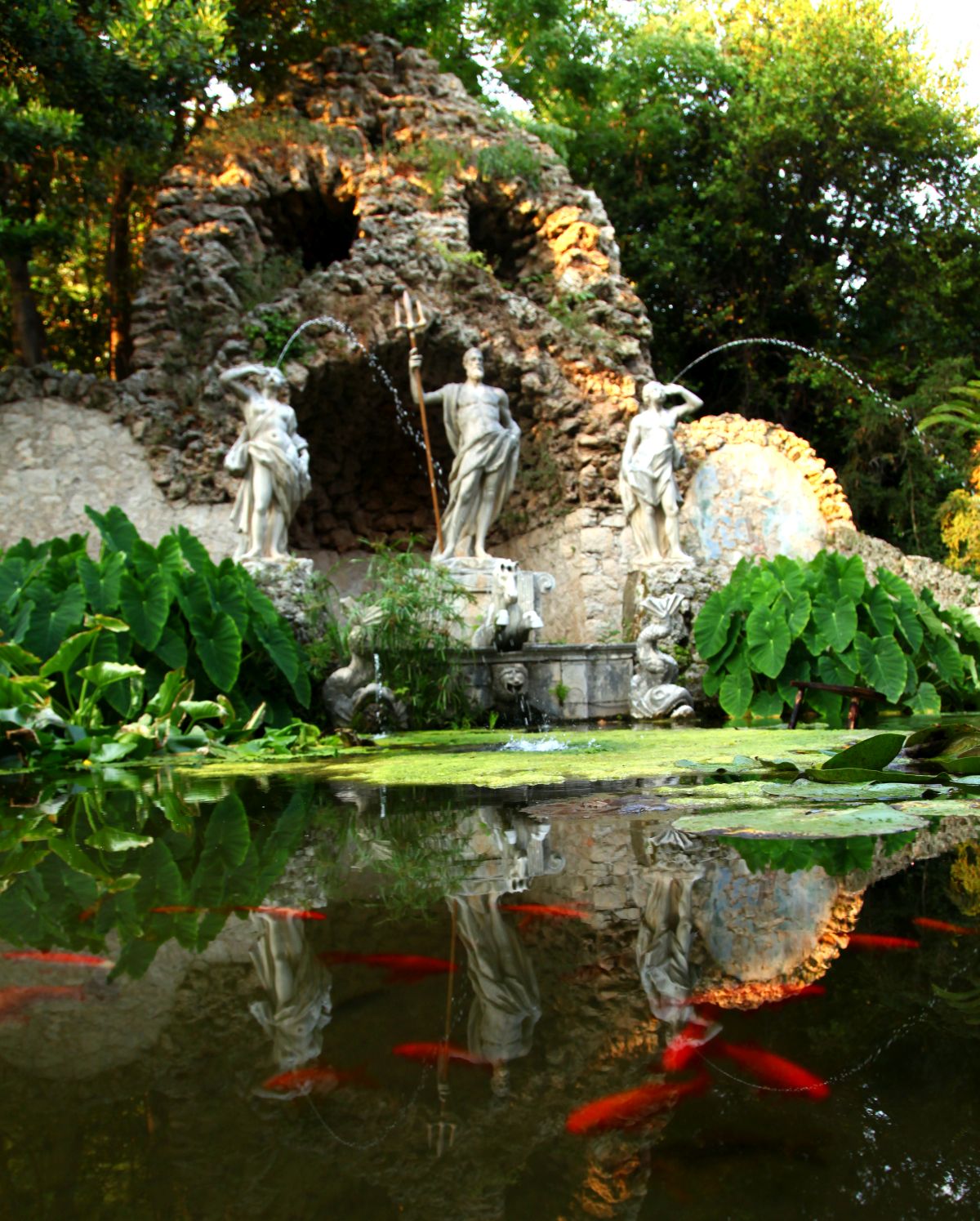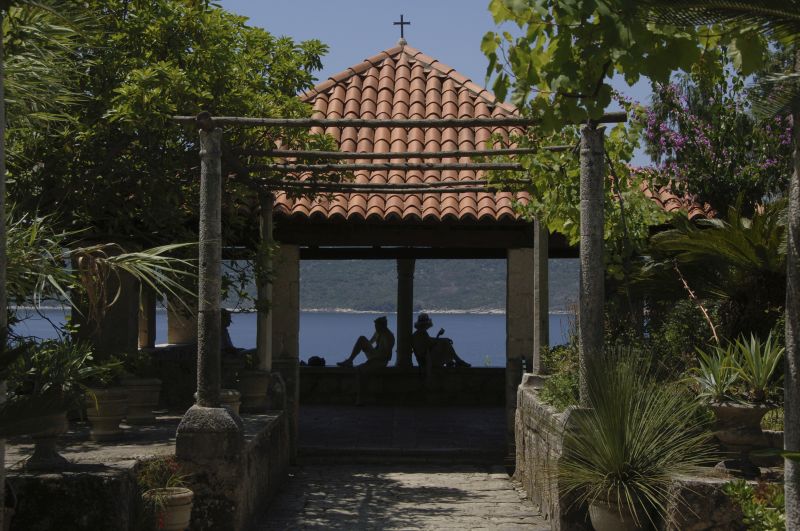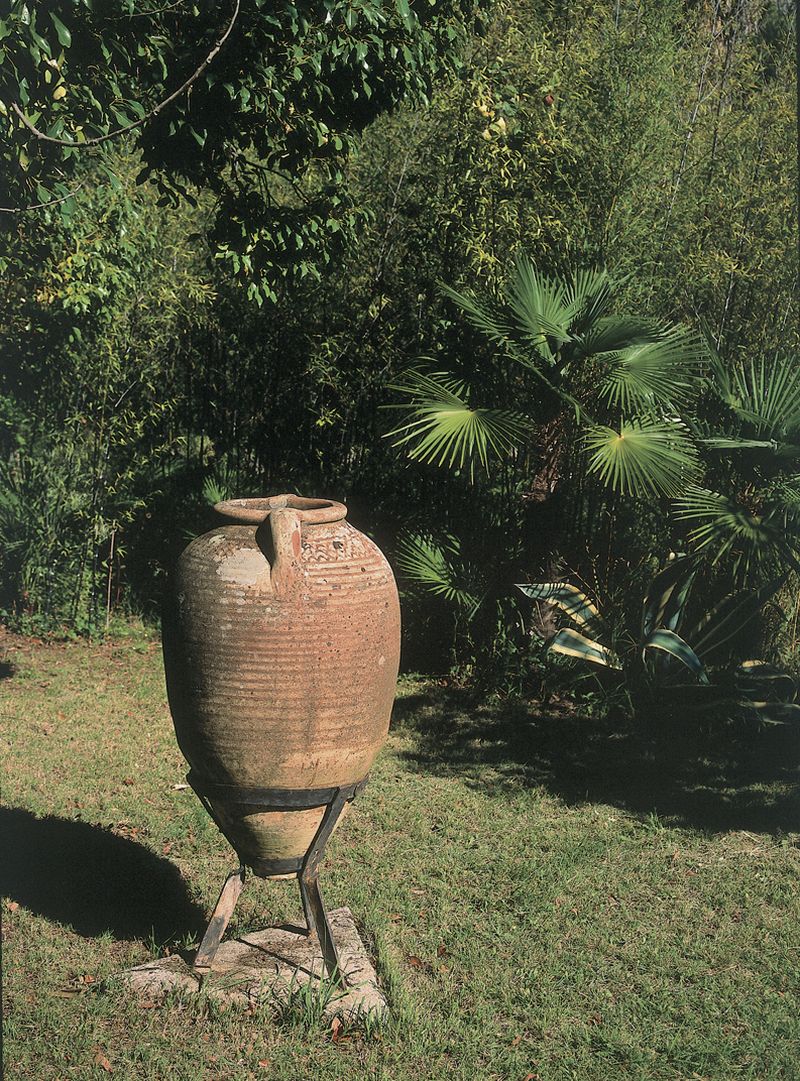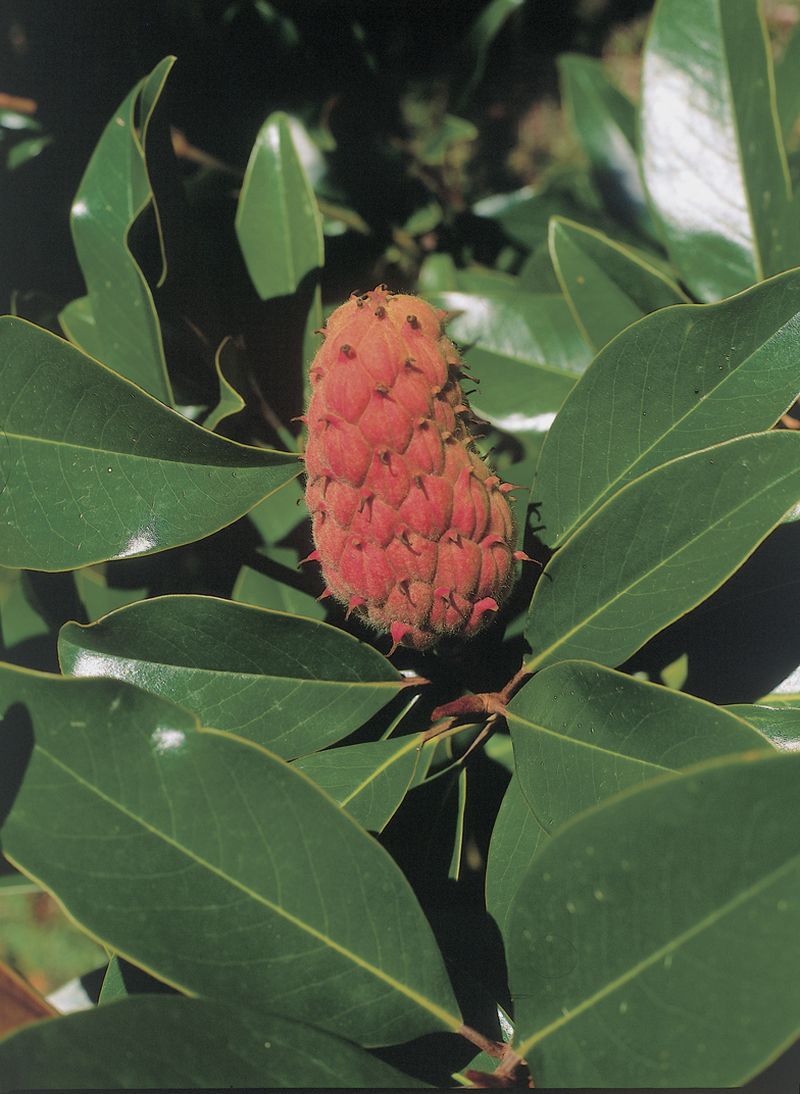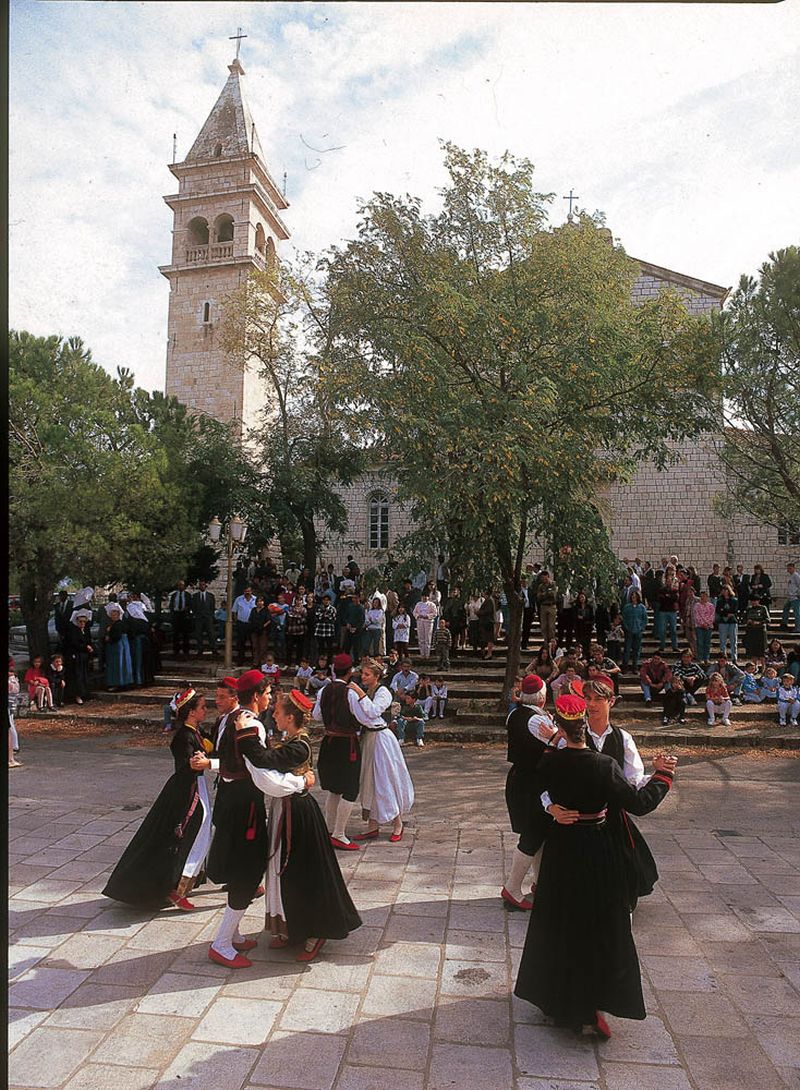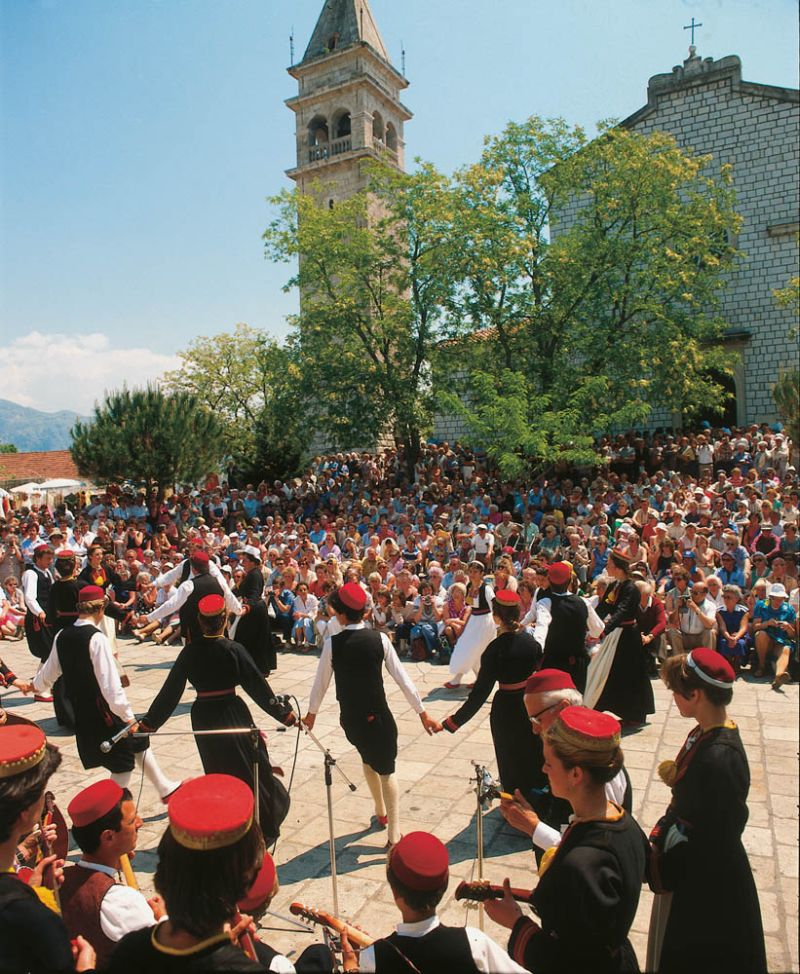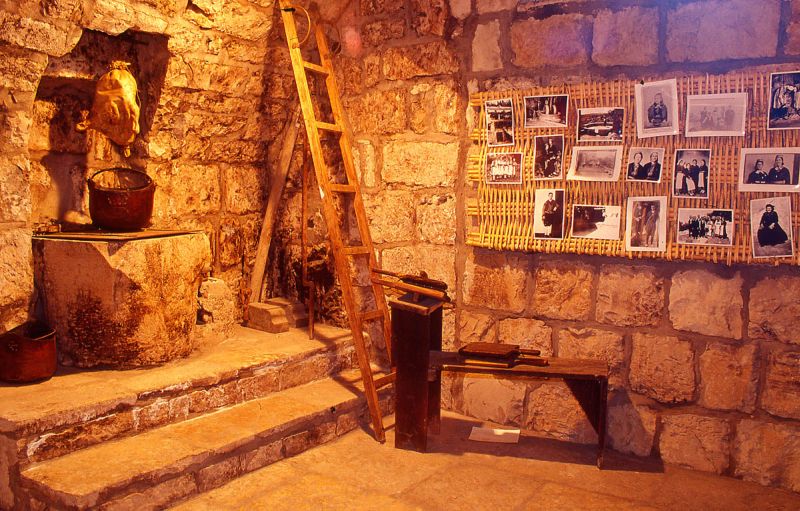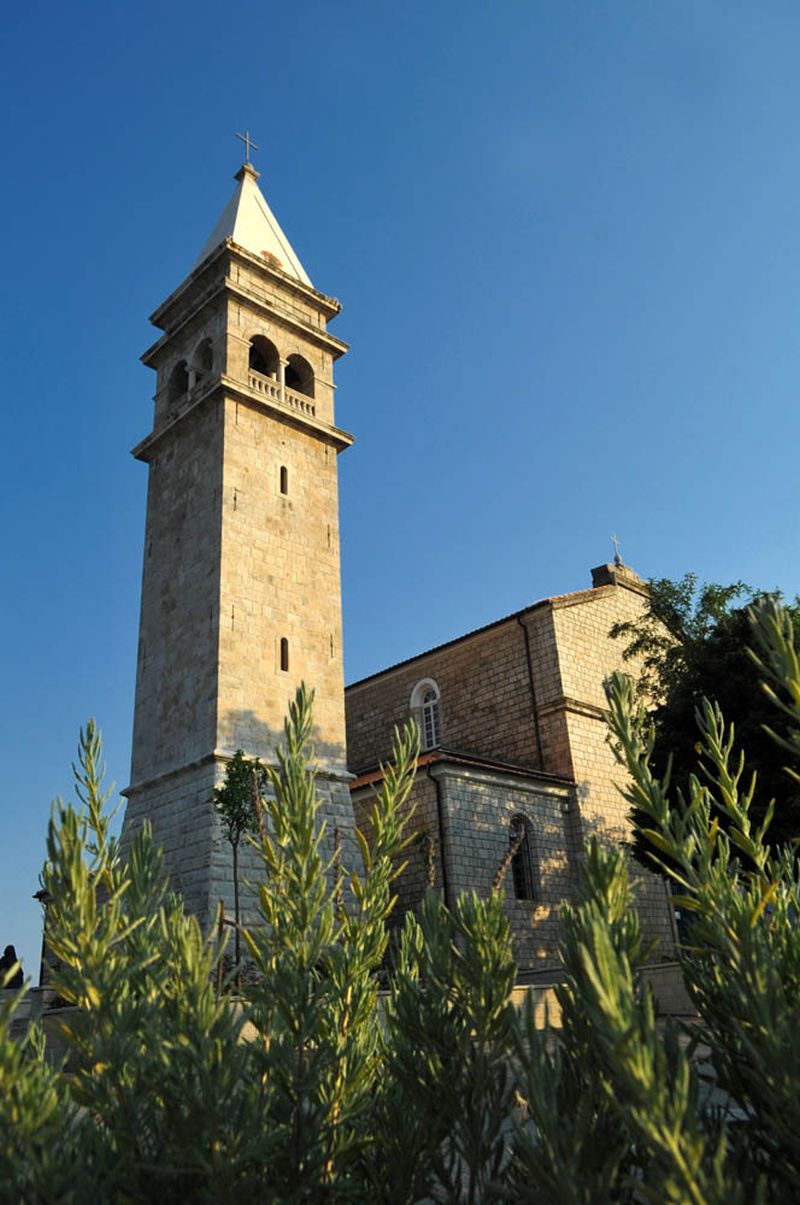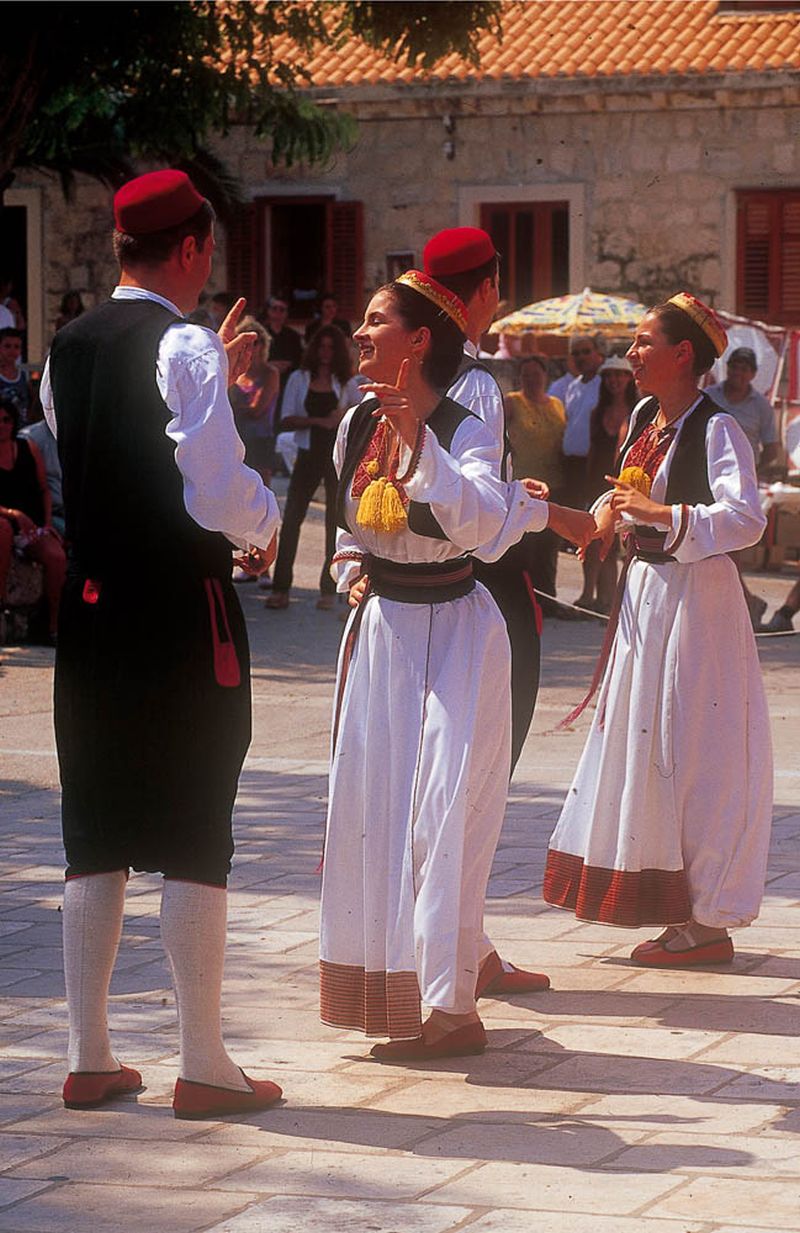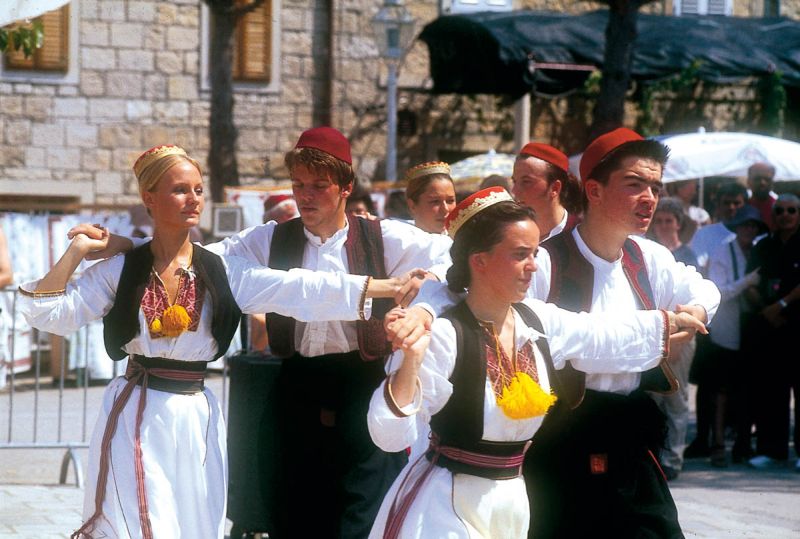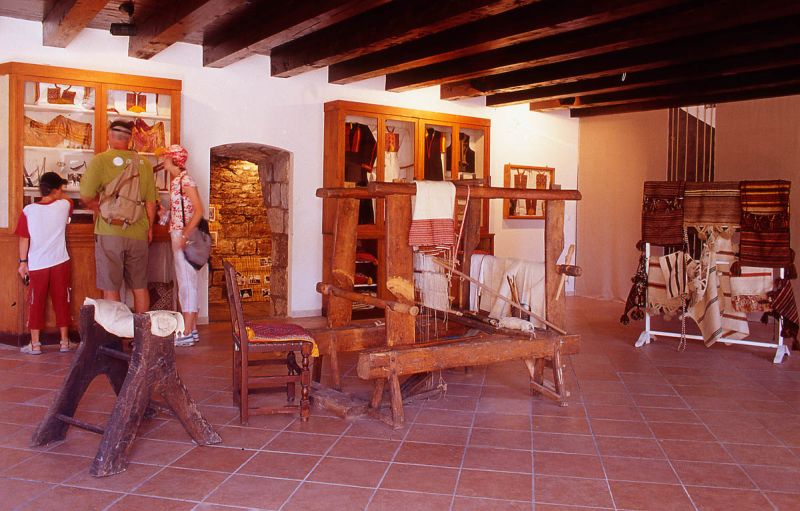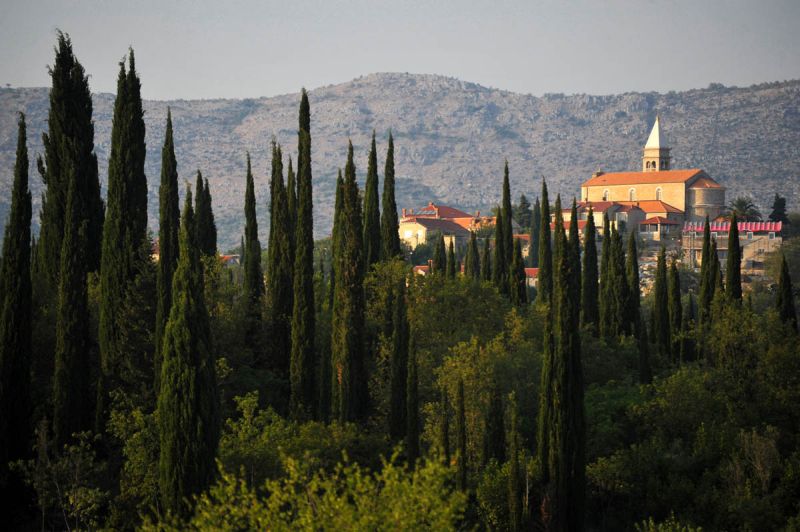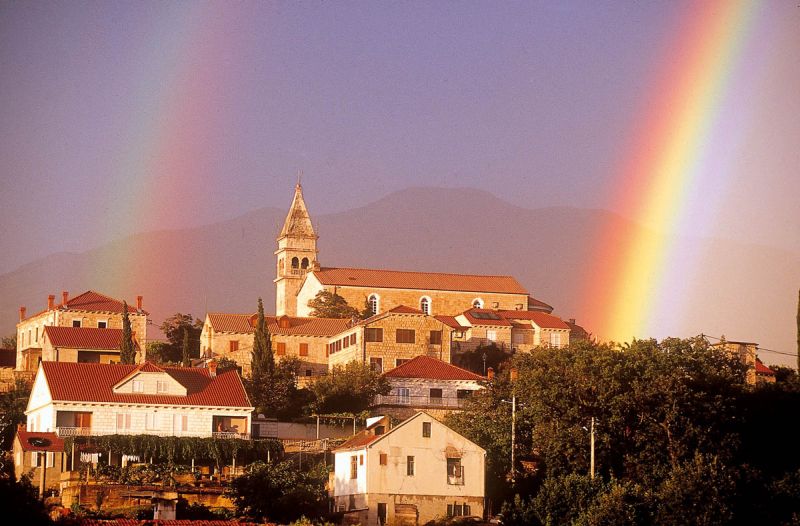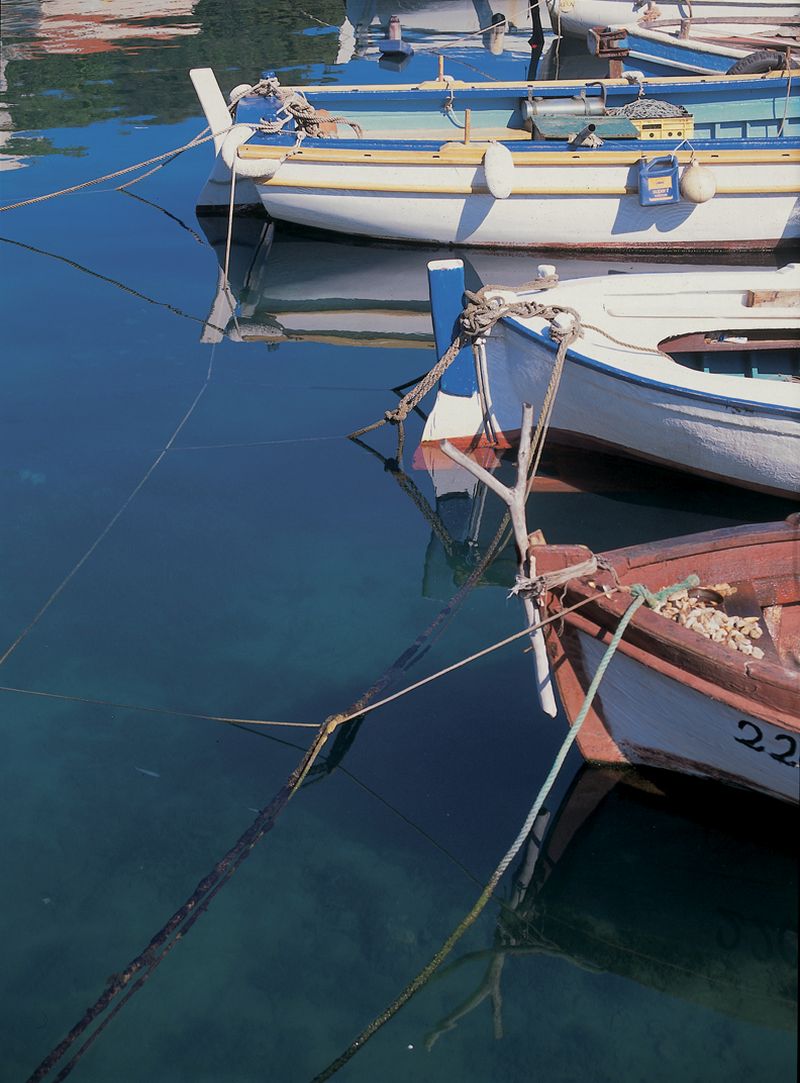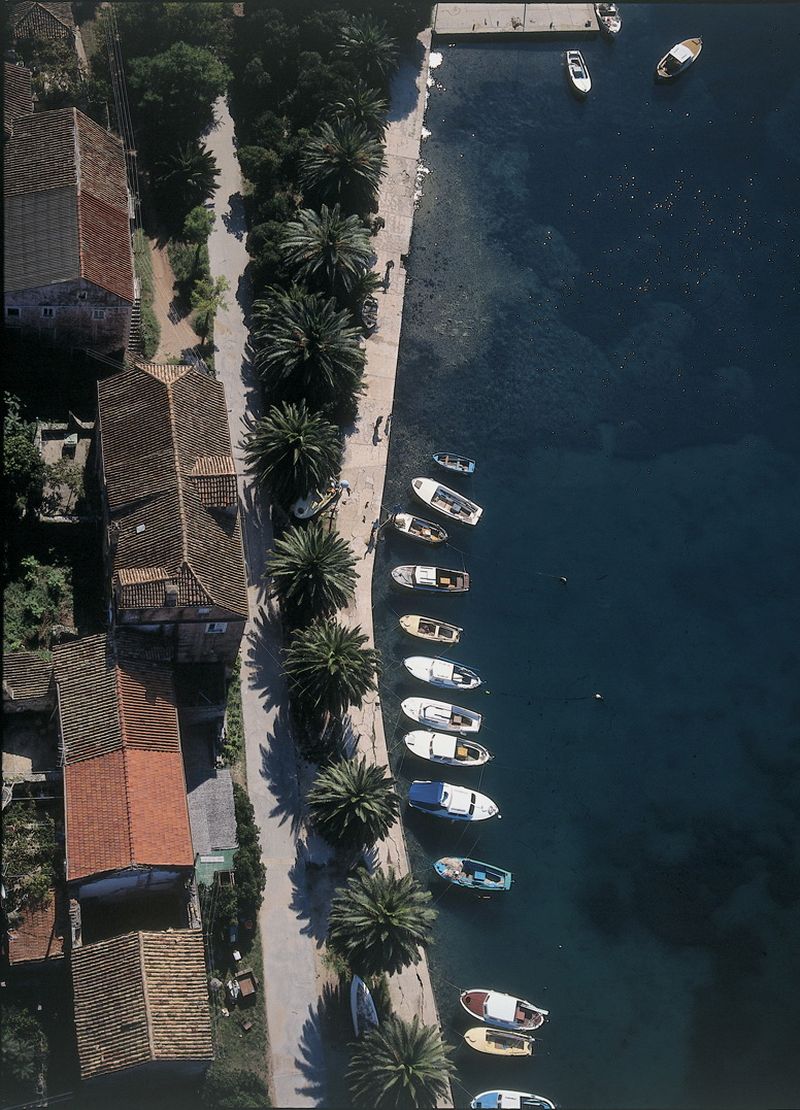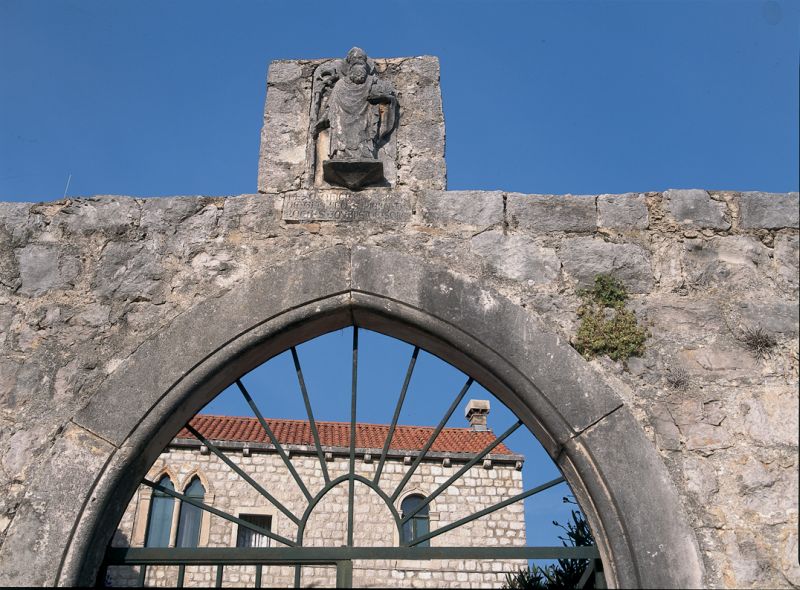Dubrovnik and Surroundings
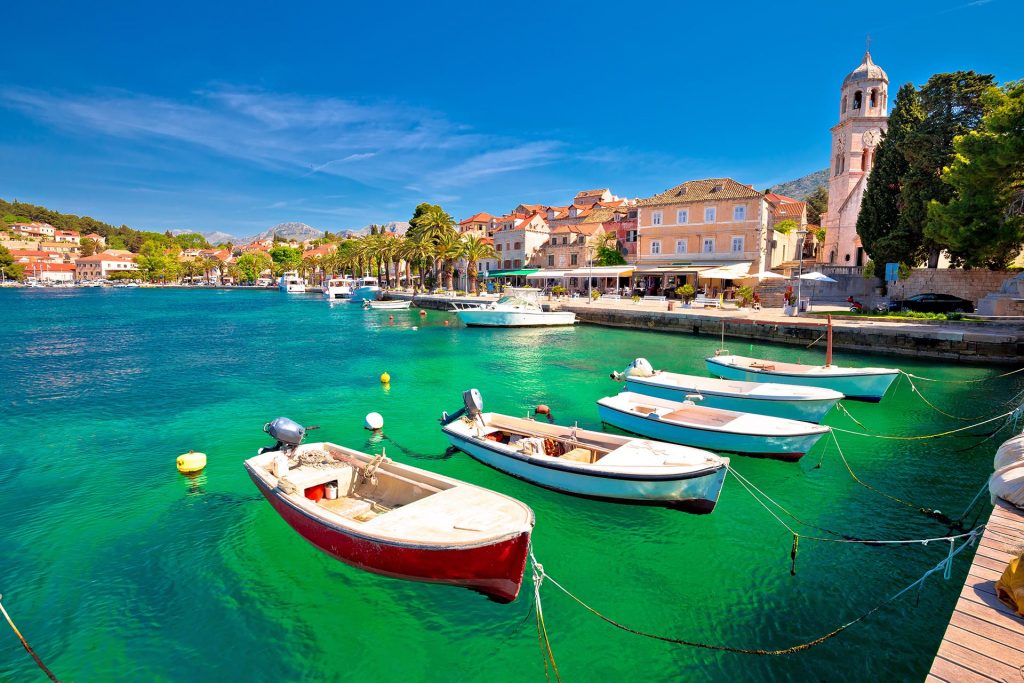
The whole Dubrovnik region is well-known for its fascinating landscapes, abundant Mediterranean vegetation, mild climate and interesting smaller settlements. In former times, it became part of the Dubrovnik Republic territory, becoming connected with the city via historical, economic and trade route ties.
In tourism, it is now called the Dubrovnik Riviera. Visiting Dubrovnik is not a complete pleasure without seeing at least a part of its surroundings: the good land and sea connections offer the possibility of organizing either shorter or longer excursions.
Information
Dubrovnik Tourist Board
Brsalje 5
20000 Dubrovnik
info@tzdubrovnik.hr
www.tzdubrovnik.hr
Tel: +385 (0) 20 312011
Fax: +385 (0) 20 323725
Dubrovnik
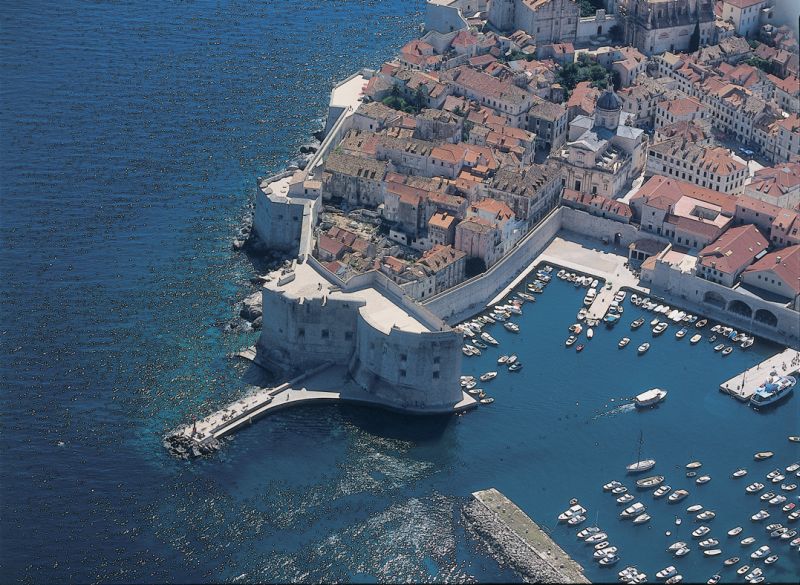 There are many beautiful places in the world, however the people of Dubrovnik claim their city to be the most beautiful. A warm southern climate, spacious blue skies, emerald green and dark blue crystal-clear sea touching the rocky shore and spilling into numerous coves and bays, onto sandy beaches and steep reefs decorated with the lushest Mediterranean and subtropical flora.
There are many beautiful places in the world, however the people of Dubrovnik claim their city to be the most beautiful. A warm southern climate, spacious blue skies, emerald green and dark blue crystal-clear sea touching the rocky shore and spilling into numerous coves and bays, onto sandy beaches and steep reefs decorated with the lushest Mediterranean and subtropical flora.
Under the mild Mediterranean climate, Dubrovnik is bathed in a sea of sun, blossoms and ripe orange and lemon tree fruit, even in the winter months. There are more than 250 sunny days per year, the average annual temperature is about 17°C, with the mean winter and summer temperatures being 10°C and 26°C respectively. The average summer sea temperature is about 21°C. The swimming season in the sea begins as early as April, sometimes even earlier, and lasts until late October, while swimming in indoor hotel pools is available year round. Dubrovnik and its surrounding areas cover the southernmost region of the Republic of Croatia and its Dalmatian province, from Neum in the west to Sutorina and Ponte Ostre in the east. The region borders with the Federation of Bosnia and Herzegovina to the north and the Republic of Montenegro to the east. This long, narrow coastal belt under the Dinaric mountains and low mountain peaks spreads to the east in the Konavle Polje (Fields), and includes Sniježnica Mountain and its mountainous region, it being its most inland point. One side borders with Herzegovina, the other with Montenegro, with the border line following the mountain peaks and at certain points coming to within a few hundred metres of the sea (such as at Duboka Ljuta).
History
The City of Dubrovnik is under UNESCO protection. According to records, the area around Dubrovnik was first inhabited somewhere between 6000 and 2000 BC. The existence of the city was lost in the cloudy course of history, with legend and historical facts being meshed together. The lack of any preserved documents makes the whole pinpointing process harder, and the few historians that are researching this topic are left with the task to distinguish fact from fiction.
What is certain is that Dubrovnik is an old city, persevering on its stony cliffs for at least 14 centuries. An even older city, Epidaurum, predates Dubrovnik, being located where the city of Cavtat now lies, about 18 kilometres southeast of Dubrovnik. At the time of its destruction it had endured for at least 10 to 12 centuries. Again, historians cannot be sure. Some believe that the Greeks founded the colony around 600BC. With the city destroyed, a number of its inhabitants fled to neighbouring regions (today’s Župa Dubrovačka), where the fortified cities of Spilan and Gradac (Burnum) were inhabited, as well as the rocky islet of Laus, which became the first city core of old Dubrovnik.
The rapid settlement of Laus resulted in the development of a new city, today’s Dubrovnik (in the 7th century) which would, on that small rocky area, grow deep roots and build a glorious and heroic history in the stormy centuries to follow. During the 7th century, the Slavic tribes, with Croats being one of the superior ones, had already set up permanent residences along the majority of the eastern Adriatic coast, with the exception of a few fortified Roman cities, which were becoming cut off from the rest of the empire in the wake of this rapid Slavic population. In comparison to the development of cities with a Roman population, a settlement was developing near Ragusium, at the foothills of Mount Srđ, which received the Croatian name Dubrovnik. The name came from the oak forests which even today are called “dubrave” today. During the 10th and 11th century, the sea strait between the two settlements became shallower due to alleviation, drying up completely at the end. When the two settlements, already joined together, were fortified and strengthened within the same city walls at the end of 12th century, the result was the Old Town of Dubrovnik, an urban centre preserved to the present day.
Lokrum
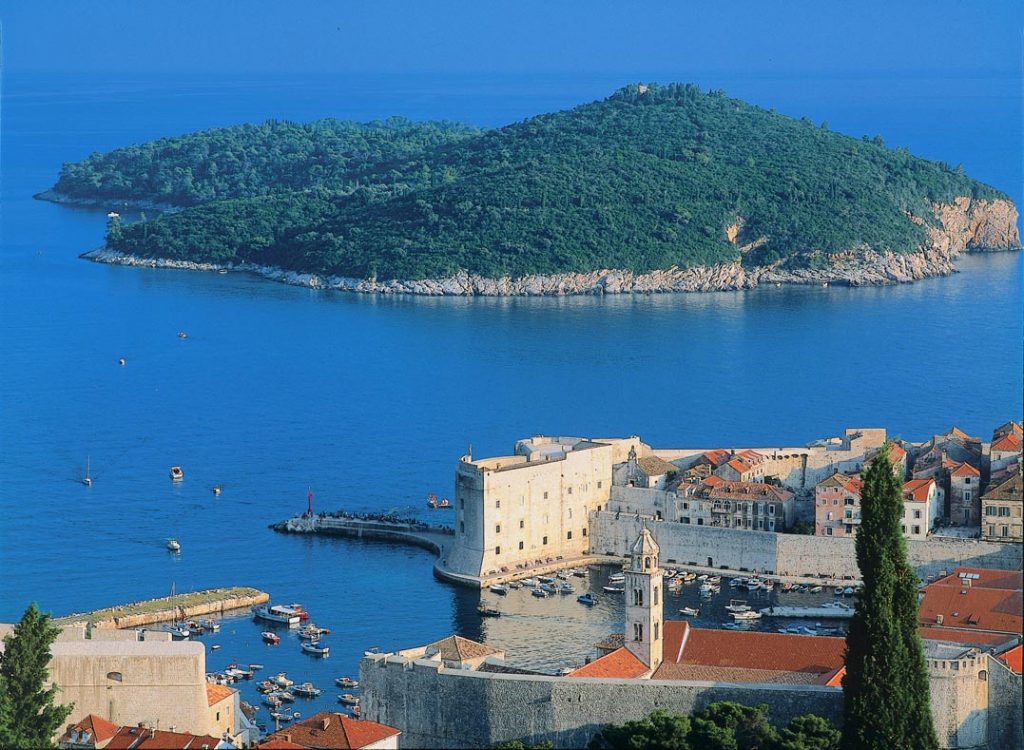 Lokrum – the eternally green islet of romantic beauty, positioned right off the coast of Dubrovnik is a true oasis of peace, and one of the most attractive excursion sights for residents of Dubrovnik and its visitors. With its maintained bathing sites and bays, view of the sunny open sea, extensive pine woods, lush subtropical vegetation, and with its old Benedictine monastery and walking trails along the shaded alleys, the islet gives an unforgettable impression.
Lokrum – the eternally green islet of romantic beauty, positioned right off the coast of Dubrovnik is a true oasis of peace, and one of the most attractive excursion sights for residents of Dubrovnik and its visitors. With its maintained bathing sites and bays, view of the sunny open sea, extensive pine woods, lush subtropical vegetation, and with its old Benedictine monastery and walking trails along the shaded alleys, the islet gives an unforgettable impression.
In the bosom of the fragrant park is the former Benedictine monastery (from the 12th century), closed down during Napoleon’s occupation. Later, the monastery and the islet as a whole came into possession of the Habsburg Archduke Maximilian and became his summer residence in 1859. Maximilian renovated the monastery in the neo-Gothic style and built a castle in the shape of a tower. Following Maximilian’s tragic death in Mexico, the islet changed hands several times, and today is a protected nature park.
During the French occupation, the French erected a citadel called “Fort Royal” at the highest point on the island, which is a lookout point today, offering the loveliest view of Lokrum and the whole of Dubrovnik.
A special attraction on Lokrum is its small lake, called the “dead sea”. The castle today is home to the Biological Institute of the Croatian Academy of Arts and Sciences and the Natural Sciences Museum, with its valuable collections and memorial collection of world renowned Dubrovnik mathematician, atomist and astronomer Ruđer Bošković (18th century). Transport to Lokrum is organized via tourist boats from the Dubrovnik old town port.
Cavtat
 Information
Information
Konavle Tourist Board
Zidine 6; 20210 Cavtat
info@cavtat-konavle.hr
visit.cavtat-konavle.com
Tel: +385 (0) 20 478025
Fax: +385 (0) 20 479025
Cavtat is the largest and the only urban centre in Konavle that has been built up deliberately. Located on the Rat peninsula, which, together with the Sustjepan peninsula, surrounds the well protected and accessible bay. In its harmonious architecture, one can observe the centuries-old natural, spiritual and material ties to the Dubrovnik Republic.
Cavtat, known as Epidaurus in antique times, was an important Roman colony in this region. After Slavic and Avarian numbers in the area rose the colony expired, forcing its inhabitants to flee to the nearby settlement Laus-Rave-Ragus, the very settlement that is the foundation of Dubrovnik. Some ancient sources mention Cavtat under the name of Ragusa Vecchia, indicating a strong connection between the two cities. During the Dubrovnik Republic, Cavtat was seen as a very important sea port, trade and administration hub in the Republic, second only to Dubrovnik.
Places that offer so much to visitors are a rare find. Even the most demanding tourist will find something suiting their wishes: the beautiful scenery, rich cultural and historic heritage combined with a wide range of services make this town a very attractive destination on the Adriatic coast. Cavtat itself is located between Dubrovnik and Konavle: one can still feel the spirit of times past and experience the old traditions permeating the area to this day. By all accounts it’s an ideal holiday resort, with something for everyone, be it exploring and enjoying hidden coves in peace, spending the day enjoying long walks along the seaside or even participating in sports and watching one of many entertaining cultural programs.
History
Cavtat (from the Latin Civitas), while being established by the Illyrians, had a turbulent record of rule and possesion: it was under Greek and Roman rule, it was seized by different powers, ravaged by invading Avars and Slavs. It had part of its population flee to the islet of Laus which later became Dubrovnik. Early on in the 15th century, Cavtat became a part of the Dubrovnik Republic when the western part of Konavle was taken over from Bosnian magnate Radoslav Pavlović.
Many famous Croats were born in Cavtat: the lawyer Baltazar Bogišić, painter Vlaho Bukovac, politician Frano Supilo to name a few . The Rector’s, or rather Captain’s, Palace is a Renaissance structure dating from 1555-1558. This is home to the Bogošić library, archive, museum and stone monument collection (including two inscriptions by the Roman Governor Dolabelle from the 1st century) and a graphical collection with over 10,000 pages compiled by Bogišić. The Baroque Church of St. Nicholas, in its current appearance from 1732, contains eight paintings of the old masters and paintings by Vlaho Bukovac in its vault. The Church of Our Lady of Snow and the Franciscan monastery with its Renaissance cloister date back to 1483. From the church, a trail heads through the pine woods to the peak of a nearby hill where the graveyard is located, and which is dominated by the Račić family mausoleum (architecturally designed and sculptured by Ivan Meštrović in 1920-1922). The Kaboga Palace also dates back to the time of Dubrovnik Republic.
Legend on the origin of the name of Cavtat
There is an interesting legend concerning the town name, as it states that two suitors asking the beautiful Cavtislava’s hand in marriage( the daughter of the Epidaurian ruler). Her father would give his approval to either suitor, depending on which one performed the bigger task. One of the suitors, a commander named Stjepan, was required to bring aquaviva from the Vodovađa source in Konavle, while the other, a knight and seafarer, was required to bring a ship brimming with silk from the far corners of the known world. On the day of the festivities, commemmorating the opening of the Epidaurian viaduct, the beautiful Cavtislava was to first drink water from a golden jar, but before she could do so a big lizard jumped out of the water, landing directly onto the girls lap. Cavtislava’s heart failed her and she died immediately. According to tales in the common tongue, the unfortunate seafarer, whose ship was sunk by a huge storm directly in front of Epidaurus, and who therefore was not able to fulfill his task, put the lizard into the viaduct since he could not bear the loss of the girl. In memory of the beautiful Cavtislava arose Cavtat to replace the ravaged town of Epidaurus, destroyed in an earthquake.
Another legend says that Cavtat derives its name from the Old-Croatian verb ‘captiti’ – ‘to blossom’, refering to the yellow juniper, a widespread sparkling plant with a sunny aura. The legend relates its doom to the catastrpohes after which the indestructible Cavtat would come back to life again and anew. “… down there, there’s something adorned with gold blossoming it the reef…”
Brsečine
Brsečine is a small town situated on a hillside above the sea. Of historical note are the Bizzaro summer residence in the town and the Zuzorić summer residence on the seaside in a picturesque cove with a lovely beach and dock. Brsečine is only 20 kilometres from the historical Dubrovnik Old Town.
Information
Dubrovnik Tourist Board
Brsalje 5
20000 Dubrovnik
info@tzdubrovnik.hr
www.tzdubrovnik.hr
Tel: +385 (0) 20 312011
Fax: +385 (0) 20 323725
Koločep
The island of the same name is part of the Dubrovnik island group (the Elaphite archipelago), situated 7 kilometres northwest of Gruž Harbour. The island has an area of 2.35 km2. Due to the limestone composition of its soil, there are no water springs or permanent superficial water sourses. The climate is mild Mediterranean. The majority of the island is covered by forests and subtropical vegetation. The economy is based on agriculture, wine making, olive growing, carob, pomegranate and citrus plantations, vegetable growing, fisheries, shipping and tourism. There are two settlements on the island, Gornje and Donje Čelo, on the northwestern coast of the island. The island is protected from the northerly bura wind by a limestone ridge; there are sandy and pebble beaches, and parks with numerous species of subtropical plants.
Konavle
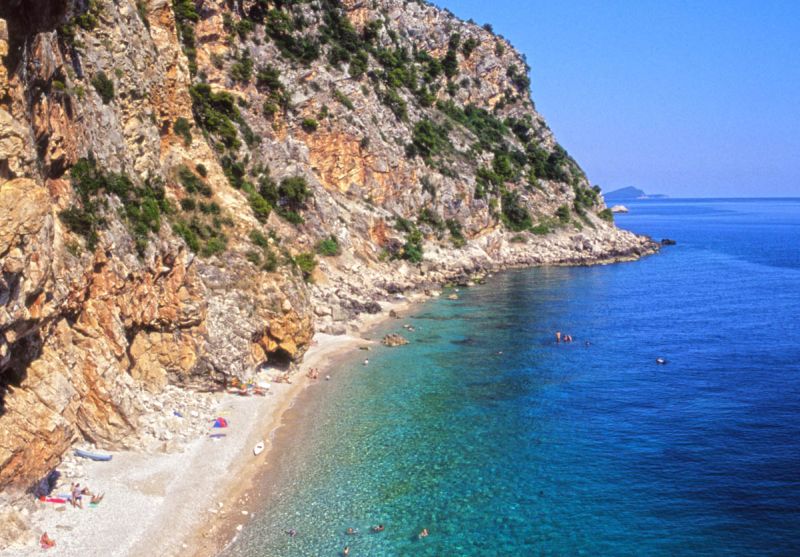 Konavle – a place in the very south of Croatia, is the most southern part of today’s Dubrovnik Riviera, with whose purchase the Dubrovnik Republic rounded off its territory in the 15th century.
Konavle – a place in the very south of Croatia, is the most southern part of today’s Dubrovnik Riviera, with whose purchase the Dubrovnik Republic rounded off its territory in the 15th century.
Konavle is a region with particular natural beauties and contrasts: mountain and valley, green hills and naked stone, the blue and the green or, as called by the inhabitants of Konavle, “Gornja” and “Donja Banda”. Fringed by the Konavle mountains in the North, bordered by the Adriatic Sea in the South, it reaches from the entry into the Bay of Kotor to the peninsula of Prevlaka in the East, and in the West, it inclines down to the cosy coves of Obod and Cavtat.
The preserved natural, unique and exceptionally precious rural architecture, numerous monuments of the thousand-year-old history of this area, traditions that are hundreds of years old and have been kept through folklore, the distinctive traditional costumes of Konavle and the Konavle embroidery, the harmony of man’s life and the nature …all of this renders Konavle unique and recognisable.
Geopolitical and Geographic Position
Konavle covers an area of 209 km2, where around 9500 inhabitants live in 33 smaller and larger settlements. Although it is a relatively small area, we can clearly distinguish three completely different parts: the rocky coast, the central part – the field, and the mountain region. The northern mountain part, which borders Bosnia and Herzegovina and Montenegro, is dominated by the mountain massif of Sniježnica /1234 m/ and Bjelotina. The fertile Konavle field represents the central part of Konavle; it stretches over 35 kilometres lengthwise and over 12 kilometres breadthways, and the streams of rivers Ljuta, Konavočica and Kopačica merge in its central part. In the central part of the Konavle continent belt, the vertical steep coast of the Konavle rocks is dominating, whereas in the south the Molunat peninsula is the primary attraction with all its coves, while in the west we have Župa bay with its beautiful coves, peninsulas and small islands of Cavtat.
Almost one third of the Konavle area is covered with forests: in the rocky coastal part, the low forests of macchias, pines and cypresses predominate, whereas in the northern mountain part you can also find oak and hornbeam forests next to cypresses and macchias.
The generally defining climate in Konavle is the Mediterranean one: mild winters, autumns warmer and rainier than the springs, dry and hot summers, and the predominating winds are jugo, bora, and the mistral. With regards to the characteristic climate and the typical soil, the most prevent agricultural cultures are the vine and the olive, but other fruit and garden cultures as well, as the stock farming are absolutely represented.
The generally defining climate in Konavle is the Mediterranean one: mild winters, autumns warmer and rainier than the springs, dry and hot summers, and the predominating winds are jugo, bora, and the mistral. With regards to the characteristic climate and the typical soil, the most prevent agricultural cultures are the wine and olives, but other fruit and garden cultures as well, as the stock farming are also well represented.
History of Konavle
The name Konavle derives from the Latin word “canale”, “canalis”, in the local dialect “konali”, “kanali”, what is connected with a viaduct, which in the Roman times carried water from Vodovađa to Epidaurum, today’s Cavtat.
Available historical traces are telling about the life in this region, ranging back to Palaeolithic and Neolithic times (over four thousand years before the Common Era). We can track the concrete course of the Konavle history from the fourth and fifth century BC onwards, when this area was populated by Illyrian tribes of the Plereians and the Ardians, while the Romans submitted the Illyrians in the second century BC. At the beginning of the 7th century, Avarian and Slavic tribes break into Europe and also into this region, and founded Epidaurum in 614 (today’s Cavtat), as well as the entire region of Konavle, whereby they displaced the inhabitants from former times, the Illyrians and the Romans. Shortly afterwards, the Croats instigated the Slavs and evicted the Avarians to the Pannonian Valley, while a part of the Croatian tribes stayed in Dalmatia, and one part stayed in the Pannonian Valley. In the following years, the rulers and the states in this area are alternating (Doclea, Rascia, Bosnia), and Konavle is, although only for a short period of time, also independent, namely in the 9th century.
In the 14th century, Konavle comes under the governance of the Dubrovnik Republic, when Dubrovnik’s inhabitants bought the following from former owners, Bosnian great land owner: in 1419, the eastern part of Konavle from Sandaljo Hranić, and in the year 1426 the western part from Radoslav Pavlović, whereat they paid the same amount of 36 000 Perpers (currency unit in Montenegro) respectively. Konavle was of specific importance for the Dubrovnik Republic, not only due to agriculture, stock farming and seafaring, but also because of its strategic value. Therefore, Dubrovnik’s inhabitants were keeping the power skilfully and effectively in their hands during their entire ruling, as well as they did on their other estates, which were lead by a sovereign in Konavle, who resided in a castle in Pridvorje.
With the fall of the Dubrovnik Republic in the year 1807, Konavle comes under French administration, and afterwards under the rule of the Austrian-Hungarian Monarchy, under which it will stay until its decay in 1918 and the formation of the Yugoslavian Kingdom. After World War II, Konavle is an integral part of the socialist Yugoslavia within the borders of the SR (Socialist Republic) of Croatia; and today, after the endured aggression in the Homeland War (from 1991 to 1995), it enjoys the fruits of the independency of the Republic of Croatia.
Information
Konavle Tourist Board
Zidine 6; 20210 Cavtat
info@cavtat-konavle.hr
visit.cavtat-konavle.com
Tel: +385 (0) 20 478025
Fax: +385 (0) 20 479025
Kupari
Kupari has a large sandy beach, modern hotels in the shade of palm trees and oleanders, and was once the top tourism destination in the Dubrovnik region. It was once the location where kuparica (roof tiles) was produced, which covered the roofs of old Dubrovnik.
Above Kupari, the forested hills of Pelegrin rise up, with a small chapel standing guard at its peak. Around it are monuments from the earliest of times. Not far from Kupari, at Čibača, there are ruins dating back to Illyrian and Roman times. The entire Župa region hides many unexplored archaeological localities.
Information
Župa dubrovačka Tourist Board
Šetališe dr.F. Tuđmana 7
Srebreno; 20207 Mlini
info@dubrovnik-riviera.hr
www.dubrovnik-riviera.hr
Tel: +385 (0) 20 486254
Fax: +385 (0) 20 487003
Lopud
Lopud – an island of lush Mediterranean and subtropical vegetation, beautiful gardens, parks and beaches, Lopud is one of the most developed islands for tourism in the Dubrovnik region. In the past, it was an island of captains, which provided the most sailors for the navy of the Dubrovnik Republic. Also from Lopud was the famed sailor and ship owner Miho Pracat.
According to the Dubrovnik historian Razzi, Lopud had 30 churches in the 16th century, as well as numerous summer residences, several monasteries and many more inhabitants than today. Visible on the island are the ruins of early medieval churches, summer residences and fortresses.
The Franciscan monastery from 1483 with its cloister, defensive towers and walls and its Church of St. Mary of Splica holds much valuable art: the polyptych of Pietro de Giovanni, the triptych from the workshop of Nikola Božidarević, the polyptych of Girolan da Santacroce, paintings by the Flemish master Bassan and more. The Church of Our Lady of Sunjaiz from the 15th century is a valuable cultural monument and contains paintings by Palma the elder, Natalino da Murano, Mateja Junčić and others. The island has good boat connections with Dubrovnik from Gruž Harbour.
Mlini
An old historical town, one of the most beautiful places in the Župa Dubrovačka, Mlini is situated along the banks of the steeply falling Zavrelje River, and boasts sandy beaches and inlets with clean shallow water. The ample humidity and warm climate have turned this town into fragrant parks and gardens with all kinds of plants and vegetation.
It received its name from the mlini (mills) that were once turned by the Zavrelje River. The town is filled with historical monuments and legends. According to one such legend, St. Hilarius burnt the Epidaurous dragon on the shores of Mlini in the 4th century, thus saving Epidaurum from earthquake, evil, barbarian attack and ravage. In honour of their saviour, the Church of St. Illar was erected, and he became the patron saint of the area. The Chapel of St. Rok on the coast and the Chapel of the Holy Spirit at Krstac are of historical importance as well.
An ancient graveyard is located on the hills above the seashore. The tombstones tell the tale of the oldest families of Župa Dubrovačka from the Roman period of the old Astarea.
Mlini is one of the most developed tourist places in the Dubrovnik area, with lovely hotels, situated in the brightest ambient, at the foot of the historical Spilan hill, virtually grown into the architecture of the hill and its forested rocks. There is also the possibility of accommodation in a home environment, in the lovely homes and numerous villas.
Information
Župa dubrovačka Tourist Board
Šetališe dr.F. Tuđmana 7
Srebreno; 20207 Mlini
info@dubrovnik-riviera.hr
www.dubrovnik-riviera.hr
Tel: +385 (0) 20 486254
Fax: +385 (0) 20 487003
Molunat
Molunat is a fishing and tourist settlement in the extreme south of the Croatian coastline at the distance of 40 km SE from Dubrovnik and 20 km from the airport and from Cavtat. It is connected by bus lines three times a day. Molunat is located at the distance of 12 nautical miles from Cavtat and 18 nautical miles from Dubrovnik.
Molunat offers private accommodation in family apartment houses, pensions and camping-sites. There is a post office, a slipway with adjacent berths, a shop offering home-grown fruit and vegetables, a restaurant, two coffee shops, the diving club and the fishing cooperative.
The name Molunat has Illyrian and Greek root (molos – the port) referring to ancient ports of Mali and Veliki Molunat protected against bad weather conditions. There are many traces of various archaelogical sites on the sea floor, on the mainland, on its walls and fortifications. The Molunat area has an ecologically preserved nature ecosystem with numerous species of mediterranean medicinal herbs. Its indented coastline is full of coves around the peninsula, the two islets with shallow and clear sea with plenty of fish. Veliki and Mali Škoj and Gora od Molunta are covered by dense macchia, holm-oaks, cypress trees and the umbrella-pines. Due to the favourable land configuration, the climate is mild, mediterranean with hot summers and refreshing mistral blowing in the afternoon hours.
Information
Konavle Tourist Board
Zidine 6; 20210 Cavtat
info@cavtat-konavle.hr
visit.cavtat-konavle.com
Tel: +385 (0) 20 478025
Fax: +385 (0) 20 479025
Orašac
Orašac is a picturesque town with a nice beach, spring water and ancient olive groves. It is well known for its excursion destination restaurants, in particular the ‘Soderini’ castle, once owned by one of the great men of Florence who had to flee his hometown from the Medici family and he found shelter and peace here (16th century).
Today, the castle has been repurposed into a hospitality facility. It has an excellent restaurant and the best equipped auto campground in the Dubrovnik region (running water, post office, health clinic). Accommodation is also available in lovely private homes.
Information
Dubrovnik Tourist Board
Brsalje 5
20000 Dubrovnik
info@tzdubrovnik.hr
www.tzdubrovnik.hr
Tel: +385 (0) 20 312011
Fax: +385 (0) 20 323725
Plat
Among the dense cypress and pine woods stretching down to the sandy beaches, this well known summer resort is at the site of the former city of Plateja.
The modern hotel complexes have comfortable hotels, private beaches and the clearest sea you can imagine. Accommodations are also available in private homes and villas.
Information
Župa dubrovačka Tourist Board
Šetališe dr.F. Tuđmana 7
Srebreno; 20207 Mlini
info@dubrovnik-riviera.hr
www.dubrovnik-riviera.hr
Tel: +385 (0) 20 486254
Fax: +385 (0) 20 487003
Slano
One of the more picturesque towns in the Dubrovnik region and the gentlest bay over 2 kilometres in length, Slano is a must-see on the Adriatic coast with beautiful beaches, dense pine woods and olive groves and a long cultural tradition. There are also many monuments, some dating back to ancient times.
The Franciscan Church of St. Jerome, one of the nicest in the region, is from the 15th century. Also well preserved are the Rector’s Palace from the Dubrovnik Republic era and the summer residence of the well known Ohmučević family, whose members were skilled sailors and writers. The road from Slano leads to Zavala in Herzegovina, the location of the famed ‘Vjetrenica’ karst cave (14 kilometres away).
Slano is the biggest and most important small town and a community centre. Traditionally, the villages in the immediate hinterland are municipally linked to it, forming a constituent part of the Community of the Dubrovnik Coast. Slano is 30 kilometres from the centre of Dubrovnik, situated in a spacious and beautiful bay of the same name, formerly a flooded valley, next to the walled shoreline, opposite the island of Šipan and divided by the Koločep Channel. Slano is attractive due to its numerous pebble beaches, lush vegetation and pleasant climate. It was once on the line-boat route to Dubrovnik and Korčula, and also on local routes to other smaller ports and jetties on the Dubrovnik Coast and on the peninsula of Pelješac (Zaton, Orašac, Trsteno, Doli, Ston, etc.). There are also boat services to the neighbouring islands and ports in the broader area (Šipan, Mljet, etc ).
The bay is protected from the wind, making it an ideal haven and anchorage for ships, boats and yachts. Its economy is based on tourism with accommodation provided by the hotels “Admiral” and “Osmine”, private pensions, apartments, campsites and other venues; also on agriculture (olives, vines, fruit), fishing and other marine activities.
Information
Dubrovnik Primorje Tourist Board
Trg Ruđera Boškovića 1
20232 Slano
tzo@dubrovackoprimorje.hr
www.visitslano.com
Tel: +385 (0) 20 871236
Fax: +385 (0) 20 871555
Srebreno
This magical town is situated in the midst of the coastline full of dense Mediterranean vegetation, primarily agave, palms and pines. Its old name was Subbrenum, as long ago, it was situated near the fortress Brenum, where the inhabitants of devastated Epidaurum fled to in the 7th century.
With scores of preserved architecture from olden times and ruins of fortresses, churches and graveyards, Srebreno exudes an atmosphere for explorers and visitors yearning for learning something about local history.
Information
Župa dubrovačka Tourist Board
Šetališe dr.F. Tuđmana 7
Srebreno; 20207 Mlini
info@dubrovnik-riviera.hr
www.dubrovnik-riviera.hr
Tel: +385 (0) 20 486254
Fax: +385 (0) 20 487003
Trsteno
The beauty of nature and the dense vegetation make Trsteno one of the most attractive places to visit in the Dubrovnik region.
Trsteno has a long cultural tradition, and is home to the Gučetić (Gozze) family residence, once one of the most well-known families, who had a castle and estate here. The humble and learned Gučetić family has had a long line of poets and artists; they were also great lovers of nature, and they themselves planned and grew the ‘Arboretum’ of today, one of the oldest Renaissance parks on our coast.
Two gigantic plane-trees, several centuries old, attract the attention of all visitors and passers-by. Accommodation is available in private homes.
Information
Dubrovnik Tourist Board
Brsalje 5
20000 Dubrovnik
info@tzdubrovnik.hr
www.tzdubrovnik.hr
Tel: +385 (0) 20 312011
Fax: +385 (0) 20 323725
Zaton
Veliki (Large) and Mali (Small) Zaton are located in a picturesque environment, surrounded by inlets with sandy beaches.
Both locations are very pleasant for summer vacations. Accommodations are available both in resorts and private homes. There are several excellent restaurants in the towns.
Information
Dubrovnik Tourist Board
Brsalje 5
20000 Dubrovnik
info@tzdubrovnik.hr
www.tzdubrovnik.hr
Tel: +385 (0) 20 312011
Fax: +385 (0) 20 323725
Čilipi
This lovely Konavle town, with its large hillside stone church, has become an international meeting place for numerous tourists arriving on Sundays to observe traditional folklore performances. Held every Sunday (from March to late October and several times throughout the winter) from under clear blue skies, the musical and dance performances are enjoyed by locals and tourists alike.
Visitors may also visit the “Konavle Homeland Museum”, decorated as a Konavle home, which show beautiful examples of the Konavle folk costume, as well as artefacts and jewellery. Also available are a number of original handmade souvenirs, in particular some Konavle embroidery sold by women wearing traditional folk apparel. The tourist association organizes tourist accommodation in very comfortable homes.
Information
Konavle Tourist Board
Zidine 6; 20210 Cavtat
info@cavtat-konavle.hr
visit.cavtat-konavle.com
Tel: +385 (0) 20 478025
Fax: +385 (0) 20 479025
Šipan
Šipan is the largest island in the Elaphite archipelago, and is situated 17 kilometres from Dubrovnik. It is separated from the mainland by the Koločep Channel; 16.5 km2 (9.1 km long, 2.6 km wide). Between two limestone ridges, the taller (Velji Point, 243 m) on the northeast and the lower on the southwest, there is a valley where olives, prunes, vineyards, carob, almonds, oranges, and citrus fruits are grown. Tourism has a special place on the island. The sunken portions of the valley extend to the northwest to create the Šipanska Luka (Port of Šipan) inlet and to the southeast to create the inlet of Suđurađ. On the southeast extension of the tallest ridges is the small island of Ruda.
The main towns are Šipanska Luka (Luka) and Suđurađ. The island has ferry line connections to Dubrovnik. The island was first mentioned by its current name in 1371. The remains of Roman villas have been discovered in Šipanska Luka. There are numerous architectural monuments from the Middle Ages: the remains of Church of St. Peter on Velji Point (11th century), the Church of St. Ivan with its frescos (11th century, expanded in the 15th century) in Silova Sela, and the pre-Romantic Church of St. Michael (Mihovil) from the 11th century, a Romantic-Gothic house, a Gothic tower, and the Renaissance Church of the Holy Spirit from 1569, all built as part of the Benedictine monastery in Pakljena. During the 15th century on Šipan, summer homes were built by government officials in Dubrovnik.
At Šipanska Luka, there is the late Gothic Church of St. Stephan with a painting of Pantaleone (second half of the 15th century), and the Sorkočević family summer home stands out in particular (15th century). In the 15th century, a Gothic Rector’s Palace was constructed above Šipanska Luka, bearing bifora on its facade (an inscription from 1450 is written above the Gothic courtyard gates).
Information
Dubrovnik Tourist Board
Brsalje 5
20000 Dubrovnik
info@tzdubrovnik.hr
www.tzdubrovnik.hr
Tel: +385 (0) 20 312011
Fax: +385 (0) 20 323725
- Dubrovnik
-
Dubrovnik
 There are many beautiful places in the world, however the people of Dubrovnik claim their city to be the most beautiful. A warm southern climate, spacious blue skies, emerald green and dark blue crystal-clear sea touching the rocky shore and spilling into numerous coves and bays, onto sandy beaches and steep reefs decorated with the lushest Mediterranean and subtropical flora.
There are many beautiful places in the world, however the people of Dubrovnik claim their city to be the most beautiful. A warm southern climate, spacious blue skies, emerald green and dark blue crystal-clear sea touching the rocky shore and spilling into numerous coves and bays, onto sandy beaches and steep reefs decorated with the lushest Mediterranean and subtropical flora.Under the mild Mediterranean climate, Dubrovnik is bathed in a sea of sun, blossoms and ripe orange and lemon tree fruit, even in the winter months. There are more than 250 sunny days per year, the average annual temperature is about 17°C, with the mean winter and summer temperatures being 10°C and 26°C respectively. The average summer sea temperature is about 21°C. The swimming season in the sea begins as early as April, sometimes even earlier, and lasts until late October, while swimming in indoor hotel pools is available year round. Dubrovnik and its surrounding areas cover the southernmost region of the Republic of Croatia and its Dalmatian province, from Neum in the west to Sutorina and Ponte Ostre in the east. The region borders with the Federation of Bosnia and Herzegovina to the north and the Republic of Montenegro to the east. This long, narrow coastal belt under the Dinaric mountains and low mountain peaks spreads to the east in the Konavle Polje (Fields), and includes Sniježnica Mountain and its mountainous region, it being its most inland point. One side borders with Herzegovina, the other with Montenegro, with the border line following the mountain peaks and at certain points coming to within a few hundred metres of the sea (such as at Duboka Ljuta).
History
The City of Dubrovnik is under UNESCO protection. According to records, the area around Dubrovnik was first inhabited somewhere between 6000 and 2000 BC. The existence of the city was lost in the cloudy course of history, with legend and historical facts being meshed together. The lack of any preserved documents makes the whole pinpointing process harder, and the few historians that are researching this topic are left with the task to distinguish fact from fiction.
What is certain is that Dubrovnik is an old city, persevering on its stony cliffs for at least 14 centuries. An even older city, Epidaurum, predates Dubrovnik, being located where the city of Cavtat now lies, about 18 kilometres southeast of Dubrovnik. At the time of its destruction it had endured for at least 10 to 12 centuries. Again, historians cannot be sure. Some believe that the Greeks founded the colony around 600BC. With the city destroyed, a number of its inhabitants fled to neighbouring regions (today’s Župa Dubrovačka), where the fortified cities of Spilan and Gradac (Burnum) were inhabited, as well as the rocky islet of Laus, which became the first city core of old Dubrovnik.The rapid settlement of Laus resulted in the development of a new city, today’s Dubrovnik (in the 7th century) which would, on that small rocky area, grow deep roots and build a glorious and heroic history in the stormy centuries to follow. During the 7th century, the Slavic tribes, with Croats being one of the superior ones, had already set up permanent residences along the majority of the eastern Adriatic coast, with the exception of a few fortified Roman cities, which were becoming cut off from the rest of the empire in the wake of this rapid Slavic population. In comparison to the development of cities with a Roman population, a settlement was developing near Ragusium, at the foothills of Mount Srđ, which received the Croatian name Dubrovnik. The name came from the oak forests which even today are called “dubrave” today. During the 10th and 11th century, the sea strait between the two settlements became shallower due to alleviation, drying up completely at the end. When the two settlements, already joined together, were fortified and strengthened within the same city walls at the end of 12th century, the result was the Old Town of Dubrovnik, an urban centre preserved to the present day.
- Lokrum island
-
Lokrum
 Lokrum – the eternally green islet of romantic beauty, positioned right off the coast of Dubrovnik is a true oasis of peace, and one of the most attractive excursion sights for residents of Dubrovnik and its visitors. With its maintained bathing sites and bays, view of the sunny open sea, extensive pine woods, lush subtropical vegetation, and with its old Benedictine monastery and walking trails along the shaded alleys, the islet gives an unforgettable impression.
Lokrum – the eternally green islet of romantic beauty, positioned right off the coast of Dubrovnik is a true oasis of peace, and one of the most attractive excursion sights for residents of Dubrovnik and its visitors. With its maintained bathing sites and bays, view of the sunny open sea, extensive pine woods, lush subtropical vegetation, and with its old Benedictine monastery and walking trails along the shaded alleys, the islet gives an unforgettable impression.In the bosom of the fragrant park is the former Benedictine monastery (from the 12th century), closed down during Napoleon’s occupation. Later, the monastery and the islet as a whole came into possession of the Habsburg Archduke Maximilian and became his summer residence in 1859. Maximilian renovated the monastery in the neo-Gothic style and built a castle in the shape of a tower. Following Maximilian’s tragic death in Mexico, the islet changed hands several times, and today is a protected nature park.
During the French occupation, the French erected a citadel called “Fort Royal” at the highest point on the island, which is a lookout point today, offering the loveliest view of Lokrum and the whole of Dubrovnik.
A special attraction on Lokrum is its small lake, called the “dead sea”. The castle today is home to the Biological Institute of the Croatian Academy of Arts and Sciences and the Natural Sciences Museum, with its valuable collections and memorial collection of world renowned Dubrovnik mathematician, atomist and astronomer Ruđer Bošković (18th century). Transport to Lokrum is organized via tourist boats from the Dubrovnik old town port.
- Cavtat
-
Cavtat
 Information
Information
Konavle Tourist Board
Zidine 6; 20210 Cavtat
info@cavtat-konavle.hr
visit.cavtat-konavle.com
Tel: +385 (0) 20 478025
Fax: +385 (0) 20 479025Cavtat is the largest and the only urban centre in Konavle that has been built up deliberately. Located on the Rat peninsula, which, together with the Sustjepan peninsula, surrounds the well protected and accessible bay. In its harmonious architecture, one can observe the centuries-old natural, spiritual and material ties to the Dubrovnik Republic.
Cavtat, known as Epidaurus in antique times, was an important Roman colony in this region. After Slavic and Avarian numbers in the area rose the colony expired, forcing its inhabitants to flee to the nearby settlement Laus-Rave-Ragus, the very settlement that is the foundation of Dubrovnik. Some ancient sources mention Cavtat under the name of Ragusa Vecchia, indicating a strong connection between the two cities. During the Dubrovnik Republic, Cavtat was seen as a very important sea port, trade and administration hub in the Republic, second only to Dubrovnik.
Places that offer so much to visitors are a rare find. Even the most demanding tourist will find something suiting their wishes: the beautiful scenery, rich cultural and historic heritage combined with a wide range of services make this town a very attractive destination on the Adriatic coast. Cavtat itself is located between Dubrovnik and Konavle: one can still feel the spirit of times past and experience the old traditions permeating the area to this day. By all accounts it’s an ideal holiday resort, with something for everyone, be it exploring and enjoying hidden coves in peace, spending the day enjoying long walks along the seaside or even participating in sports and watching one of many entertaining cultural programs.
History
Cavtat (from the Latin Civitas), while being established by the Illyrians, had a turbulent record of rule and possesion: it was under Greek and Roman rule, it was seized by different powers, ravaged by invading Avars and Slavs. It had part of its population flee to the islet of Laus which later became Dubrovnik. Early on in the 15th century, Cavtat became a part of the Dubrovnik Republic when the western part of Konavle was taken over from Bosnian magnate Radoslav Pavlović.
Many famous Croats were born in Cavtat: the lawyer Baltazar Bogišić, painter Vlaho Bukovac, politician Frano Supilo to name a few . The Rector’s, or rather Captain’s, Palace is a Renaissance structure dating from 1555-1558. This is home to the Bogošić library, archive, museum and stone monument collection (including two inscriptions by the Roman Governor Dolabelle from the 1st century) and a graphical collection with over 10,000 pages compiled by Bogišić. The Baroque Church of St. Nicholas, in its current appearance from 1732, contains eight paintings of the old masters and paintings by Vlaho Bukovac in its vault. The Church of Our Lady of Snow and the Franciscan monastery with its Renaissance cloister date back to 1483. From the church, a trail heads through the pine woods to the peak of a nearby hill where the graveyard is located, and which is dominated by the Račić family mausoleum (architecturally designed and sculptured by Ivan Meštrović in 1920-1922). The Kaboga Palace also dates back to the time of Dubrovnik Republic.
Legend on the origin of the name of Cavtat
There is an interesting legend concerning the town name, as it states that two suitors asking the beautiful Cavtislava’s hand in marriage( the daughter of the Epidaurian ruler). Her father would give his approval to either suitor, depending on which one performed the bigger task. One of the suitors, a commander named Stjepan, was required to bring aquaviva from the Vodovađa source in Konavle, while the other, a knight and seafarer, was required to bring a ship brimming with silk from the far corners of the known world. On the day of the festivities, commemmorating the opening of the Epidaurian viaduct, the beautiful Cavtislava was to first drink water from a golden jar, but before she could do so a big lizard jumped out of the water, landing directly onto the girls lap. Cavtislava’s heart failed her and she died immediately. According to tales in the common tongue, the unfortunate seafarer, whose ship was sunk by a huge storm directly in front of Epidaurus, and who therefore was not able to fulfill his task, put the lizard into the viaduct since he could not bear the loss of the girl. In memory of the beautiful Cavtislava arose Cavtat to replace the ravaged town of Epidaurus, destroyed in an earthquake.
Another legend says that Cavtat derives its name from the Old-Croatian verb ‘captiti’ – ‘to blossom’, refering to the yellow juniper, a widespread sparkling plant with a sunny aura. The legend relates its doom to the catastrpohes after which the indestructible Cavtat would come back to life again and anew. “… down there, there’s something adorned with gold blossoming it the reef…”
- Brsečine
-
Brsečine
Brsečine is a small town situated on a hillside above the sea. Of historical note are the Bizzaro summer residence in the town and the Zuzorić summer residence on the seaside in a picturesque cove with a lovely beach and dock. Brsečine is only 20 kilometres from the historical Dubrovnik Old Town.
Information
Dubrovnik Tourist Board
Brsalje 5
20000 Dubrovnik
info@tzdubrovnik.hr
www.tzdubrovnik.hr
Tel: +385 (0) 20 312011
Fax: +385 (0) 20 323725 - Koločep
-
Koločep
The island of the same name is part of the Dubrovnik island group (the Elaphite archipelago), situated 7 kilometres northwest of Gruž Harbour. The island has an area of 2.35 km2. Due to the limestone composition of its soil, there are no water springs or permanent superficial water sourses. The climate is mild Mediterranean. The majority of the island is covered by forests and subtropical vegetation. The economy is based on agriculture, wine making, olive growing, carob, pomegranate and citrus plantations, vegetable growing, fisheries, shipping and tourism. There are two settlements on the island, Gornje and Donje Čelo, on the northwestern coast of the island. The island is protected from the northerly bura wind by a limestone ridge; there are sandy and pebble beaches, and parks with numerous species of subtropical plants.
- Konavle
-
Konavle
 Konavle – a place in the very south of Croatia, is the most southern part of today’s Dubrovnik Riviera, with whose purchase the Dubrovnik Republic rounded off its territory in the 15th century.
Konavle – a place in the very south of Croatia, is the most southern part of today’s Dubrovnik Riviera, with whose purchase the Dubrovnik Republic rounded off its territory in the 15th century.Konavle is a region with particular natural beauties and contrasts: mountain and valley, green hills and naked stone, the blue and the green or, as called by the inhabitants of Konavle, “Gornja” and “Donja Banda”. Fringed by the Konavle mountains in the North, bordered by the Adriatic Sea in the South, it reaches from the entry into the Bay of Kotor to the peninsula of Prevlaka in the East, and in the West, it inclines down to the cosy coves of Obod and Cavtat.
The preserved natural, unique and exceptionally precious rural architecture, numerous monuments of the thousand-year-old history of this area, traditions that are hundreds of years old and have been kept through folklore, the distinctive traditional costumes of Konavle and the Konavle embroidery, the harmony of man’s life and the nature …all of this renders Konavle unique and recognisable.
Geopolitical and Geographic Position
Konavle covers an area of 209 km2, where around 9500 inhabitants live in 33 smaller and larger settlements. Although it is a relatively small area, we can clearly distinguish three completely different parts: the rocky coast, the central part – the field, and the mountain region. The northern mountain part, which borders Bosnia and Herzegovina and Montenegro, is dominated by the mountain massif of Sniježnica /1234 m/ and Bjelotina. The fertile Konavle field represents the central part of Konavle; it stretches over 35 kilometres lengthwise and over 12 kilometres breadthways, and the streams of rivers Ljuta, Konavočica and Kopačica merge in its central part. In the central part of the Konavle continent belt, the vertical steep coast of the Konavle rocks is dominating, whereas in the south the Molunat peninsula is the primary attraction with all its coves, while in the west we have Župa bay with its beautiful coves, peninsulas and small islands of Cavtat.
Almost one third of the Konavle area is covered with forests: in the rocky coastal part, the low forests of macchias, pines and cypresses predominate, whereas in the northern mountain part you can also find oak and hornbeam forests next to cypresses and macchias.
The generally defining climate in Konavle is the Mediterranean one: mild winters, autumns warmer and rainier than the springs, dry and hot summers, and the predominating winds are jugo, bora, and the mistral. With regards to the characteristic climate and the typical soil, the most prevent agricultural cultures are the vine and the olive, but other fruit and garden cultures as well, as the stock farming are absolutely represented.
The generally defining climate in Konavle is the Mediterranean one: mild winters, autumns warmer and rainier than the springs, dry and hot summers, and the predominating winds are jugo, bora, and the mistral. With regards to the characteristic climate and the typical soil, the most prevent agricultural cultures are the wine and olives, but other fruit and garden cultures as well, as the stock farming are also well represented.
History of Konavle
The name Konavle derives from the Latin word “canale”, “canalis”, in the local dialect “konali”, “kanali”, what is connected with a viaduct, which in the Roman times carried water from Vodovađa to Epidaurum, today’s Cavtat.
Available historical traces are telling about the life in this region, ranging back to Palaeolithic and Neolithic times (over four thousand years before the Common Era). We can track the concrete course of the Konavle history from the fourth and fifth century BC onwards, when this area was populated by Illyrian tribes of the Plereians and the Ardians, while the Romans submitted the Illyrians in the second century BC. At the beginning of the 7th century, Avarian and Slavic tribes break into Europe and also into this region, and founded Epidaurum in 614 (today’s Cavtat), as well as the entire region of Konavle, whereby they displaced the inhabitants from former times, the Illyrians and the Romans. Shortly afterwards, the Croats instigated the Slavs and evicted the Avarians to the Pannonian Valley, while a part of the Croatian tribes stayed in Dalmatia, and one part stayed in the Pannonian Valley. In the following years, the rulers and the states in this area are alternating (Doclea, Rascia, Bosnia), and Konavle is, although only for a short period of time, also independent, namely in the 9th century.
In the 14th century, Konavle comes under the governance of the Dubrovnik Republic, when Dubrovnik’s inhabitants bought the following from former owners, Bosnian great land owner: in 1419, the eastern part of Konavle from Sandaljo Hranić, and in the year 1426 the western part from Radoslav Pavlović, whereat they paid the same amount of 36 000 Perpers (currency unit in Montenegro) respectively. Konavle was of specific importance for the Dubrovnik Republic, not only due to agriculture, stock farming and seafaring, but also because of its strategic value. Therefore, Dubrovnik’s inhabitants were keeping the power skilfully and effectively in their hands during their entire ruling, as well as they did on their other estates, which were lead by a sovereign in Konavle, who resided in a castle in Pridvorje.
With the fall of the Dubrovnik Republic in the year 1807, Konavle comes under French administration, and afterwards under the rule of the Austrian-Hungarian Monarchy, under which it will stay until its decay in 1918 and the formation of the Yugoslavian Kingdom. After World War II, Konavle is an integral part of the socialist Yugoslavia within the borders of the SR (Socialist Republic) of Croatia; and today, after the endured aggression in the Homeland War (from 1991 to 1995), it enjoys the fruits of the independency of the Republic of Croatia.
Information
Konavle Tourist Board
Zidine 6; 20210 Cavtat
info@cavtat-konavle.hr
visit.cavtat-konavle.com
Tel: +385 (0) 20 478025
Fax: +385 (0) 20 479025 - Kupari
-
Kupari
Kupari has a large sandy beach, modern hotels in the shade of palm trees and oleanders, and was once the top tourism destination in the Dubrovnik region. It was once the location where kuparica (roof tiles) was produced, which covered the roofs of old Dubrovnik.
Above Kupari, the forested hills of Pelegrin rise up, with a small chapel standing guard at its peak. Around it are monuments from the earliest of times. Not far from Kupari, at Čibača, there are ruins dating back to Illyrian and Roman times. The entire Župa region hides many unexplored archaeological localities.
Information
Župa dubrovačka Tourist Board
Šetališe dr.F. Tuđmana 7
Srebreno; 20207 Mlini
info@dubrovnik-riviera.hr
www.dubrovnik-riviera.hr
Tel: +385 (0) 20 486254
Fax: +385 (0) 20 487003 - Lopud island
-
Lopud
Lopud – an island of lush Mediterranean and subtropical vegetation, beautiful gardens, parks and beaches, Lopud is one of the most developed islands for tourism in the Dubrovnik region. In the past, it was an island of captains, which provided the most sailors for the navy of the Dubrovnik Republic. Also from Lopud was the famed sailor and ship owner Miho Pracat.
According to the Dubrovnik historian Razzi, Lopud had 30 churches in the 16th century, as well as numerous summer residences, several monasteries and many more inhabitants than today. Visible on the island are the ruins of early medieval churches, summer residences and fortresses.
The Franciscan monastery from 1483 with its cloister, defensive towers and walls and its Church of St. Mary of Splica holds much valuable art: the polyptych of Pietro de Giovanni, the triptych from the workshop of Nikola Božidarević, the polyptych of Girolan da Santacroce, paintings by the Flemish master Bassan and more. The Church of Our Lady of Sunjaiz from the 15th century is a valuable cultural monument and contains paintings by Palma the elder, Natalino da Murano, Mateja Junčić and others. The island has good boat connections with Dubrovnik from Gruž Harbour.
- Mlini
-
Mlini
An old historical town, one of the most beautiful places in the Župa Dubrovačka, Mlini is situated along the banks of the steeply falling Zavrelje River, and boasts sandy beaches and inlets with clean shallow water. The ample humidity and warm climate have turned this town into fragrant parks and gardens with all kinds of plants and vegetation.
It received its name from the mlini (mills) that were once turned by the Zavrelje River. The town is filled with historical monuments and legends. According to one such legend, St. Hilarius burnt the Epidaurous dragon on the shores of Mlini in the 4th century, thus saving Epidaurum from earthquake, evil, barbarian attack and ravage. In honour of their saviour, the Church of St. Illar was erected, and he became the patron saint of the area. The Chapel of St. Rok on the coast and the Chapel of the Holy Spirit at Krstac are of historical importance as well.
An ancient graveyard is located on the hills above the seashore. The tombstones tell the tale of the oldest families of Župa Dubrovačka from the Roman period of the old Astarea.
Mlini is one of the most developed tourist places in the Dubrovnik area, with lovely hotels, situated in the brightest ambient, at the foot of the historical Spilan hill, virtually grown into the architecture of the hill and its forested rocks. There is also the possibility of accommodation in a home environment, in the lovely homes and numerous villas.
Information
Župa dubrovačka Tourist Board
Šetališe dr.F. Tuđmana 7
Srebreno; 20207 Mlini
info@dubrovnik-riviera.hr
www.dubrovnik-riviera.hr
Tel: +385 (0) 20 486254
Fax: +385 (0) 20 487003 - Molunat
-
Molunat
Molunat is a fishing and tourist settlement in the extreme south of the Croatian coastline at the distance of 40 km SE from Dubrovnik and 20 km from the airport and from Cavtat. It is connected by bus lines three times a day. Molunat is located at the distance of 12 nautical miles from Cavtat and 18 nautical miles from Dubrovnik.
Molunat offers private accommodation in family apartment houses, pensions and camping-sites. There is a post office, a slipway with adjacent berths, a shop offering home-grown fruit and vegetables, a restaurant, two coffee shops, the diving club and the fishing cooperative.
The name Molunat has Illyrian and Greek root (molos – the port) referring to ancient ports of Mali and Veliki Molunat protected against bad weather conditions. There are many traces of various archaelogical sites on the sea floor, on the mainland, on its walls and fortifications. The Molunat area has an ecologically preserved nature ecosystem with numerous species of mediterranean medicinal herbs. Its indented coastline is full of coves around the peninsula, the two islets with shallow and clear sea with plenty of fish. Veliki and Mali Škoj and Gora od Molunta are covered by dense macchia, holm-oaks, cypress trees and the umbrella-pines. Due to the favourable land configuration, the climate is mild, mediterranean with hot summers and refreshing mistral blowing in the afternoon hours.
Information
Konavle Tourist Board
Zidine 6; 20210 Cavtat
info@cavtat-konavle.hr
visit.cavtat-konavle.com
Tel: +385 (0) 20 478025
Fax: +385 (0) 20 479025 - Orašac
-
Orašac
Orašac is a picturesque town with a nice beach, spring water and ancient olive groves. It is well known for its excursion destination restaurants, in particular the ‘Soderini’ castle, once owned by one of the great men of Florence who had to flee his hometown from the Medici family and he found shelter and peace here (16th century).
Today, the castle has been repurposed into a hospitality facility. It has an excellent restaurant and the best equipped auto campground in the Dubrovnik region (running water, post office, health clinic). Accommodation is also available in lovely private homes.
Information
Dubrovnik Tourist Board
Brsalje 5
20000 Dubrovnik
info@tzdubrovnik.hr
www.tzdubrovnik.hr
Tel: +385 (0) 20 312011
Fax: +385 (0) 20 323725 - Plat
-
Plat
Among the dense cypress and pine woods stretching down to the sandy beaches, this well known summer resort is at the site of the former city of Plateja.
The modern hotel complexes have comfortable hotels, private beaches and the clearest sea you can imagine. Accommodations are also available in private homes and villas.
Information
Župa dubrovačka Tourist Board
Šetališe dr.F. Tuđmana 7
Srebreno; 20207 Mlini
info@dubrovnik-riviera.hr
www.dubrovnik-riviera.hr
Tel: +385 (0) 20 486254
Fax: +385 (0) 20 487003 - Slano
-
Slano
One of the more picturesque towns in the Dubrovnik region and the gentlest bay over 2 kilometres in length, Slano is a must-see on the Adriatic coast with beautiful beaches, dense pine woods and olive groves and a long cultural tradition. There are also many monuments, some dating back to ancient times.
The Franciscan Church of St. Jerome, one of the nicest in the region, is from the 15th century. Also well preserved are the Rector’s Palace from the Dubrovnik Republic era and the summer residence of the well known Ohmučević family, whose members were skilled sailors and writers. The road from Slano leads to Zavala in Herzegovina, the location of the famed ‘Vjetrenica’ karst cave (14 kilometres away).
Slano is the biggest and most important small town and a community centre. Traditionally, the villages in the immediate hinterland are municipally linked to it, forming a constituent part of the Community of the Dubrovnik Coast. Slano is 30 kilometres from the centre of Dubrovnik, situated in a spacious and beautiful bay of the same name, formerly a flooded valley, next to the walled shoreline, opposite the island of Šipan and divided by the Koločep Channel. Slano is attractive due to its numerous pebble beaches, lush vegetation and pleasant climate. It was once on the line-boat route to Dubrovnik and Korčula, and also on local routes to other smaller ports and jetties on the Dubrovnik Coast and on the peninsula of Pelješac (Zaton, Orašac, Trsteno, Doli, Ston, etc.). There are also boat services to the neighbouring islands and ports in the broader area (Šipan, Mljet, etc ).
The bay is protected from the wind, making it an ideal haven and anchorage for ships, boats and yachts. Its economy is based on tourism with accommodation provided by the hotels “Admiral” and “Osmine”, private pensions, apartments, campsites and other venues; also on agriculture (olives, vines, fruit), fishing and other marine activities.
Information
Dubrovnik Primorje Tourist Board
Trg Ruđera Boškovića 1
20232 Slano
tzo@dubrovackoprimorje.hr
www.visitslano.com
Tel: +385 (0) 20 871236
Fax: +385 (0) 20 871555 - Srebreno
-
Srebreno
This magical town is situated in the midst of the coastline full of dense Mediterranean vegetation, primarily agave, palms and pines. Its old name was Subbrenum, as long ago, it was situated near the fortress Brenum, where the inhabitants of devastated Epidaurum fled to in the 7th century.
With scores of preserved architecture from olden times and ruins of fortresses, churches and graveyards, Srebreno exudes an atmosphere for explorers and visitors yearning for learning something about local history.
Information
Župa dubrovačka Tourist Board
Šetališe dr.F. Tuđmana 7
Srebreno; 20207 Mlini
info@dubrovnik-riviera.hr
www.dubrovnik-riviera.hr
Tel: +385 (0) 20 486254
Fax: +385 (0) 20 487003 - Trsteno
-
Trsteno
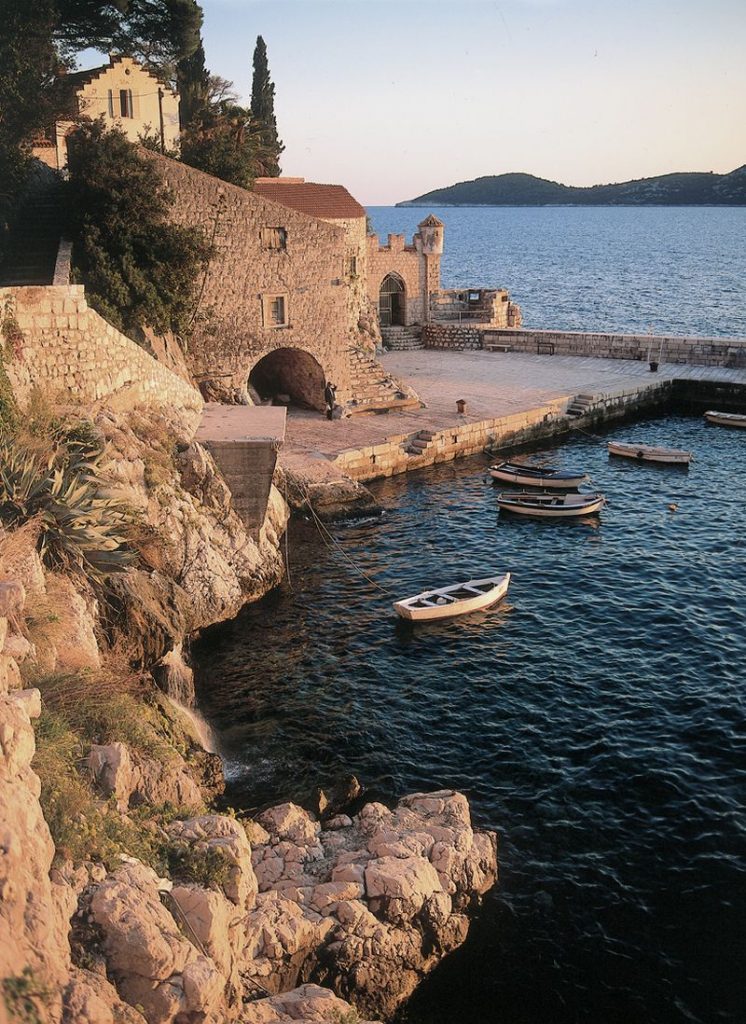
The beauty of nature and the dense vegetation make Trsteno one of the most attractive places to visit in the Dubrovnik region.
Trsteno has a long cultural tradition, and is home to the Gučetić (Gozze) family residence, once one of the most well-known families, who had a castle and estate here. The humble and learned Gučetić family has had a long line of poets and artists; they were also great lovers of nature, and they themselves planned and grew the ‘Arboretum’ of today, one of the oldest Renaissance parks on our coast.
Two gigantic plane-trees, several centuries old, attract the attention of all visitors and passers-by. Accommodation is available in private homes.
Information
Dubrovnik Tourist Board
Brsalje 5
20000 Dubrovnik
info@tzdubrovnik.hr
www.tzdubrovnik.hr
Tel: +385 (0) 20 312011
Fax: +385 (0) 20 323725 - Zaton
-
Zaton
Veliki (Large) and Mali (Small) Zaton are located in a picturesque environment, surrounded by inlets with sandy beaches.
Both locations are very pleasant for summer vacations. Accommodations are available both in resorts and private homes. There are several excellent restaurants in the towns.Information
Dubrovnik Tourist Board
Brsalje 5
20000 Dubrovnik
info@tzdubrovnik.hr
www.tzdubrovnik.hr
Tel: +385 (0) 20 312011
Fax: +385 (0) 20 323725 - Čilipi
-
Čilipi
This lovely Konavle town, with its large hillside stone church, has become an international meeting place for numerous tourists arriving on Sundays to observe traditional folklore performances. Held every Sunday (from March to late October and several times throughout the winter) from under clear blue skies, the musical and dance performances are enjoyed by locals and tourists alike.
Visitors may also visit the “Konavle Homeland Museum”, decorated as a Konavle home, which show beautiful examples of the Konavle folk costume, as well as artefacts and jewellery. Also available are a number of original handmade souvenirs, in particular some Konavle embroidery sold by women wearing traditional folk apparel. The tourist association organizes tourist accommodation in very comfortable homes.
Information
Konavle Tourist Board
Zidine 6; 20210 Cavtat
info@cavtat-konavle.hr
visit.cavtat-konavle.com
Tel: +385 (0) 20 478025
Fax: +385 (0) 20 479025 - Šipan
-
Šipan
Šipan is the largest island in the Elaphite archipelago, and is situated 17 kilometres from Dubrovnik. It is separated from the mainland by the Koločep Channel; 16.5 km2 (9.1 km long, 2.6 km wide). Between two limestone ridges, the taller (Velji Point, 243 m) on the northeast and the lower on the southwest, there is a valley where olives, prunes, vineyards, carob, almonds, oranges, and citrus fruits are grown. Tourism has a special place on the island. The sunken portions of the valley extend to the northwest to create the Šipanska Luka (Port of Šipan) inlet and to the southeast to create the inlet of Suđurađ. On the southeast extension of the tallest ridges is the small island of Ruda.
The main towns are Šipanska Luka (Luka) and Suđurađ. The island has ferry line connections to Dubrovnik. The island was first mentioned by its current name in 1371. The remains of Roman villas have been discovered in Šipanska Luka. There are numerous architectural monuments from the Middle Ages: the remains of Church of St. Peter on Velji Point (11th century), the Church of St. Ivan with its frescos (11th century, expanded in the 15th century) in Silova Sela, and the pre-Romantic Church of St. Michael (Mihovil) from the 11th century, a Romantic-Gothic house, a Gothic tower, and the Renaissance Church of the Holy Spirit from 1569, all built as part of the Benedictine monastery in Pakljena. During the 15th century on Šipan, summer homes were built by government officials in Dubrovnik.
At Šipanska Luka, there is the late Gothic Church of St. Stephan with a painting of Pantaleone (second half of the 15th century), and the Sorkočević family summer home stands out in particular (15th century). In the 15th century, a Gothic Rector’s Palace was constructed above Šipanska Luka, bearing bifora on its facade (an inscription from 1450 is written above the Gothic courtyard gates).
Information
Dubrovnik Tourist Board
Brsalje 5
20000 Dubrovnik
info@tzdubrovnik.hr
www.tzdubrovnik.hr
Tel: +385 (0) 20 312011
Fax: +385 (0) 20 323725







